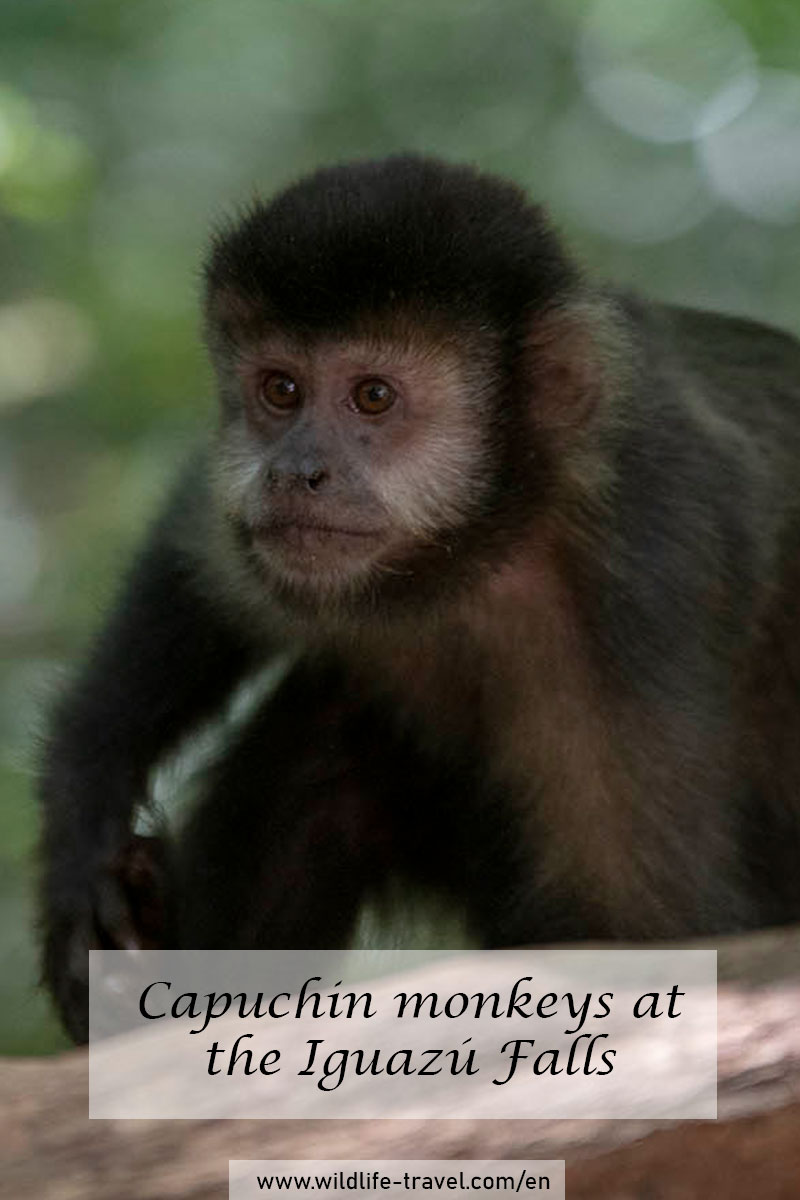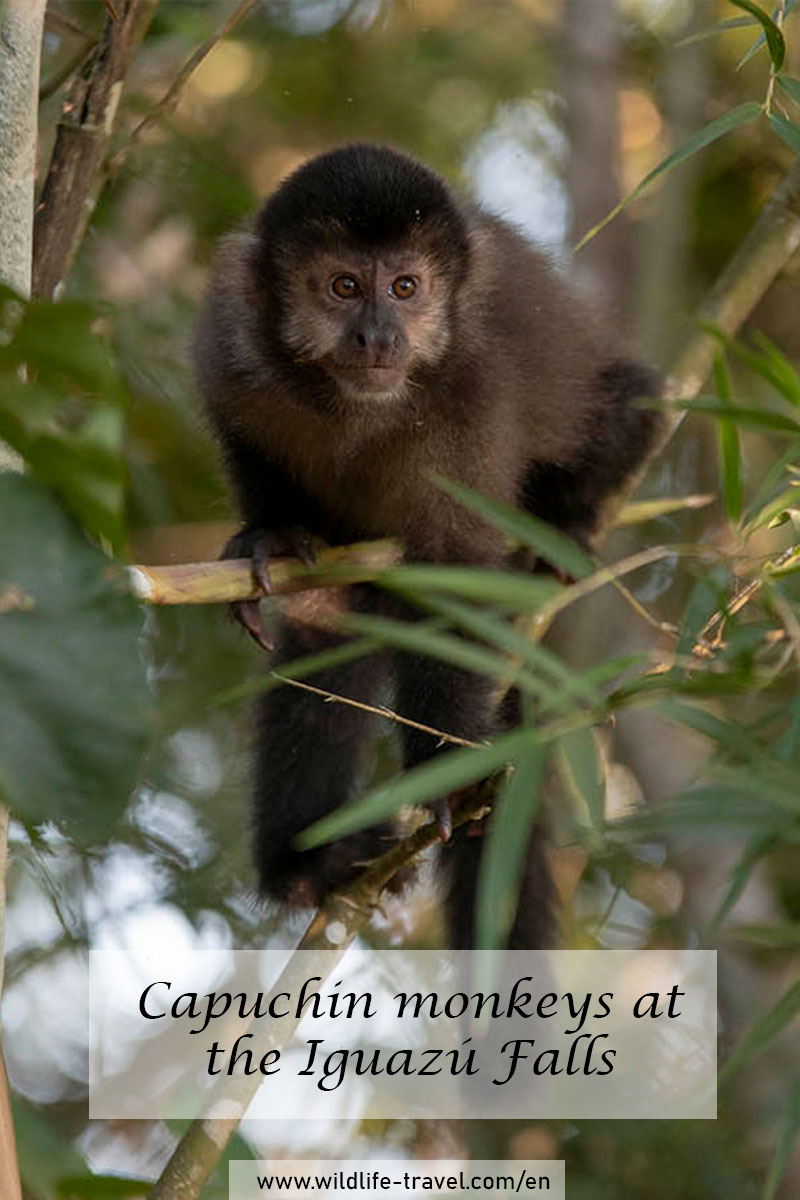The Iguazú National Park is a popular destination for many national and international people in South America. In this national park you can admire one of the most impressive waterfalls of the world: the Iguazú Falls. Surrounded by Atlantic Forest, the Iguazú National Park provides a home for many wild animals. In this blog entry I will tell you more about the place itself and the black capuchin monkeys I have seen.
The Iguazú National Park in Argentina
If you have already read my previous blog entry about South American coatis, then you know that the Iguazú National Park in Argentina became a UNESCO World Heritage Site in 1984 and protects together with the Iguaçu National Park in Brazil an area of about 240.000 hectares. The Iguazú National Park in Argentina is like the Iguaçu National Park in Brazil a popular destination for many national and international visitors as one of the most impressive and largest waterfall of the world - the Iguazú Falls (Spanish: Cataratas de Iguazú) - is situated within both national parks. The Iguazú Falls reach a length of almost 3 kilometers and a height of about 80 meters comprised of about 275 cascading waterfalls. Surrounded by lush Atlantic Forest, the Iguazú National Park became a recreational area not only for humans, many animals like tapirs, toucans, monkeys or ocelots also found a home in this stunning nature reserve.
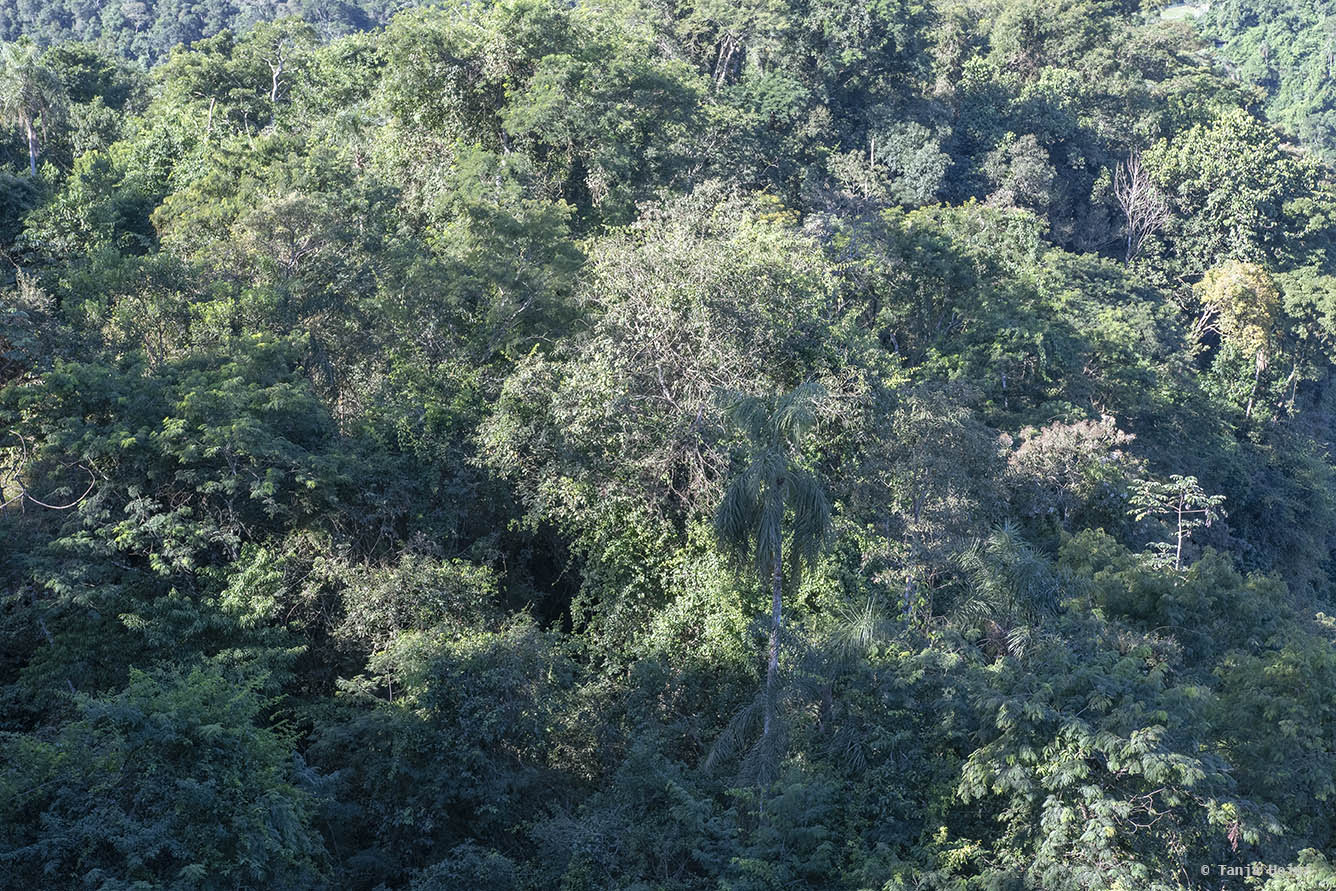
The Iguazú National Park is located in Northeastern Argentina close to Puerto Iguazú in the province Misiones and easy to reach from Foz do Iguaçu in Brazil. Below I will give you further information about how you can reach the Argentinian side of the Iguazú Falls from Foz do Iguaçu.
In the Iguazú National Park you can choose between several trails and an Ecological Jungle Train (Spanish: "tren de la selva") which will lead you to the most impressive point of the Iguazú Falls - the Devil’s Throat. The train starts at the Central Station (Spanish: Estación Central) in the entrance area and will stop at the Waterfall Station (Spanish: Estación Cataratas) and the Devil's Throat Station (Spanish: Estación Garganta del Diablo).
In the following photo you can see the train stop at the Waterfall Station.
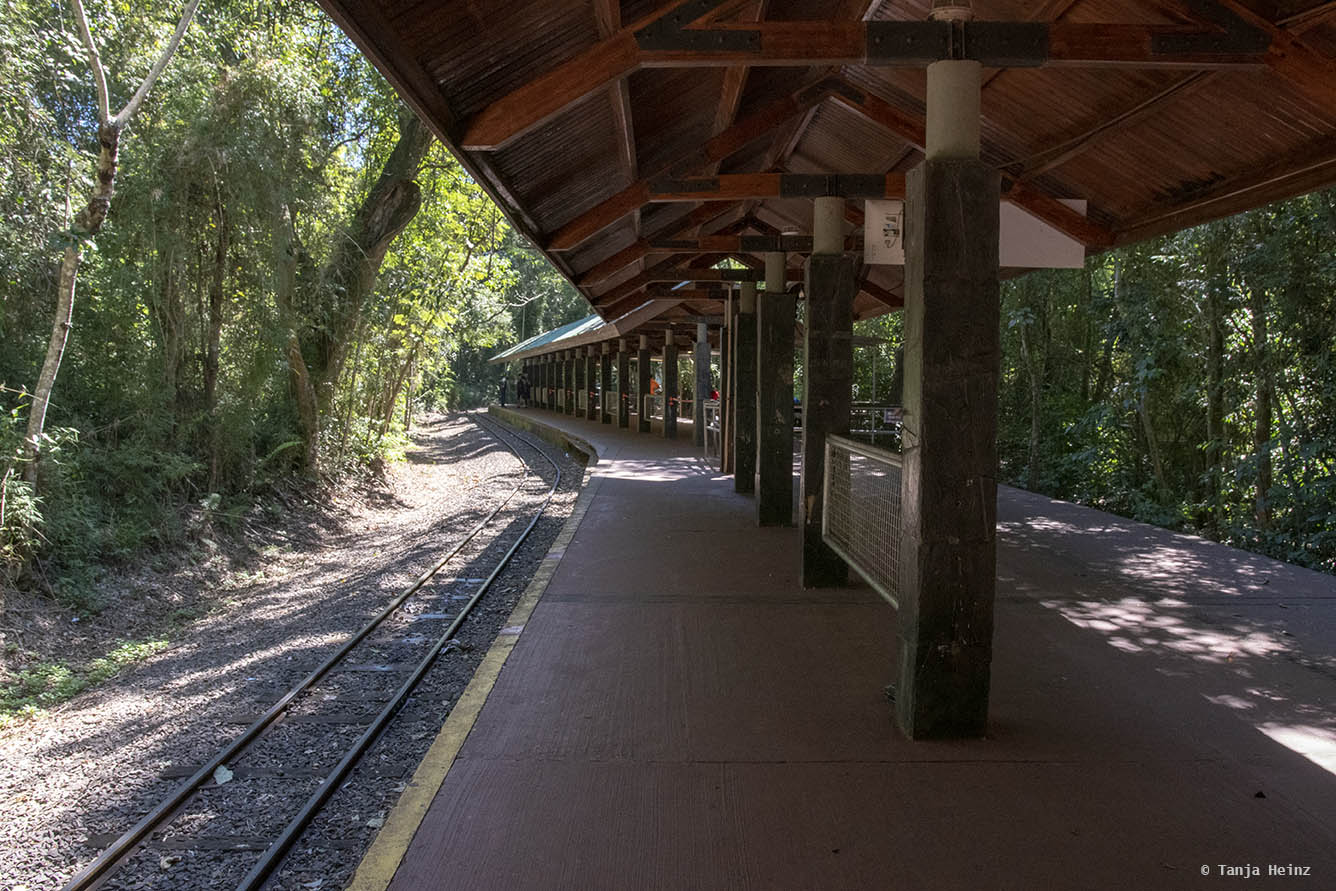
We took the train directly to the Devil’s Throat Station. There are several walking trails in the national park, however, if you wish to see the Devil’s Throat you need to take the train. When you get off the train at the Devil's Throat station you have to walk a few hundreds of meters. Then you will get directly to the most spectacular view of the waterfalls. As it was quite wet at the Devil's Throat, I could not take any photos from there. But instead, I could enjoy the moments without my camera, admire the beauty of the waterfalls, getting wet and feeling small by the force of the waterfalls.
Tip: There is a walking trail between the Central Station and the Waterfall Station. If you have only one day to explore the Iguazú National Park I would recommend to skip this trail and rather spend more time at the Upper and/or Lower Circuit.
In the following two photographs you can see the path to the Devil’s Throat and some South American coatis.
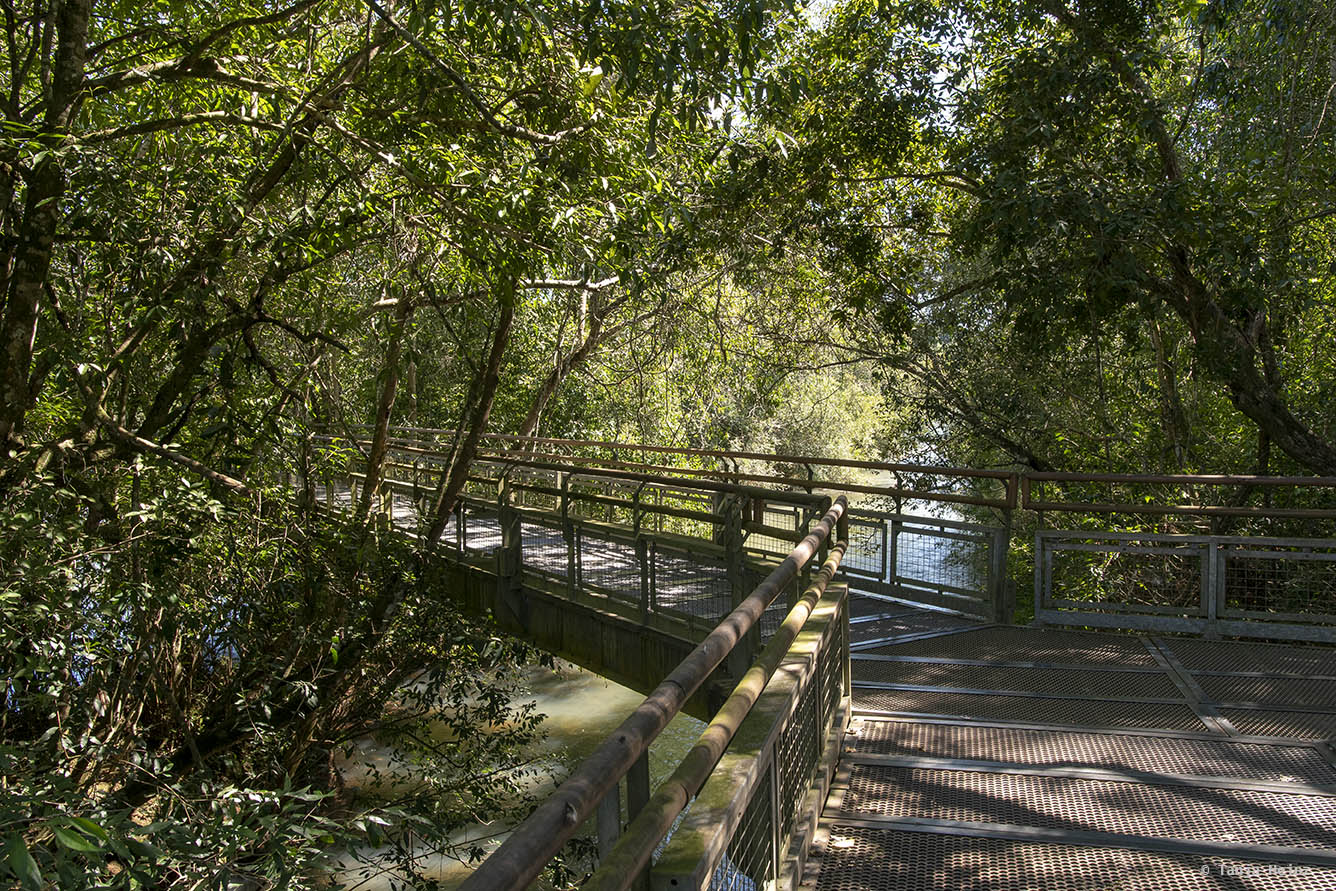
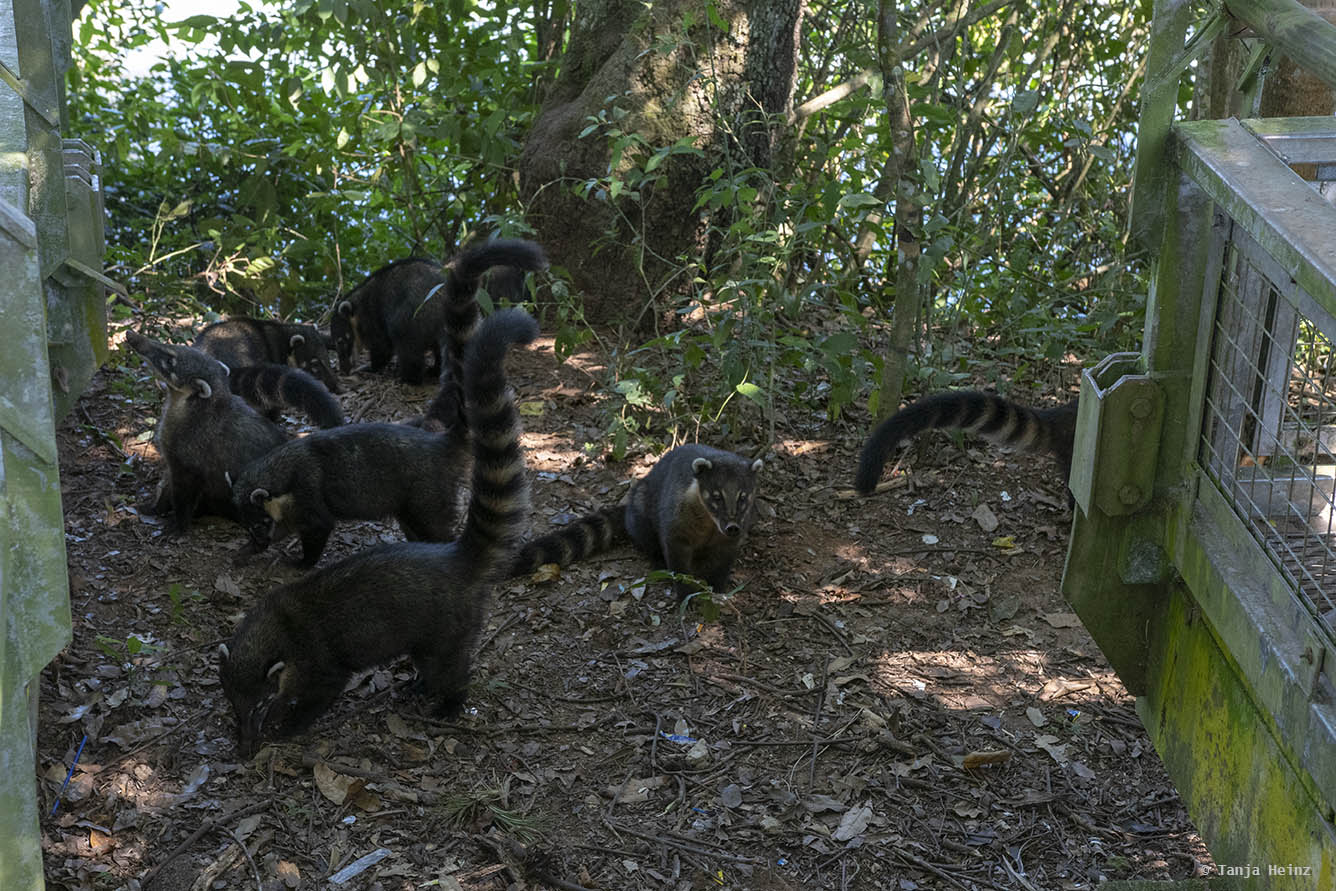
To give you at least some impressions of this spectacular place here are some views just before the Devil’s Throat (but you will get more impressive views directly at the Devil’s Throat).
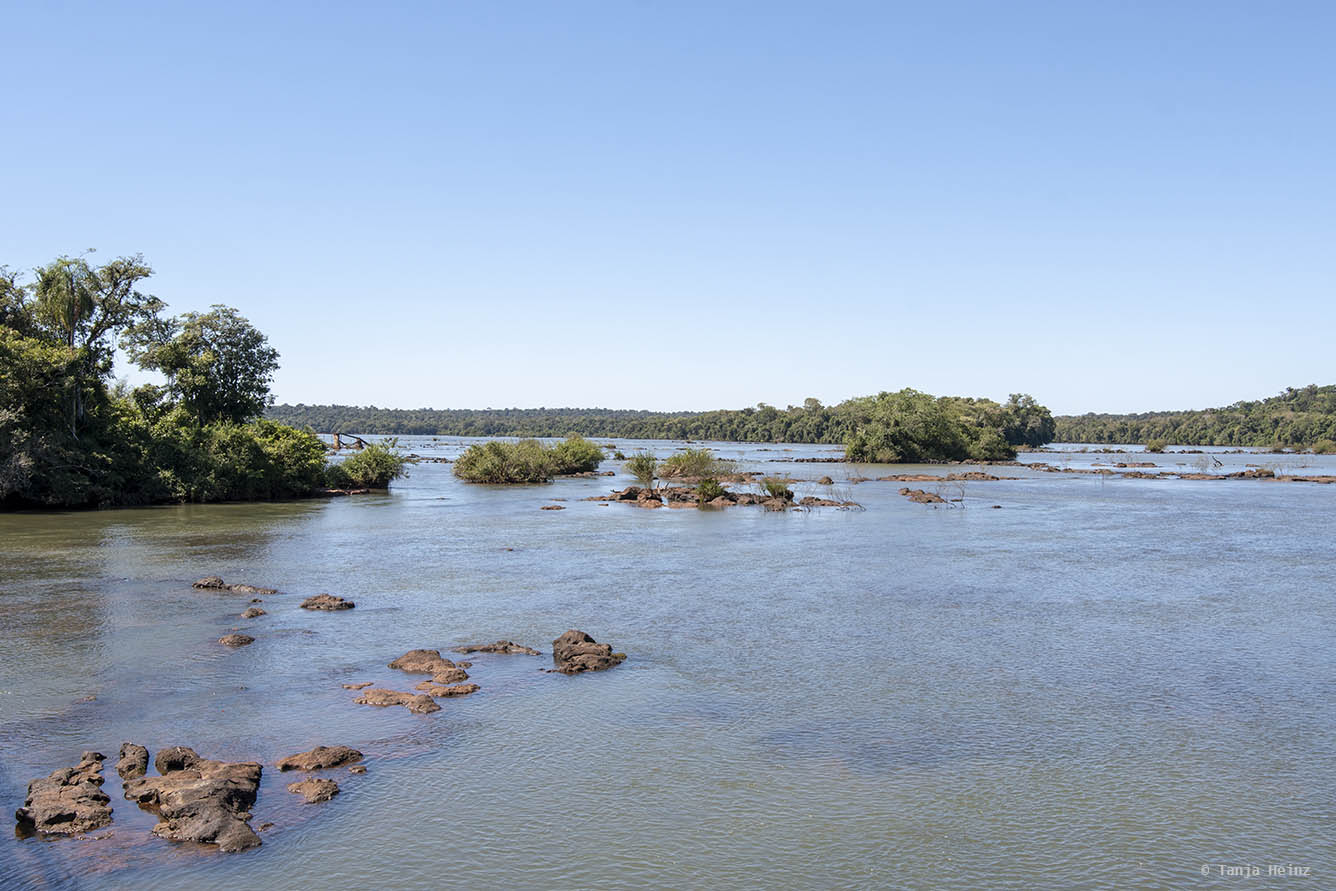
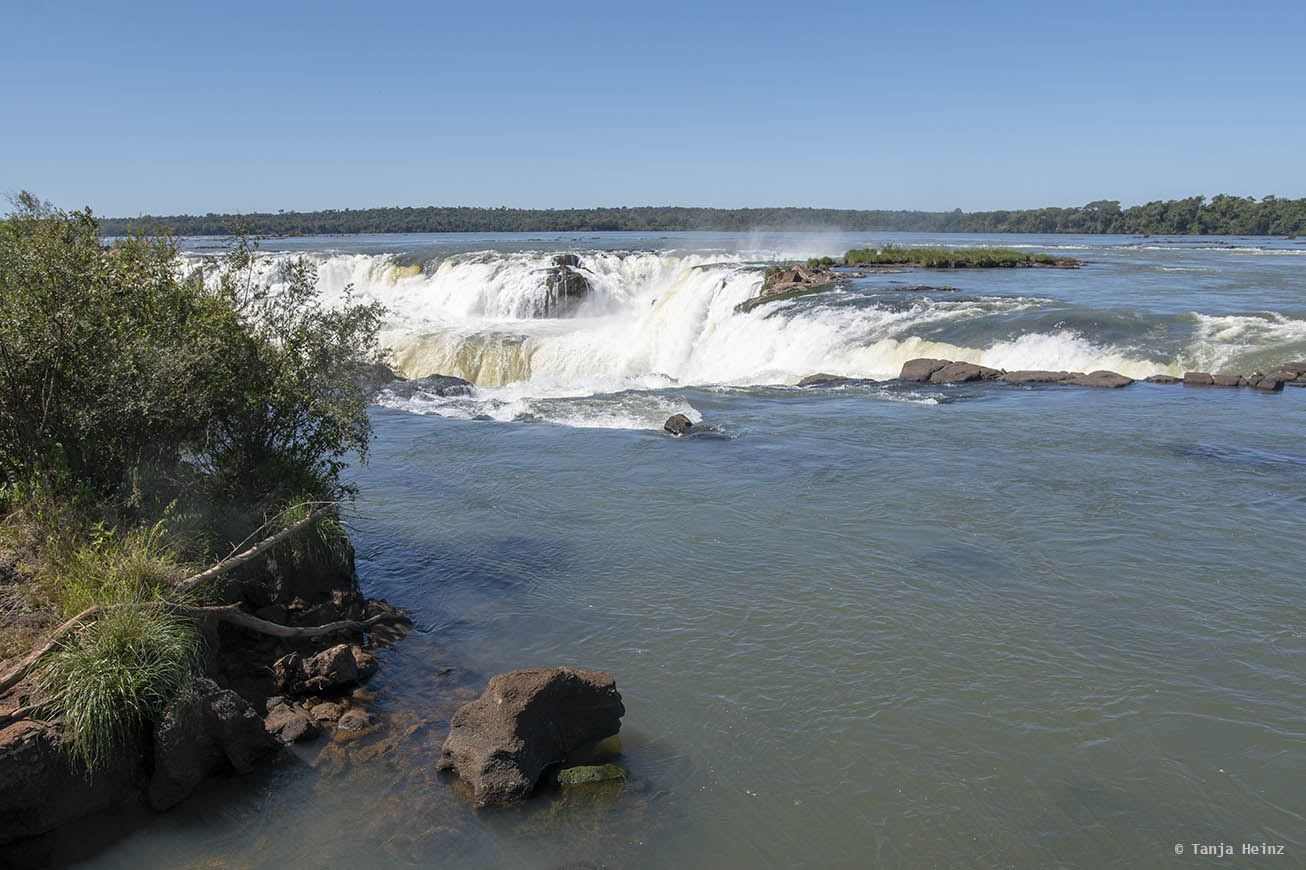
Along the path we saw a William’s South-American side-necked turtle (Phrynops williamsi) and some catfishes in the water. The turtle was sitting on the larger stone (very small on the photograph) and sunbathing. By the way, many of the fishes that live on the upper side of the waterfalls are unique and differ from fishes of the lower side.
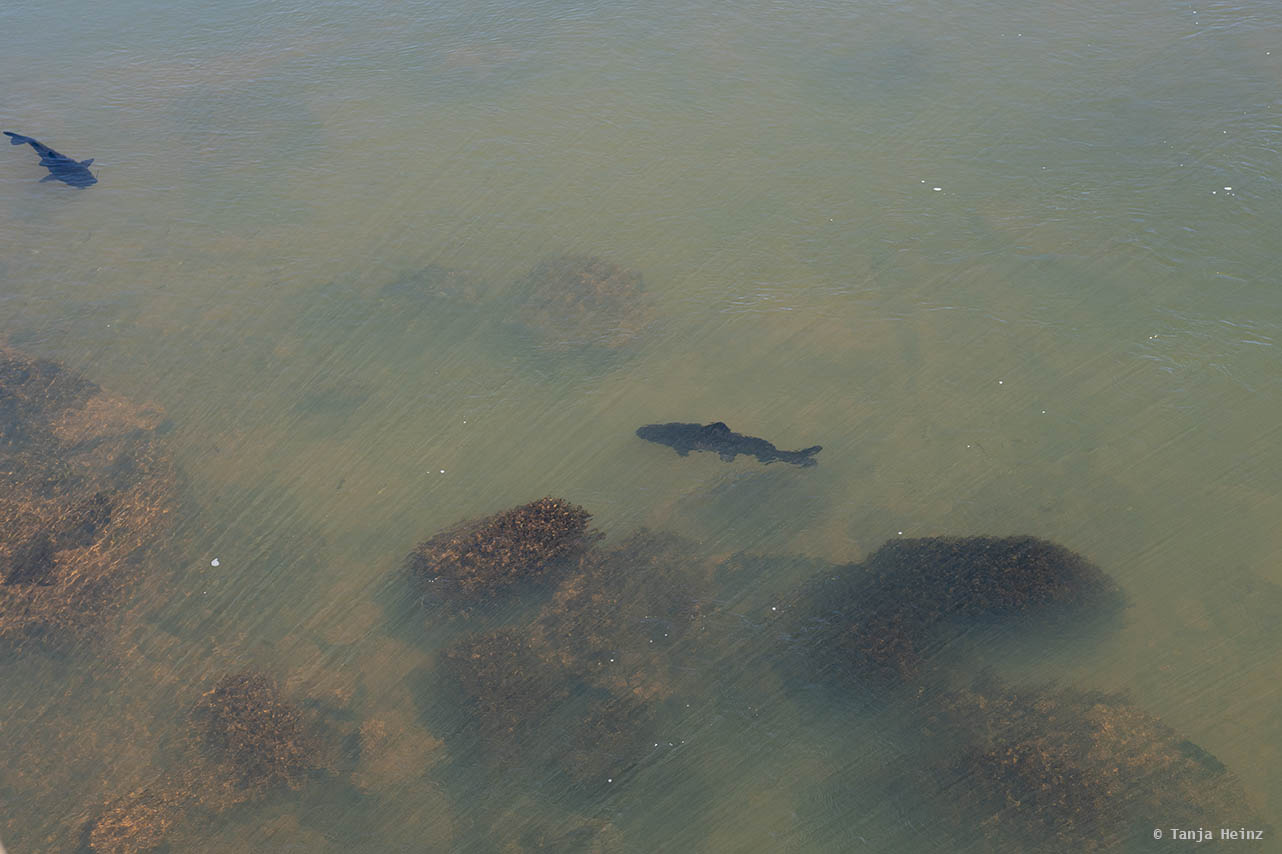
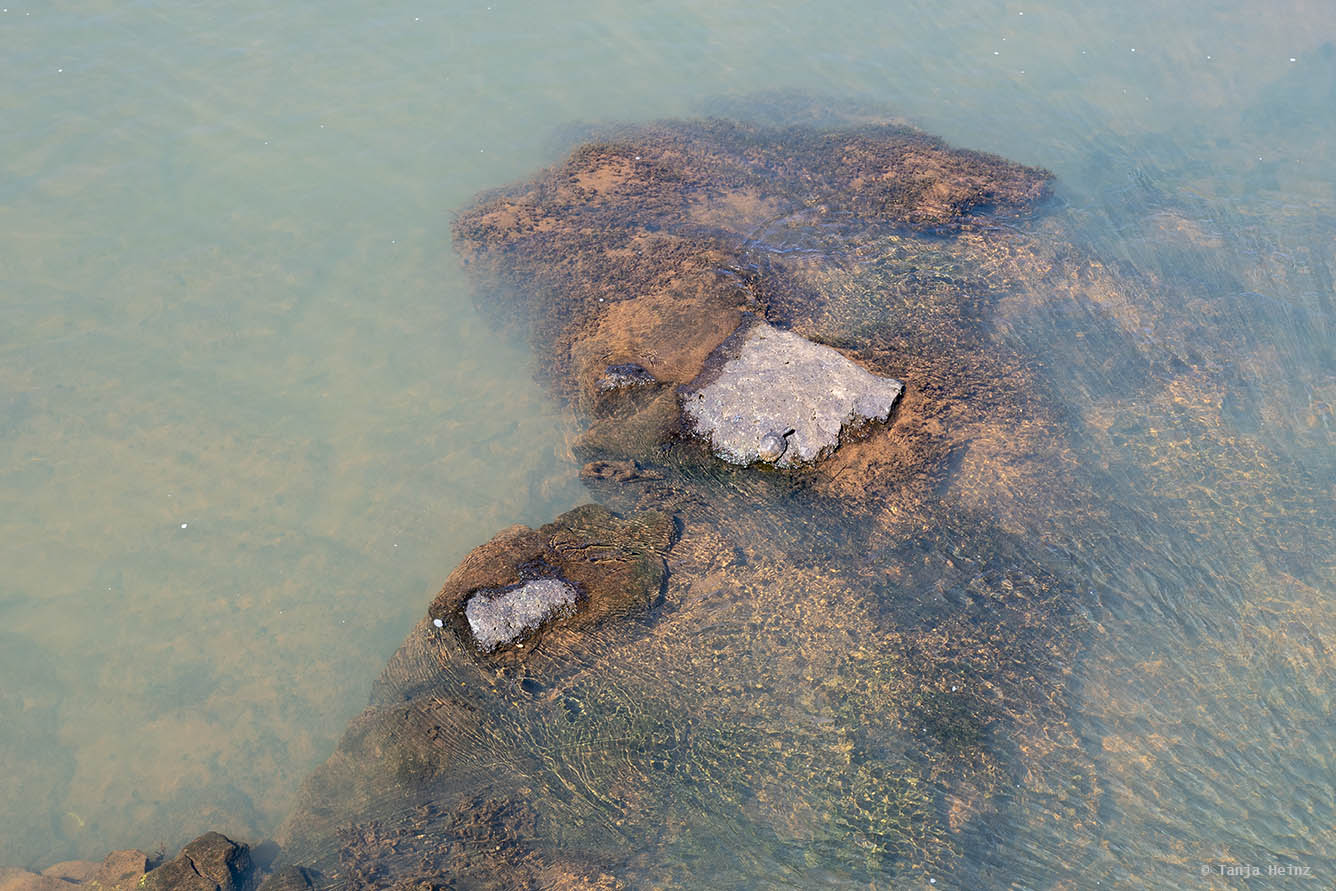
The area around the Devil’s Throat is spectacular, but there are two more trails in the national park where you get some more wonderful views onto the Iguazú Falls. These tails are the Upper Circle (Spanish: Circuito Superior) and the Lower Circle (Spanish: Circuito Inferior). You will read and see more about these two trails below. After seeing the Devil’s Throat and spending some time there we headed back to the Waterfall Station where we found a group of monkeys.
Black capuchin monkeys
The monkeys we saw in the Iguazú National Park were black capuchins (Sapajus nigritus). It was not the first time that we saw black capuchins in Brazil. My first encounter with these monkeys was in the Itatiaia National Park in the state Rio de Janeiro where a group of black capuchins crossed the street just in front of us. The first black capuchin monkey we saw in the Iguazú National Park left its tree to get to the other side of the path.
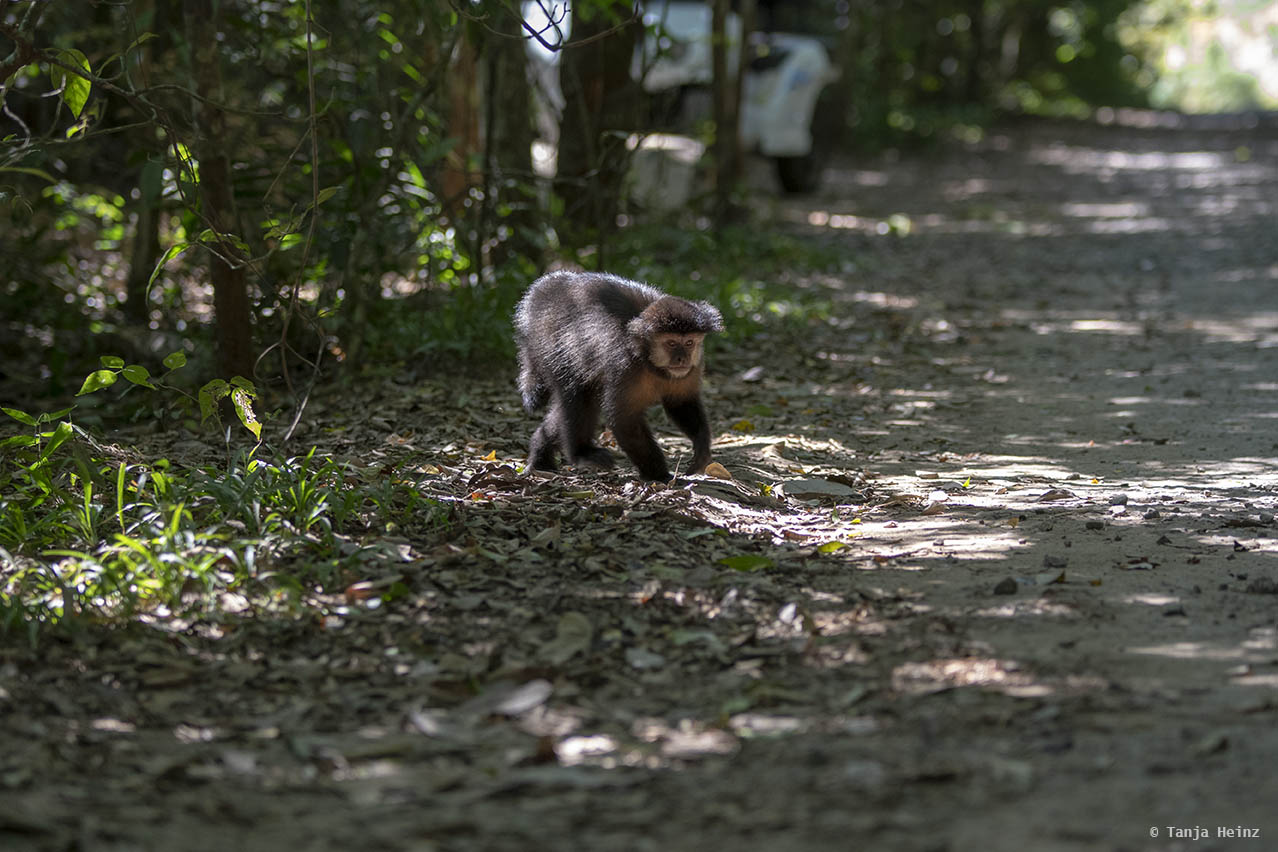
Of course, we were not the only ones who spotted this black capuchin monkey. Some visitors already prepared themselves to get some photos of the monkey.
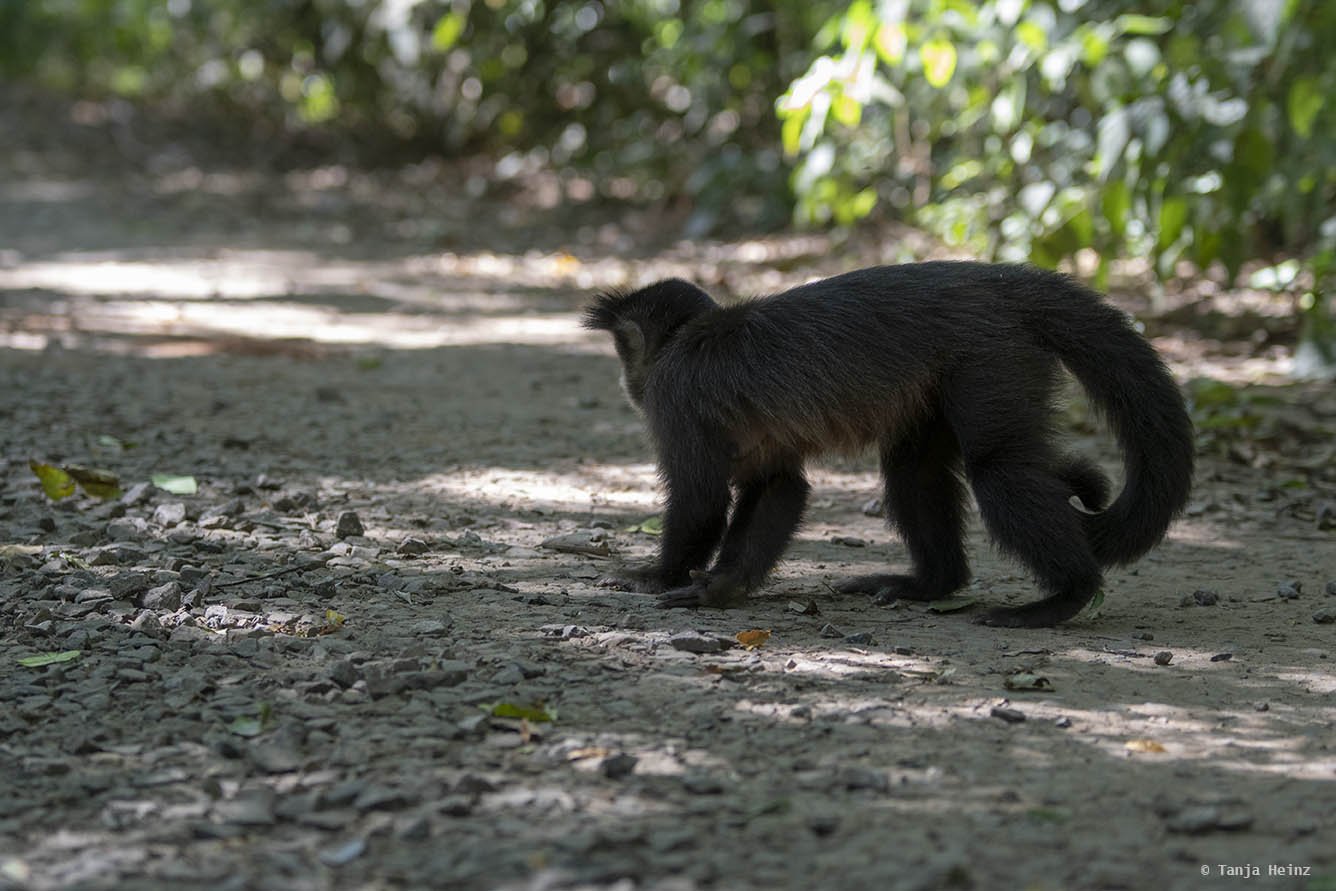
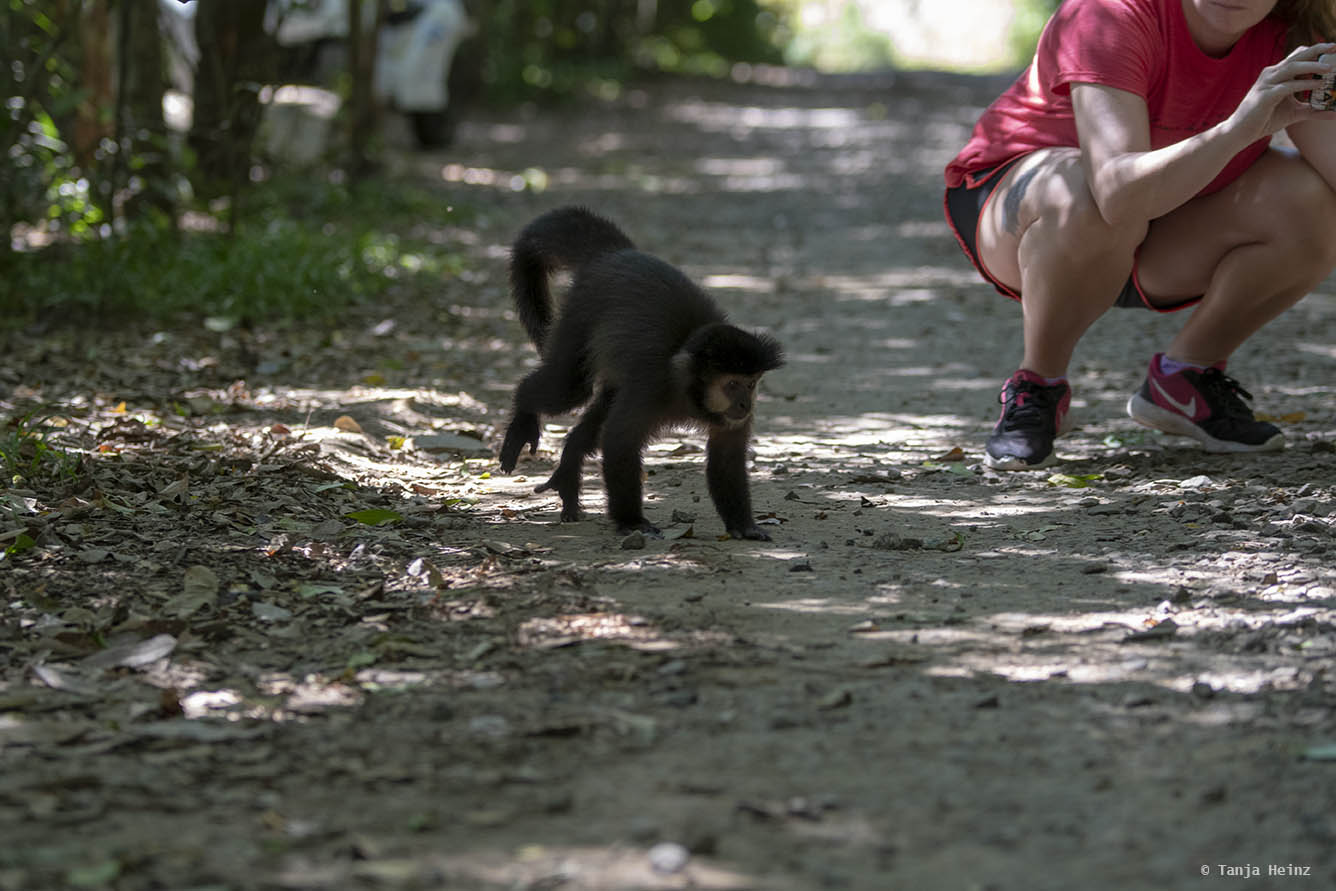
The whole experience with these monkeys was similar to the animal encounter with the South American coatis the other day. I was happy to meet them, but it did not really feel like a true wild animal encounter. Similar to South American coatis, the black capuchins were looking for humans or food, respectively. I thought about my encounters with the black capuchins in the Itatiaia National Park, but also with the crested capuchins in the Reserva Natural Vale in Espírito Santo. There was such a big difference in the behavior of the groups. At least I observed this in the short amount of time I spent with them. In the Itatiaia National Park they kept their distance, in the Reseve Natural Vale the monkeys were quite shy, but in the Iguazú National Park they came quite close. They came so close that one black capuchin monkey even stole a hamburger from a visitor.

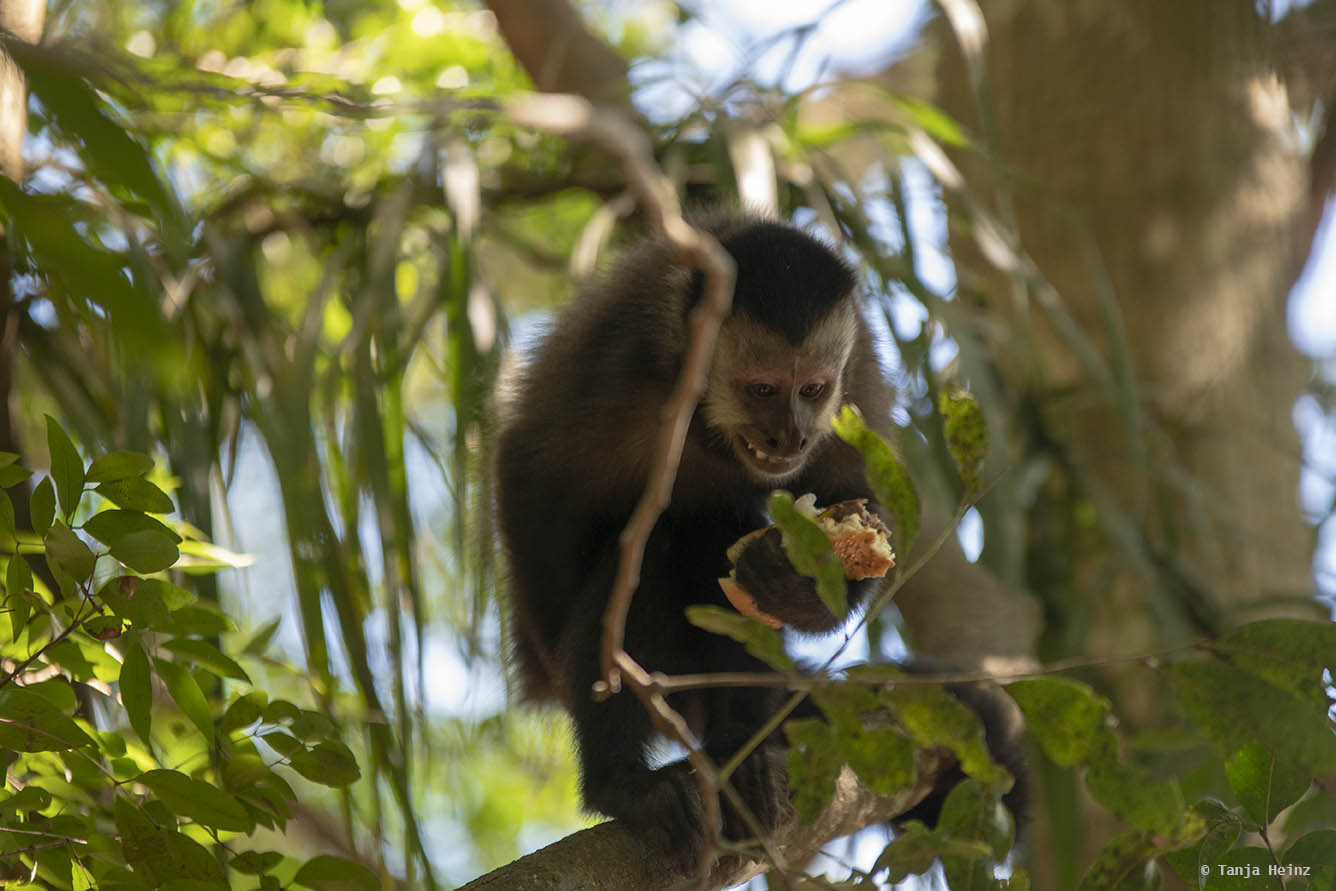
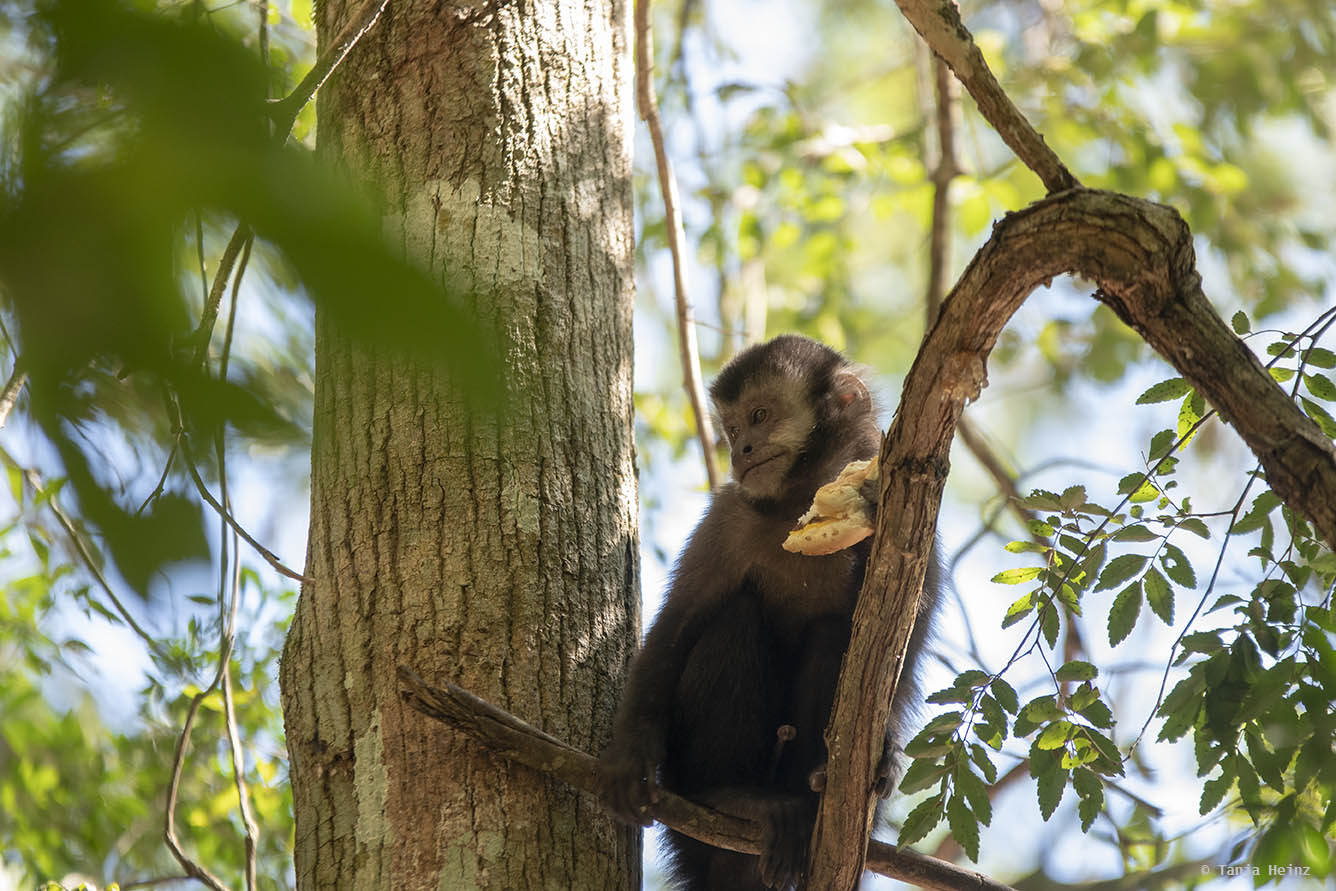
The monkey was nervously defending its precious food item against other members of the group. However, the tip of the iceberg was when a visitor approached the monkey to touch and pet him.
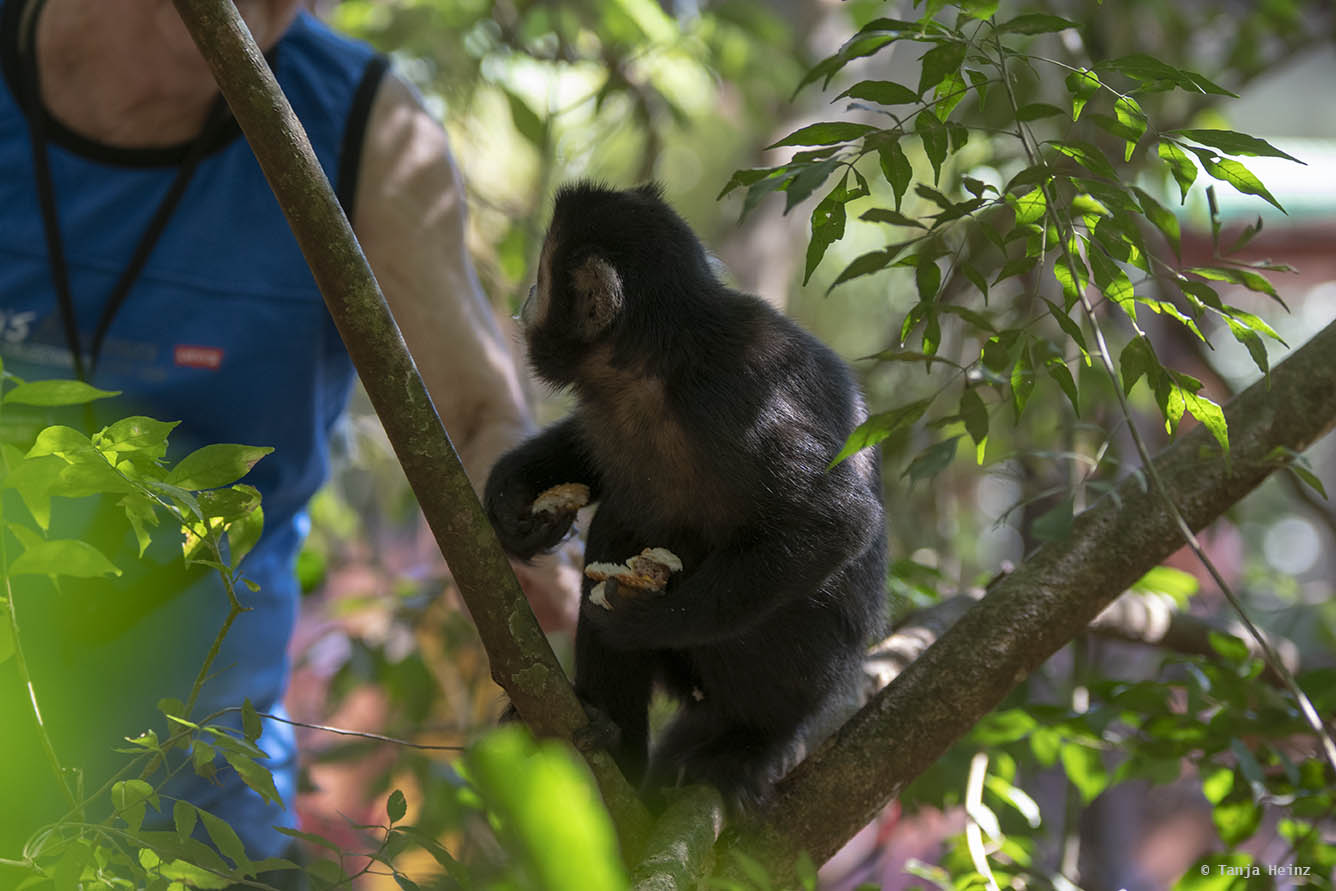
Can’t they read that it is prohibited to touch or feed wild animals?
Important: Please do not feed nor touch wild animals like black capuchins or South American coatis. You can ready everywhere in the national park that feeding or touching wild animals is prohibited. We are only visitors and should respect the rules of the national park and all wild animals.
The monkey felt uncomfortably (who wouldn’t?) and left the tree. Unfortunately, this was not the only annoying moment during this animal encounter. Later on a women threw some biscuits to the monkeys. When another visitor told her not to do so, she couldn’t understand and kept feeding the monkeys. I do not understand why people cannot understand that black capuchins in the Atlantic Forest are wild animals and should not be fed.
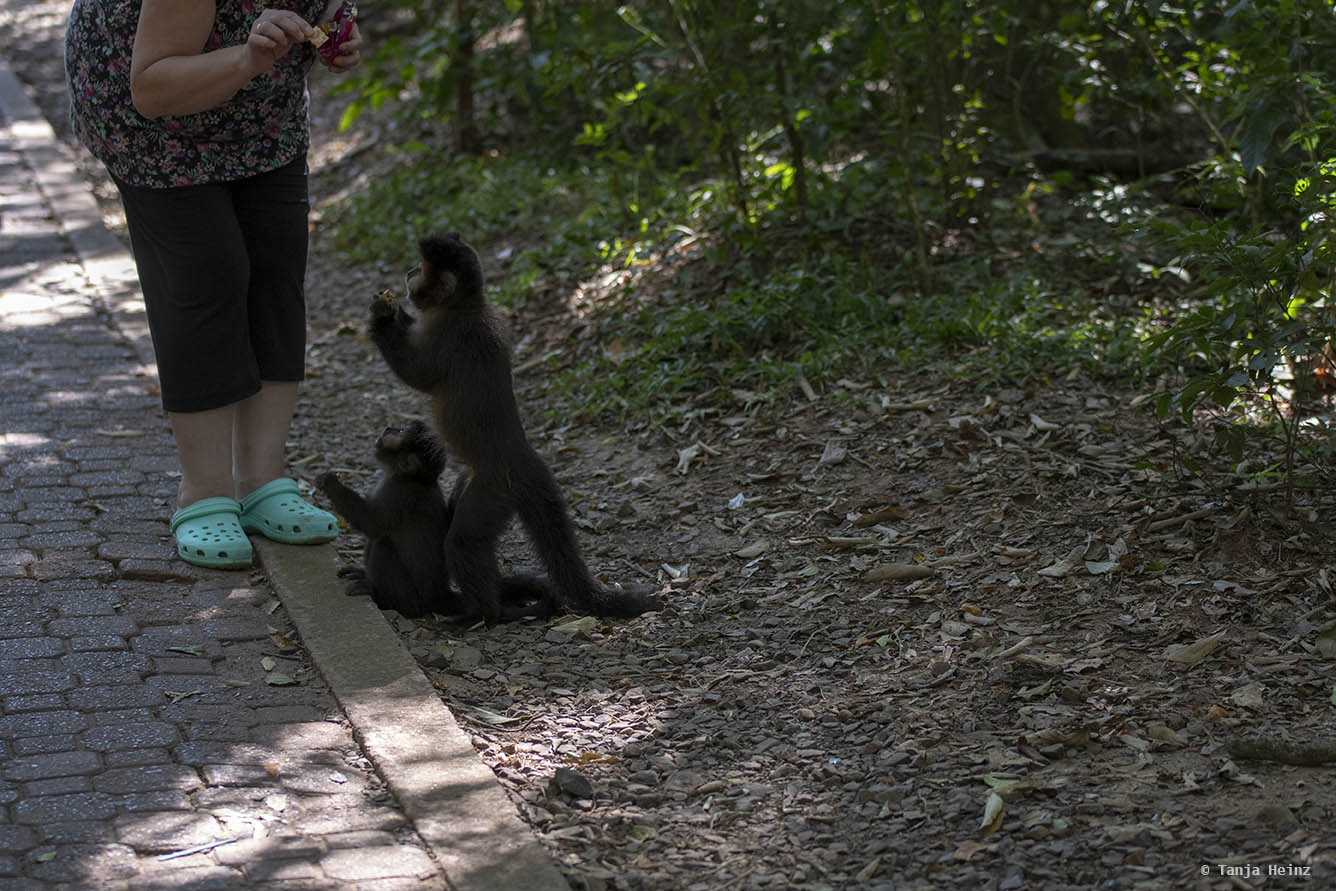
The monkeys left with the biscuits in their hands and ate them while sitting on branches in the forest.
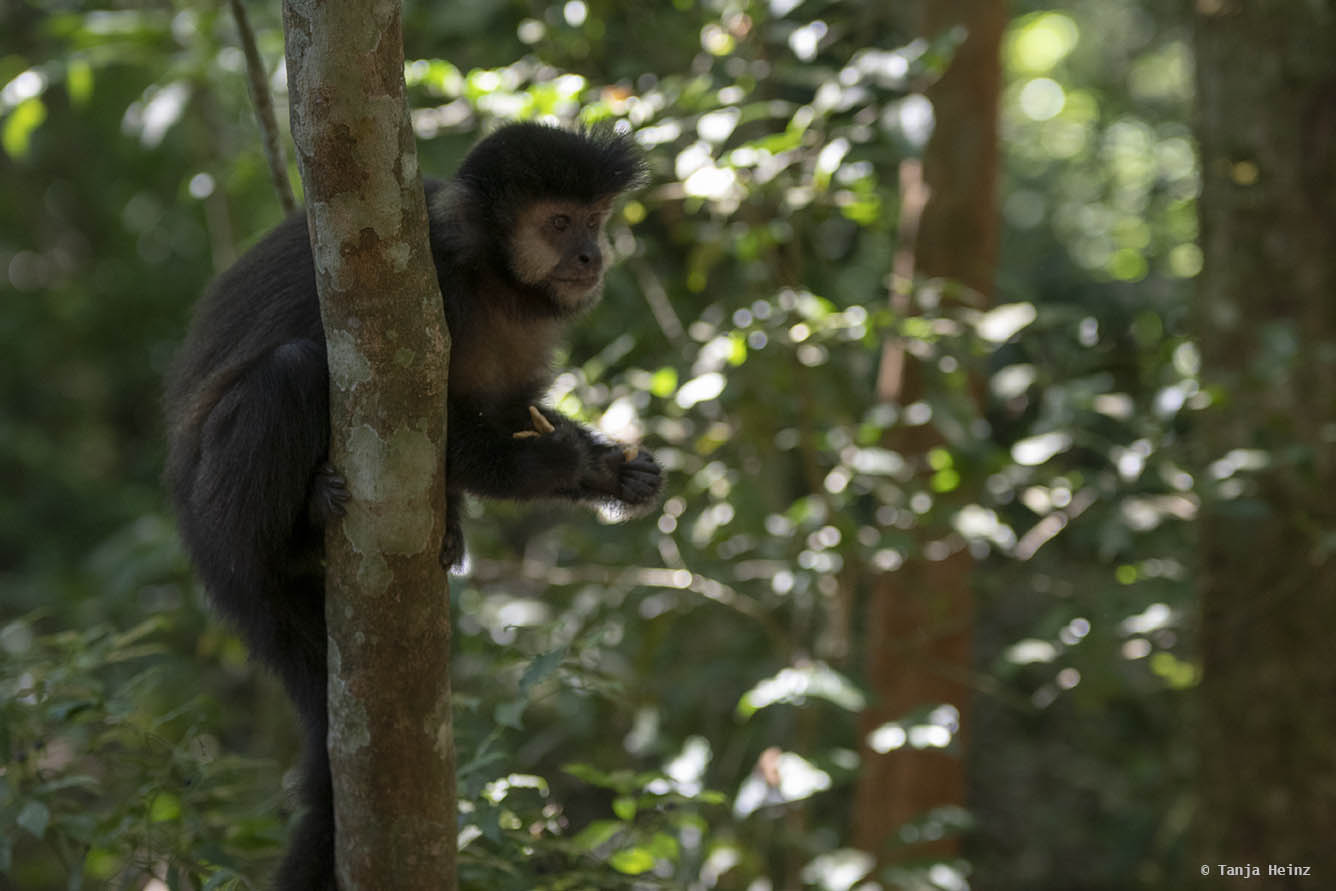
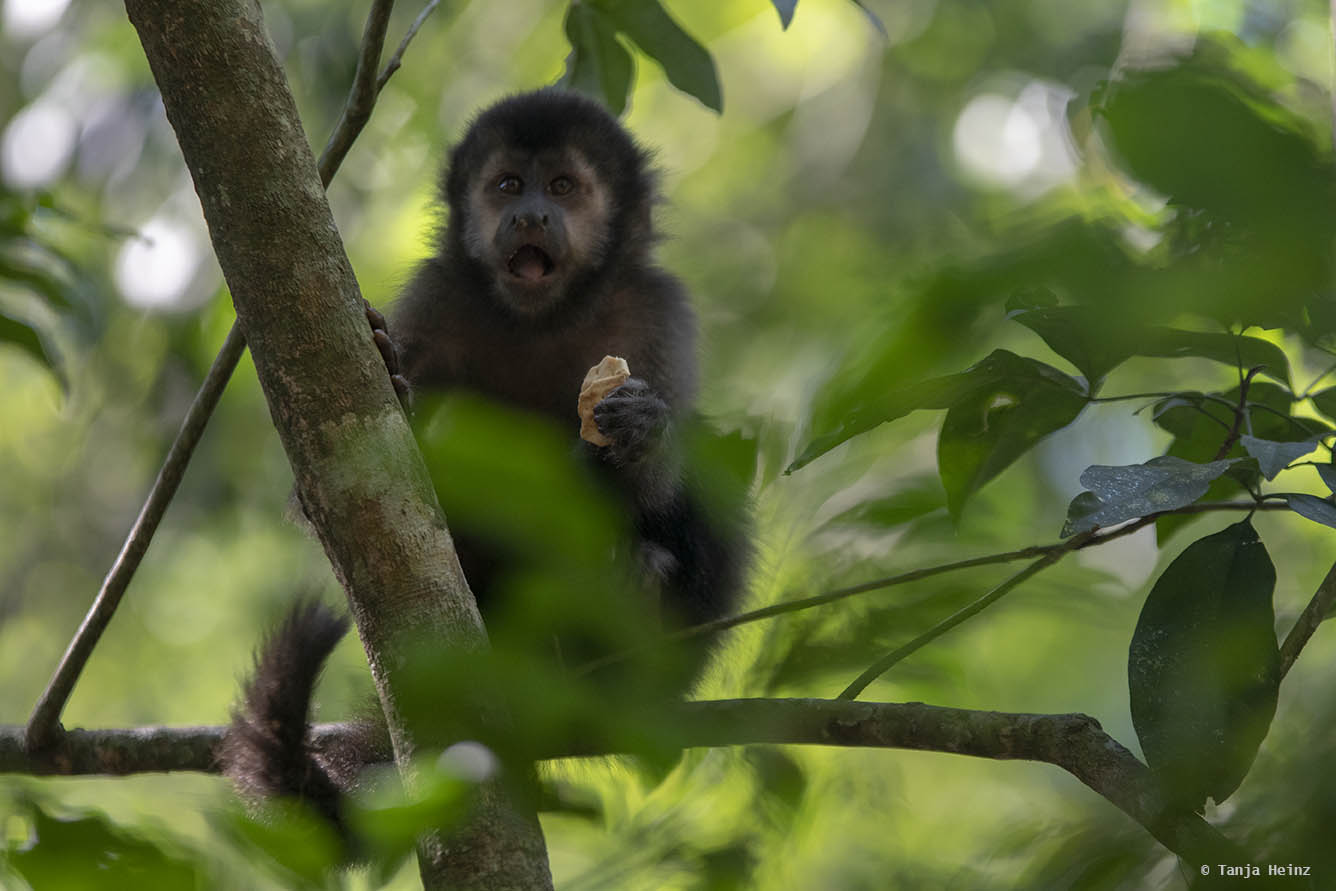
I was in the middle of all this and feeling quite uncomfortably. Should I leave?
In some moments the black capuchins were surrounded by large groups of people. Sometimes people were standing just in front of them, but the monkeys did not leave. The animals were not shy at all. I thought, maybe the monkeys were looking for all this attention? I do not know this monkey group, but my impression was that the animals didn't feel troubled. But anyway, the whole situations was weird as apparently the monkeys were looking for interactions with us visitors (as this meant food...).
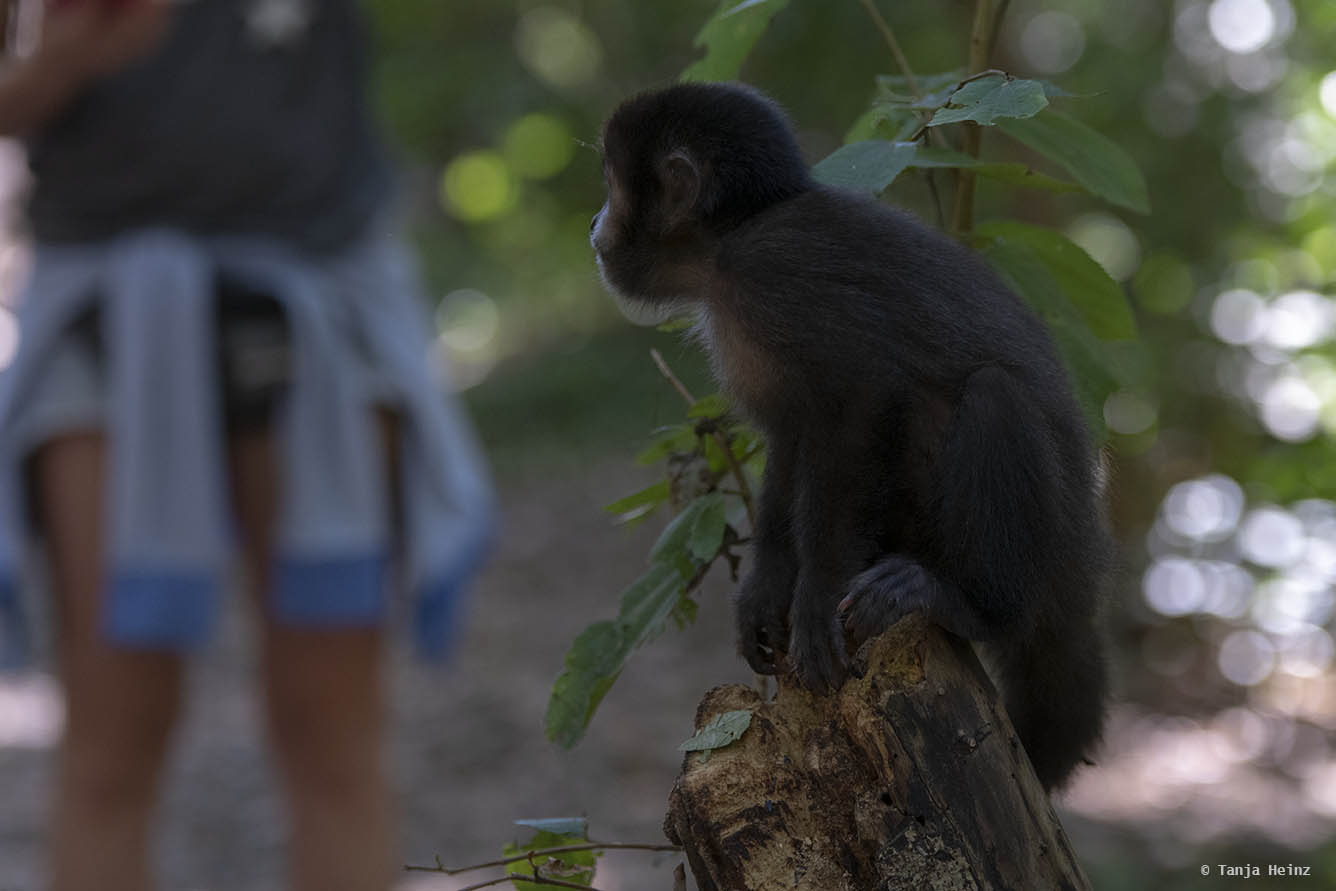
I decided to stay, but I left the largest gatherings of people. I was looking for monkeys which were avoiding too many people. And there were some of the group in the forest.
Some of them were relaxing on branches.
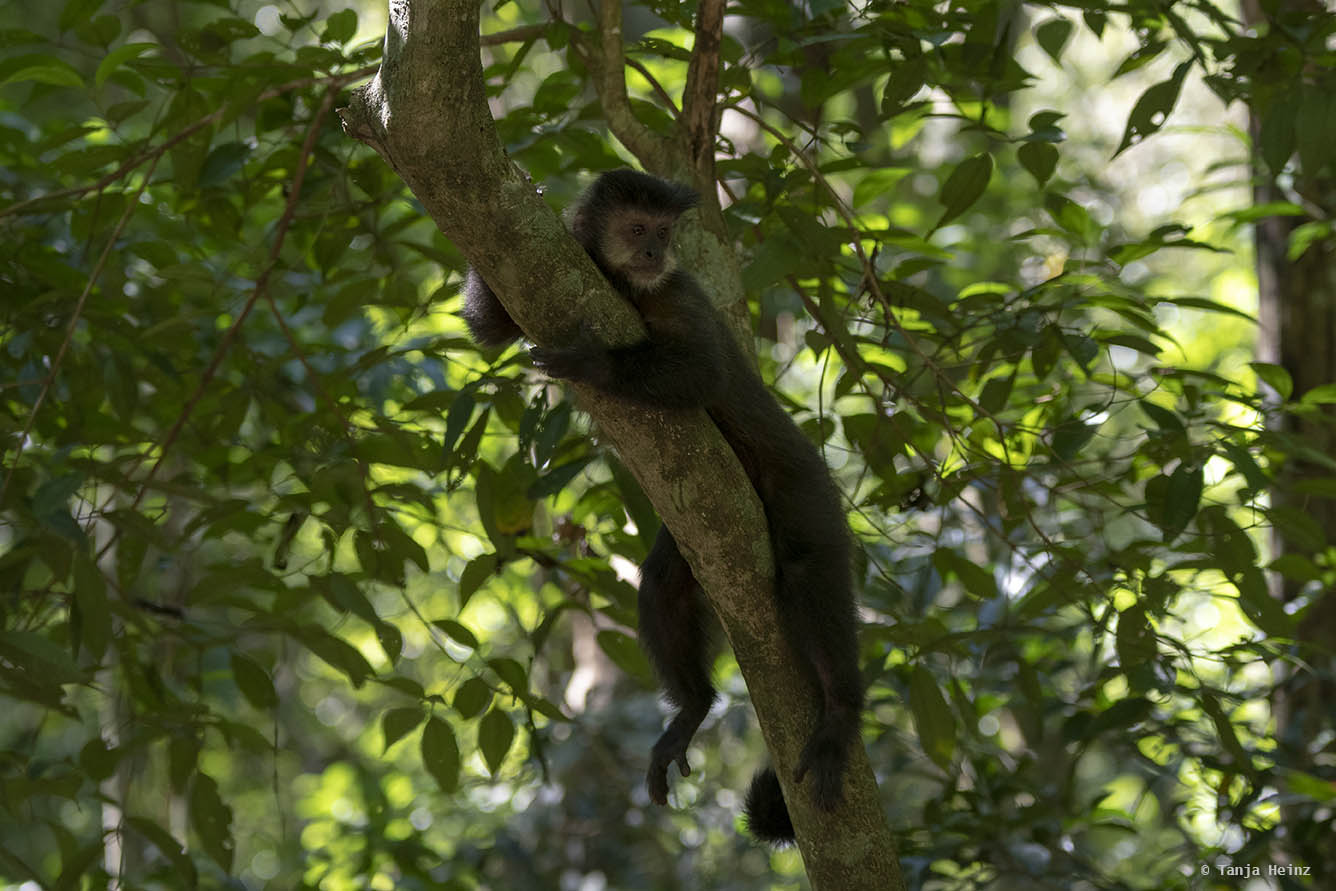
Many of the black capuchins were relaxing in the shadow of the hot midday sun, but couldn't really settle down for a long time... Was it because of us visitors?
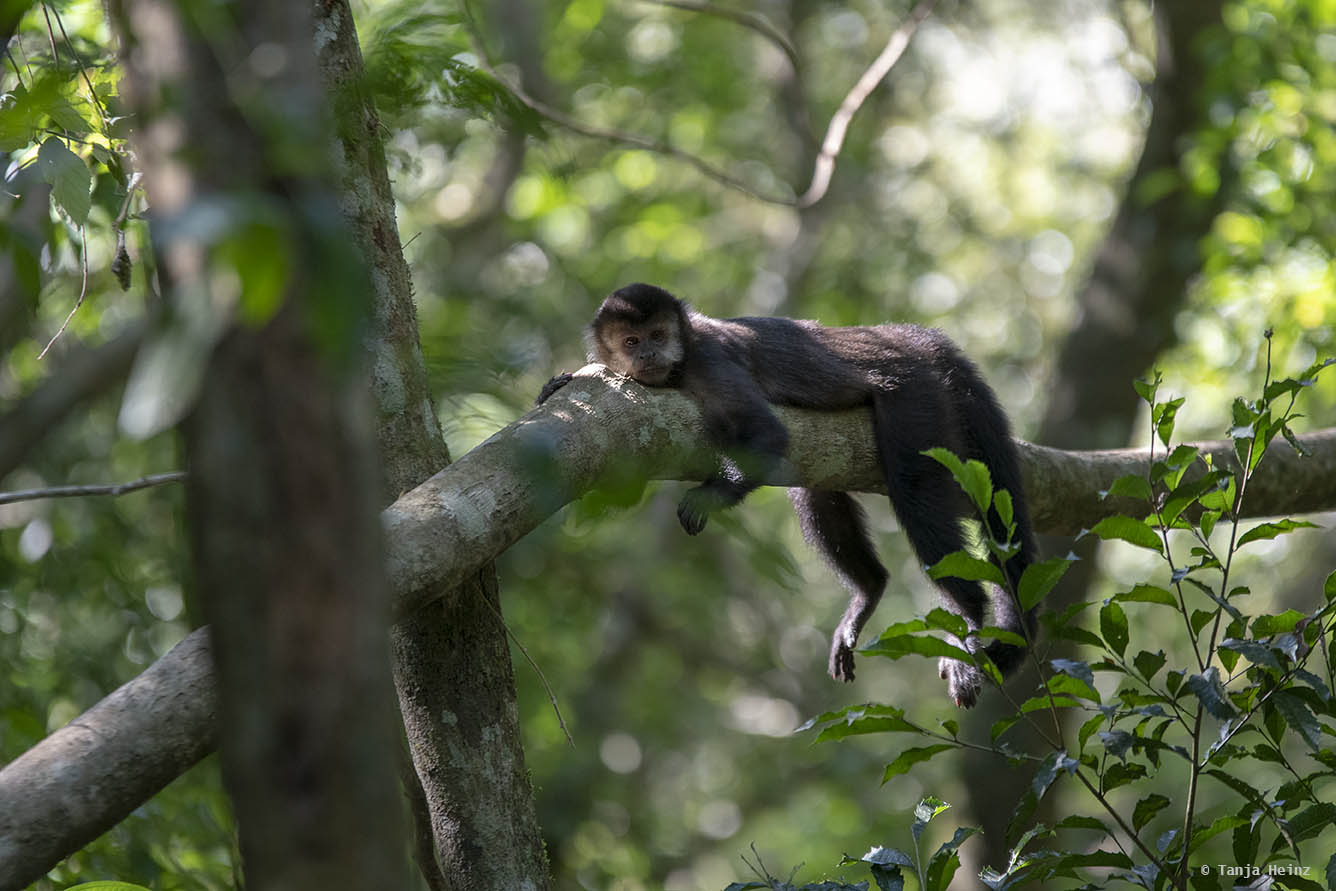
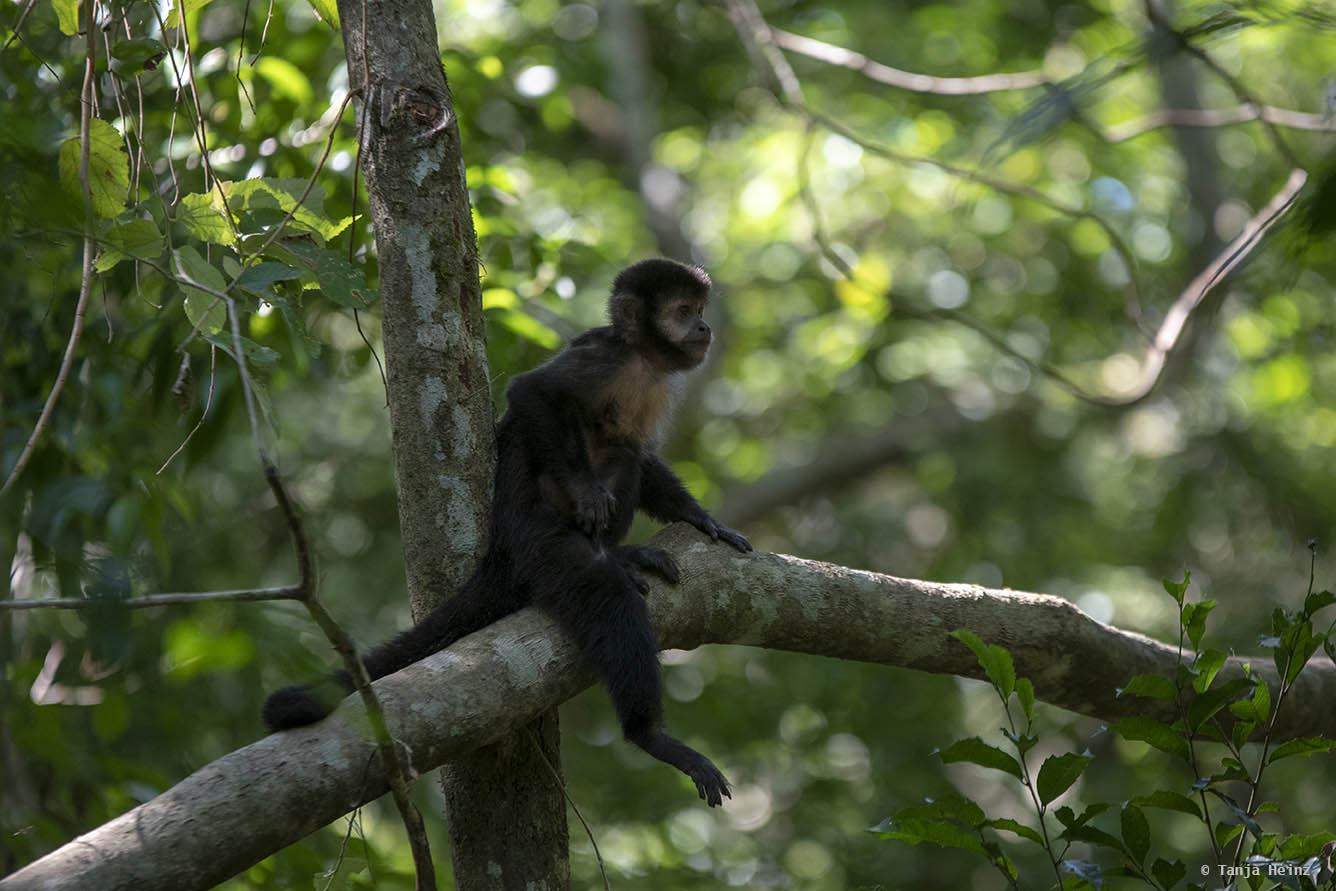
More and more people left the group of monkeys. Should I leave now, too?
I decided to stay a little bit longer in order to observe the animals quietly. I tried to be as inconspicuous as possible. I’m not sure if I reached this as these monkeys are very intelligent. But on the other side, I was standing quietly on the path looking into the forest. The only move I was doing was the one with my camera.
Although most visitors had left, some of the black capuchins remained on the ground. Maybe they were expecting more food from me?
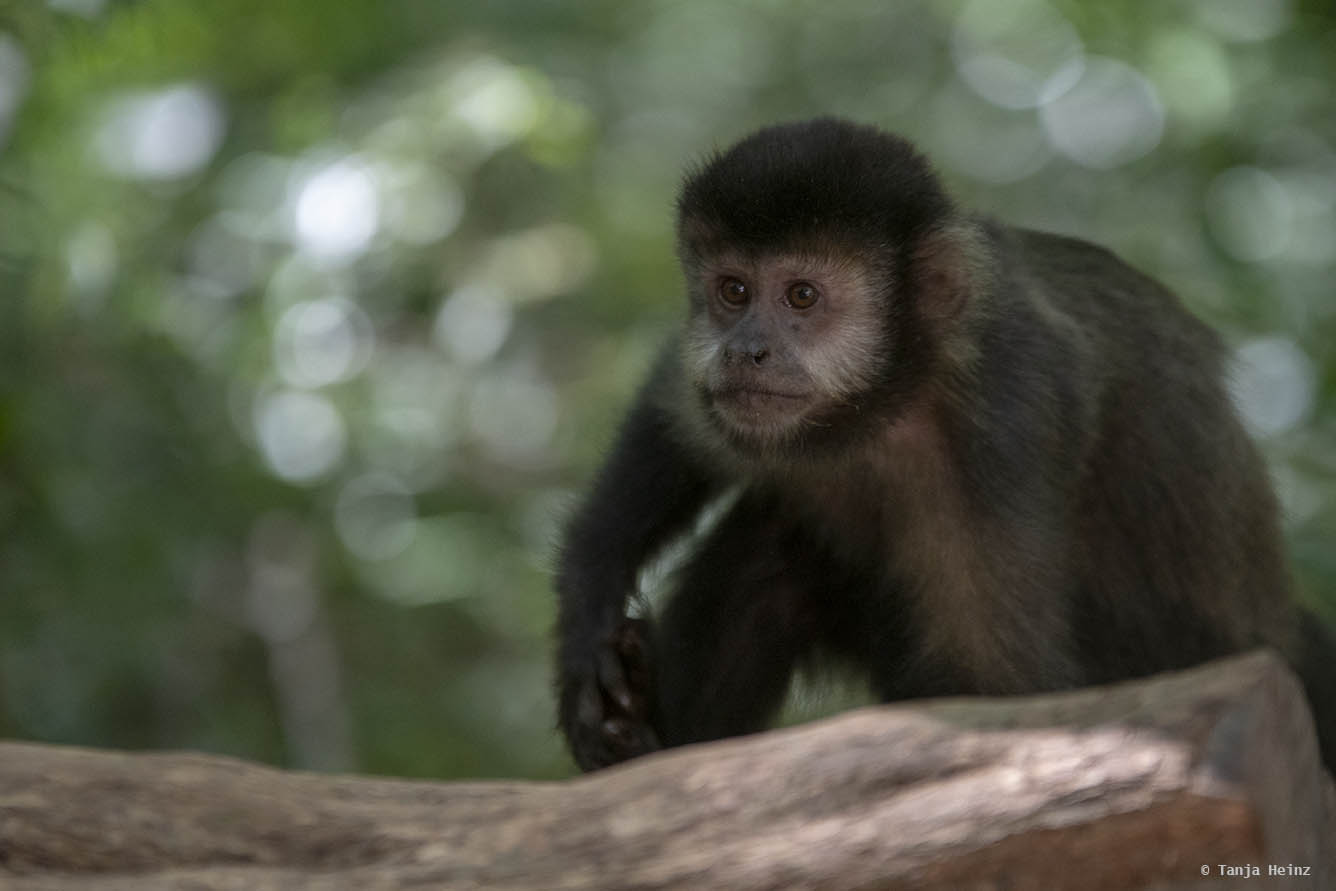
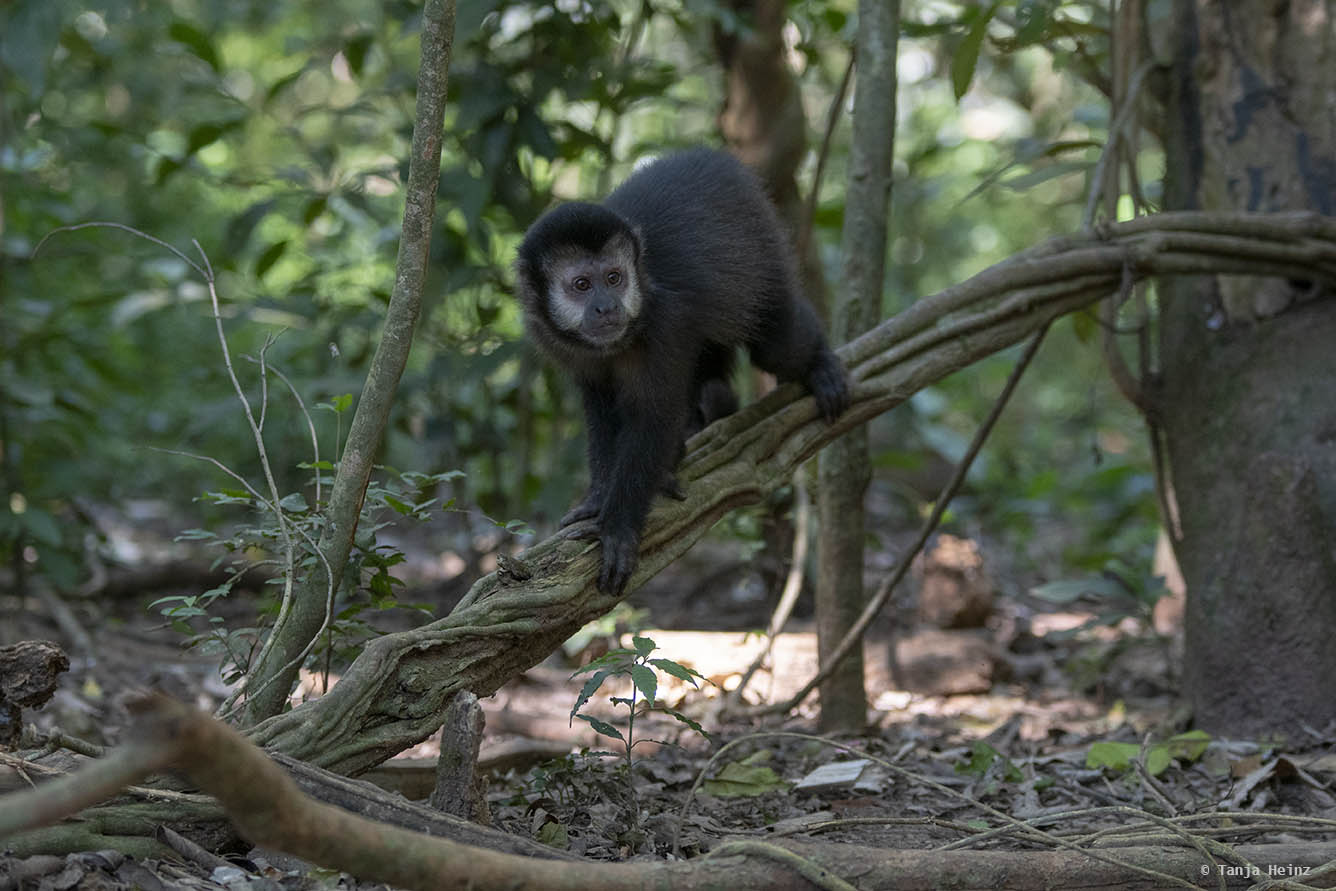
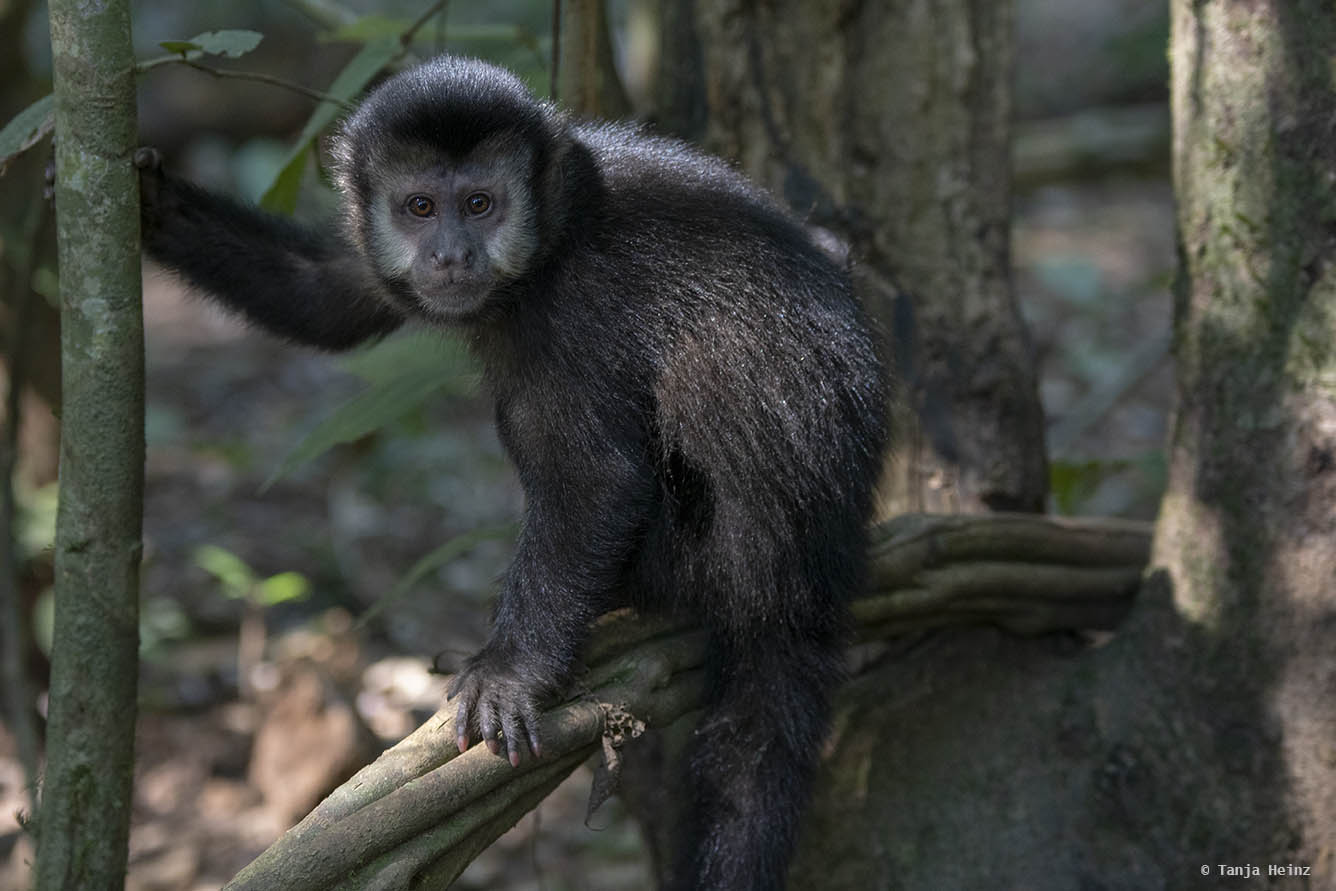
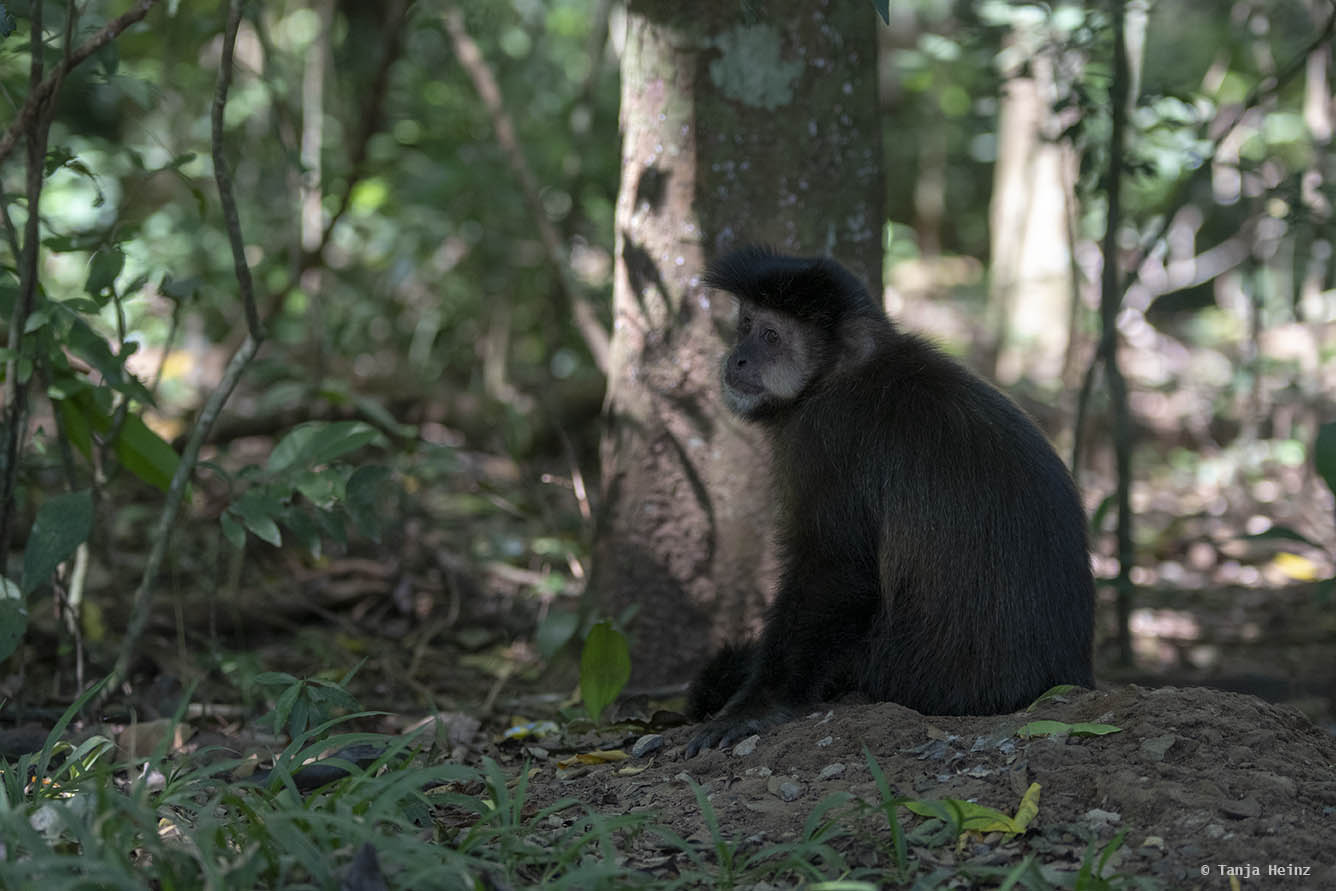
Some of the monkeys didn't approach visitors at all. Especially those individuals with their offspring on their backs. Of course, I didn't follow them. I remained on the side where I was and looked to them from a distance.
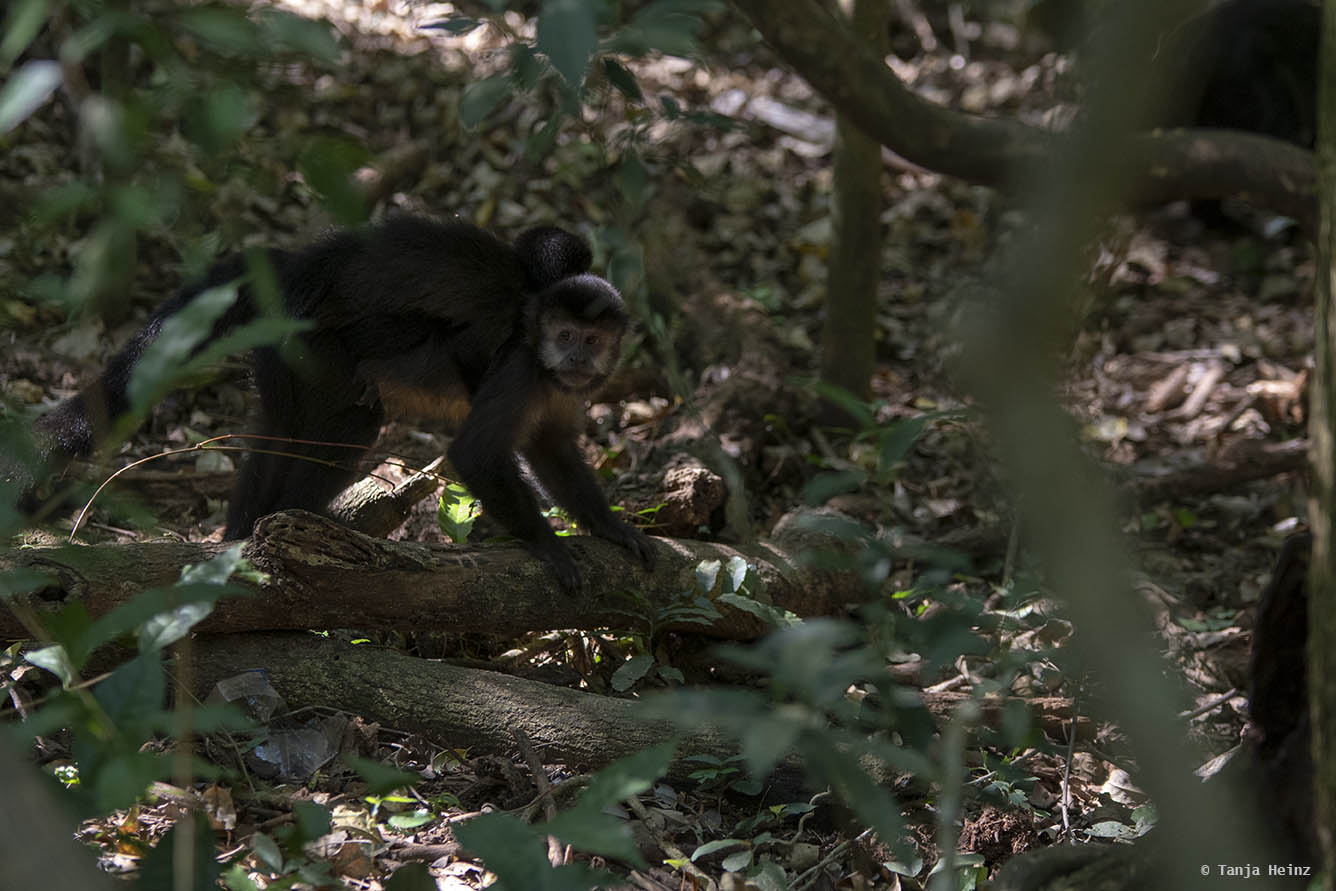
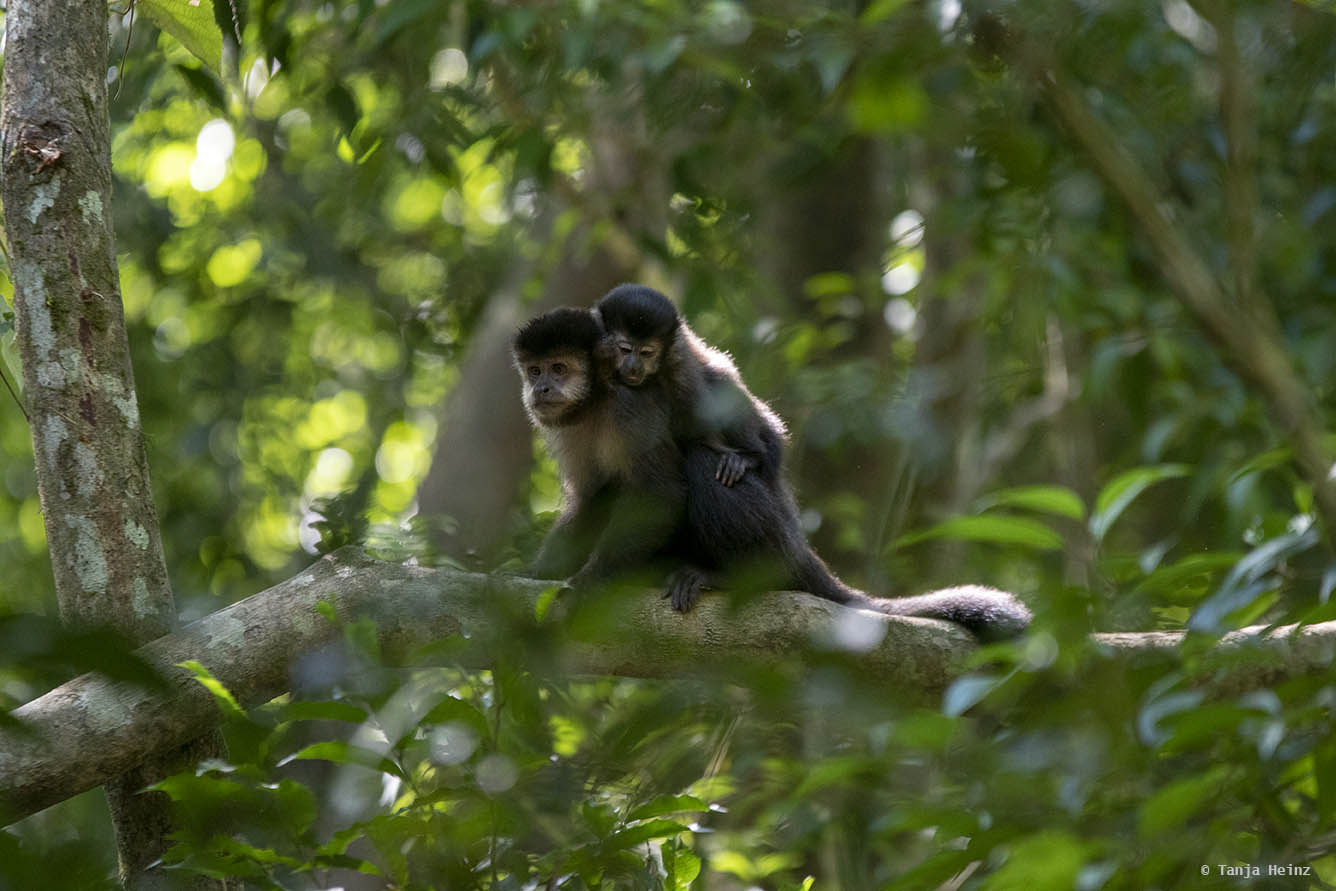
Some juvenile monkeys were climbing in the trees.
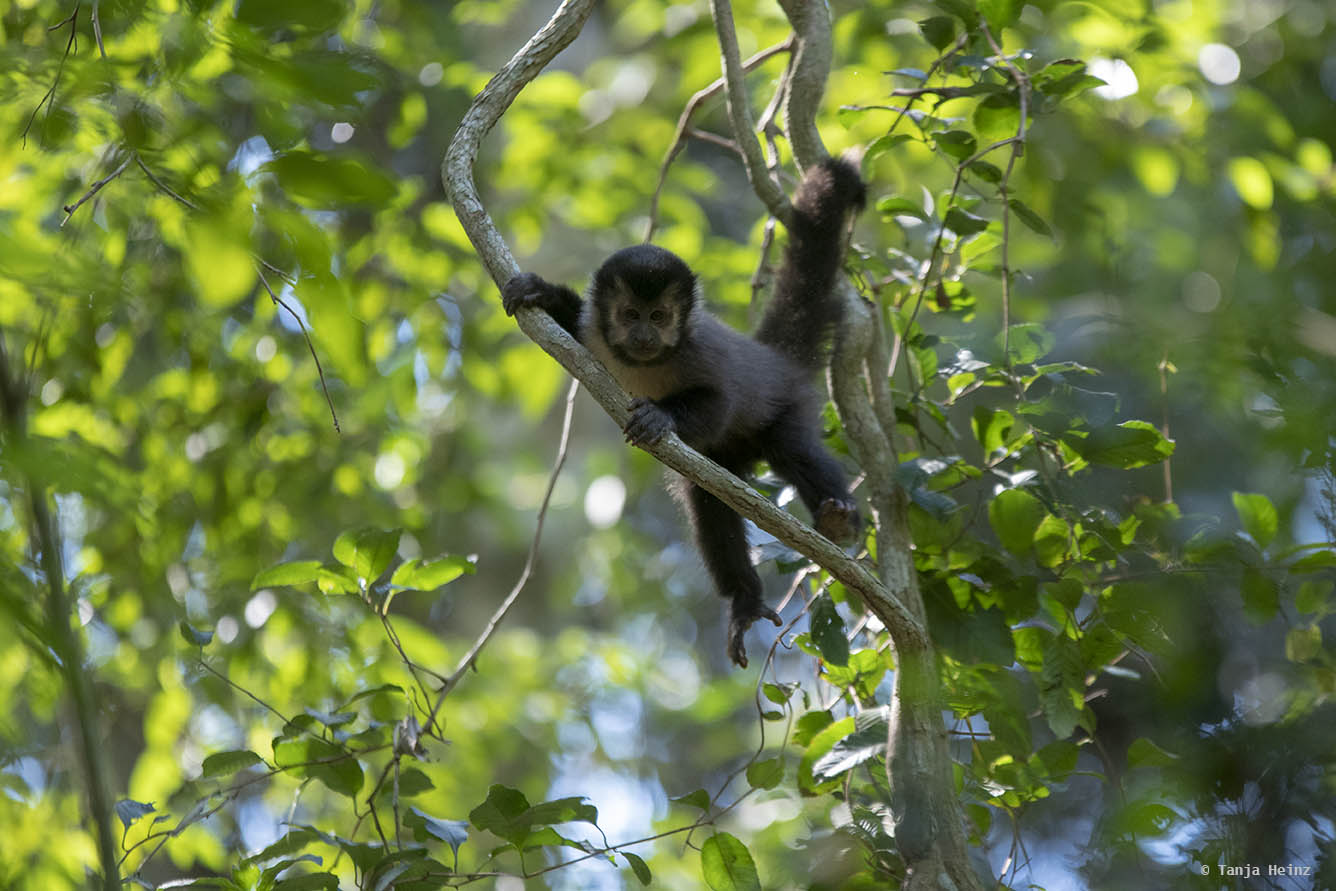
And some juveniles relaxed or slept close to an adult individual (maybe close to their mothers?).
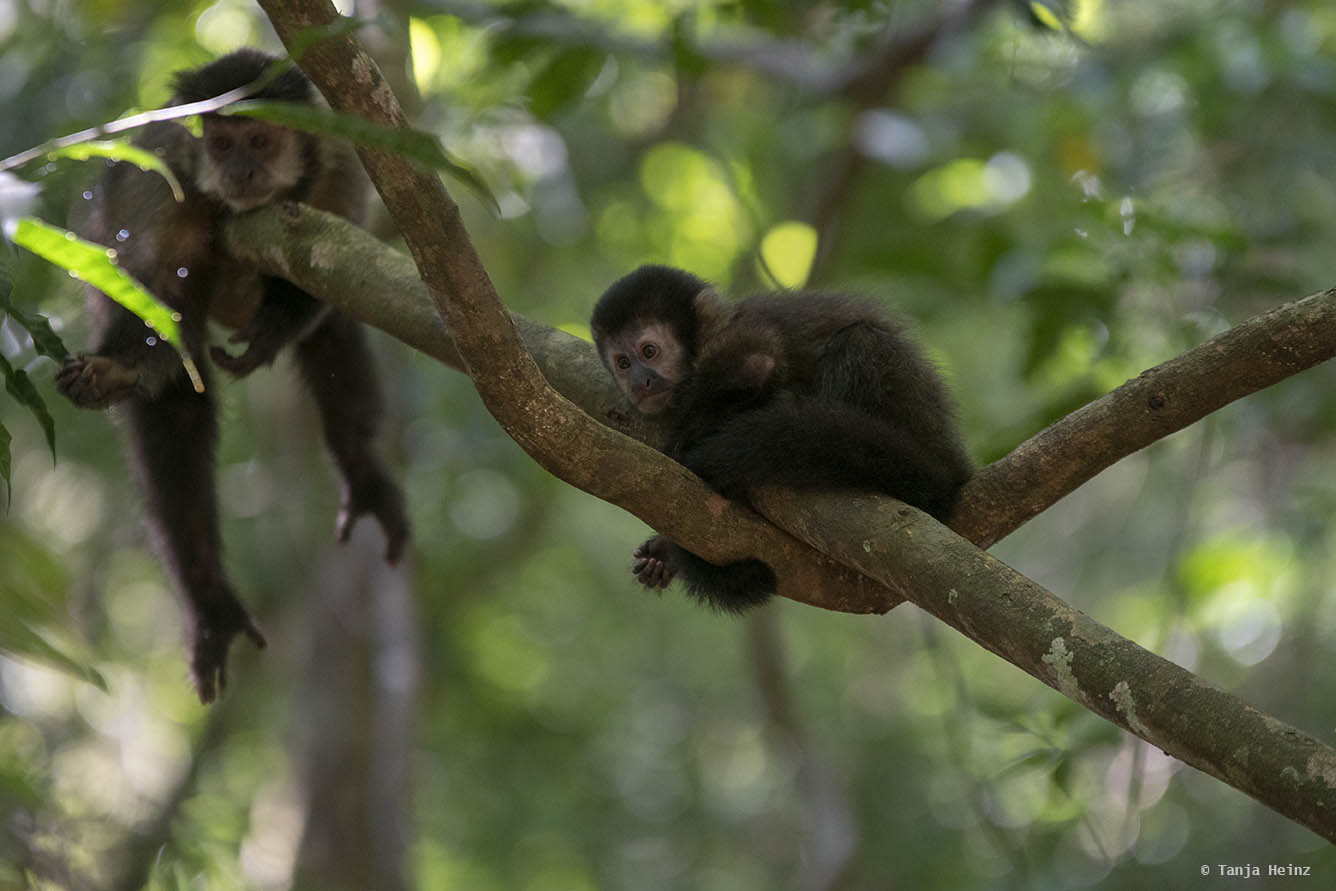
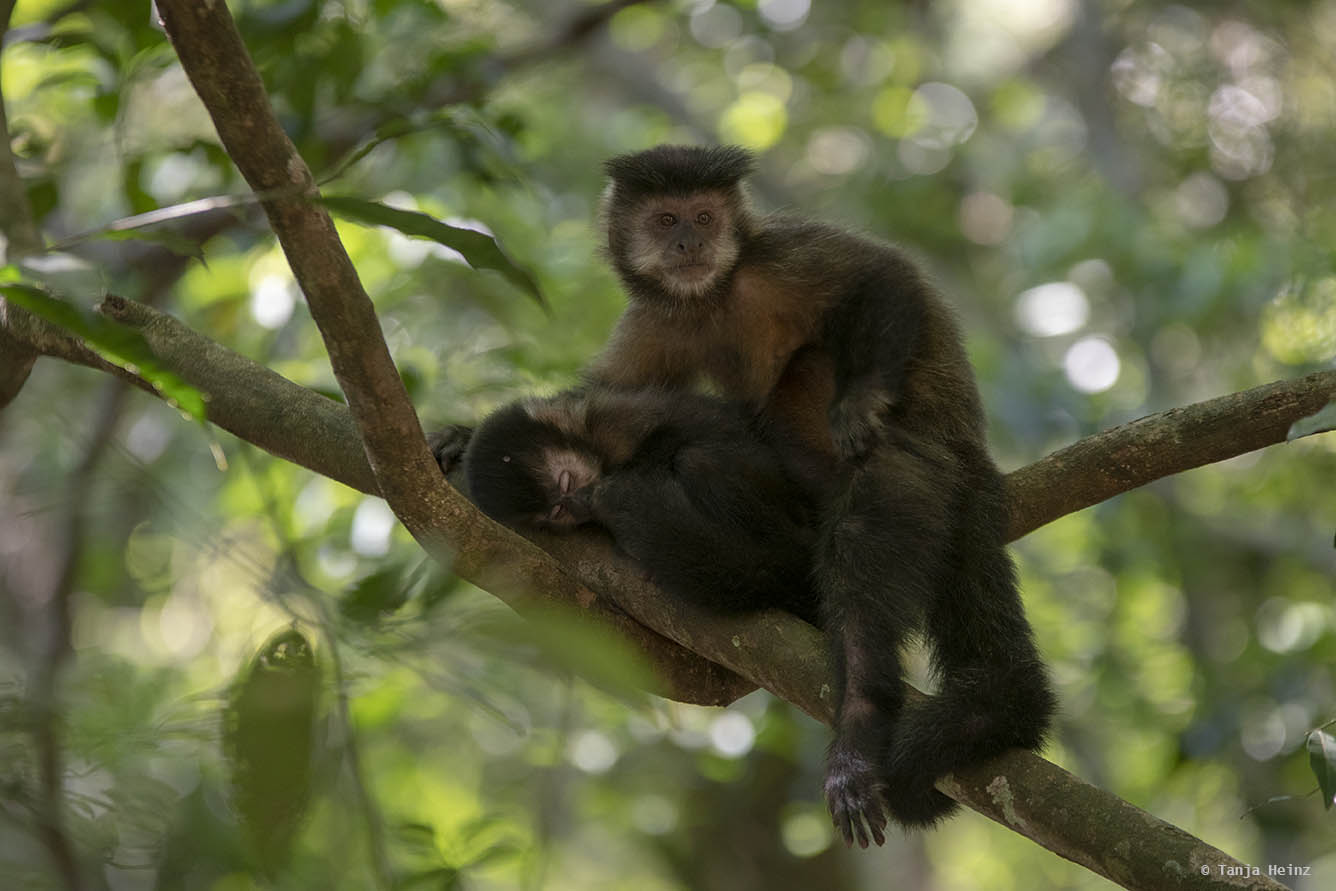
One of the smaller monkeys remained some time close to the place where the woman fed the animals with biscuits. Luckily, she had already left.
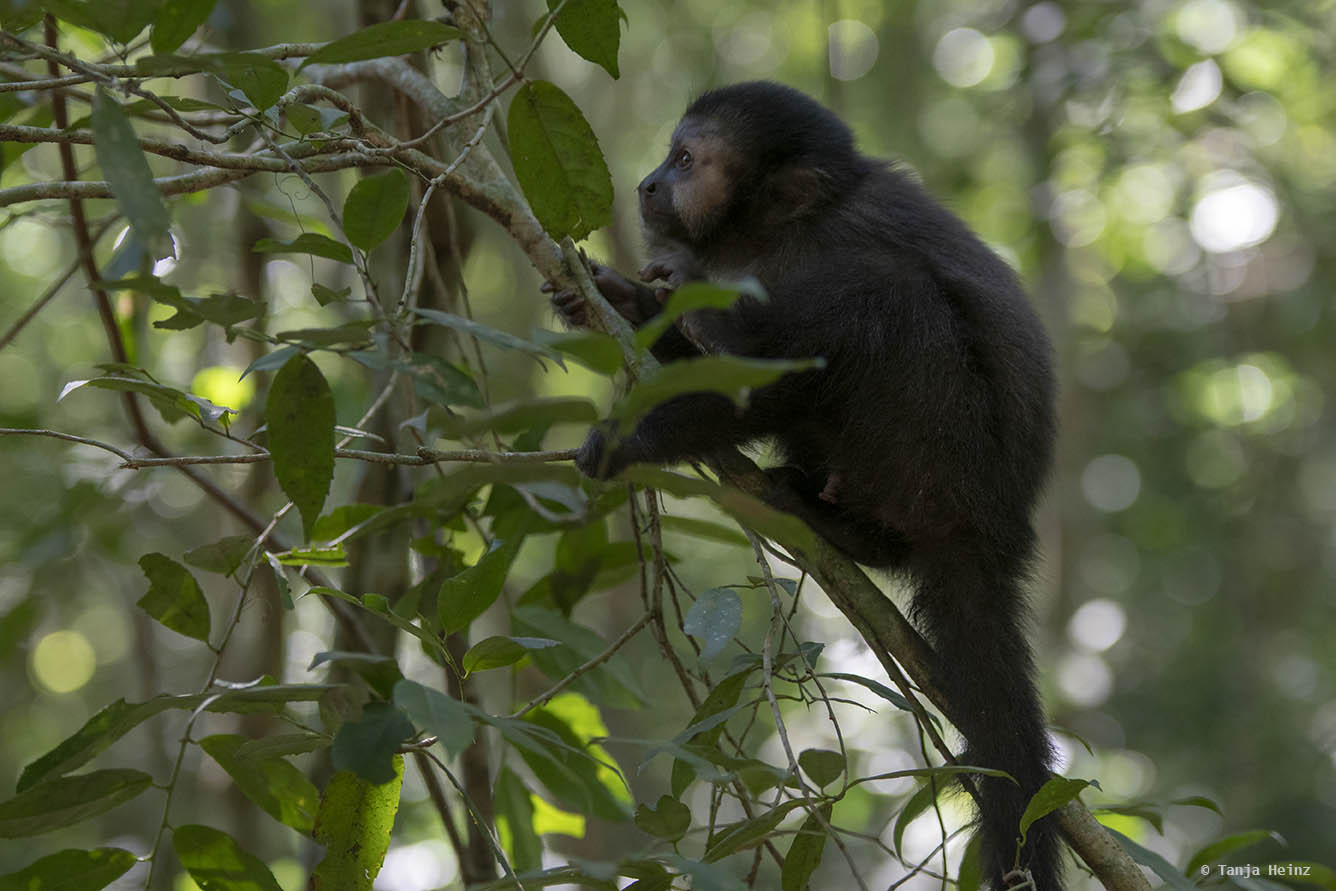
As the largest groups of people had already left, most black capuchins left the path and entered the forest to relax in the trees. But they were still visible for me.
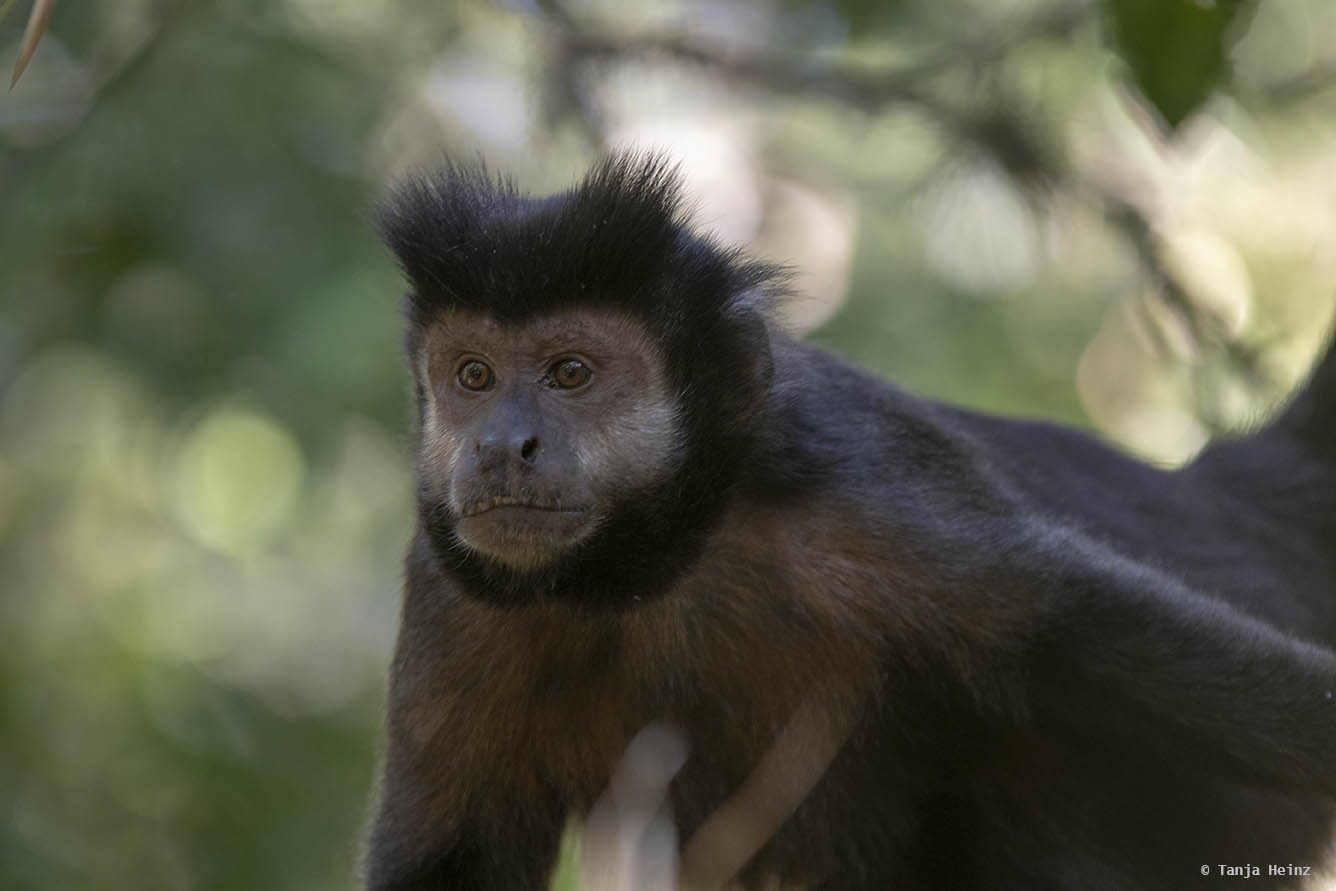
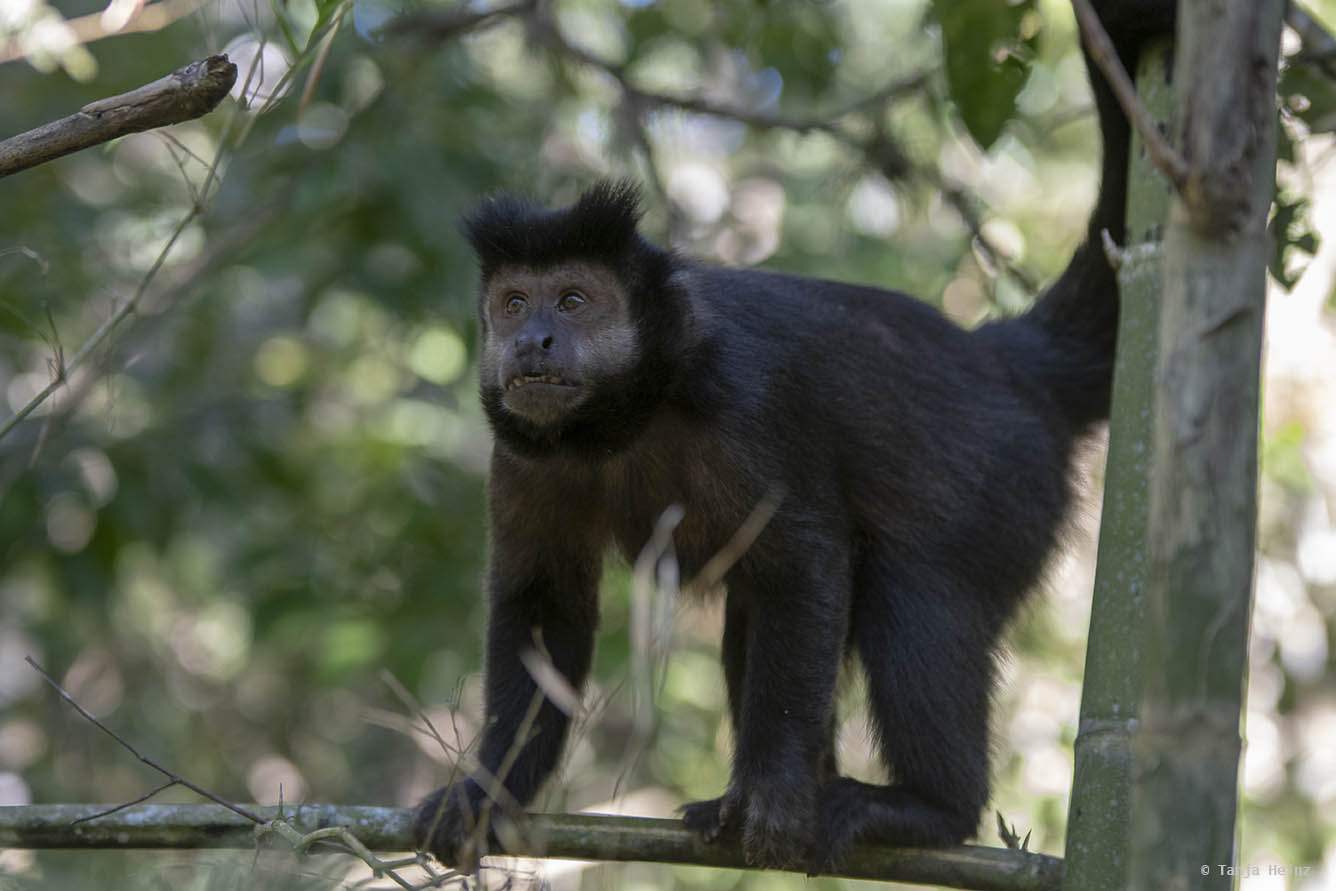
Finally, we also left the group of monkeys behind as we wanted to see more of the Iguazú National Park. Maybe I would see some more black capuchins again?
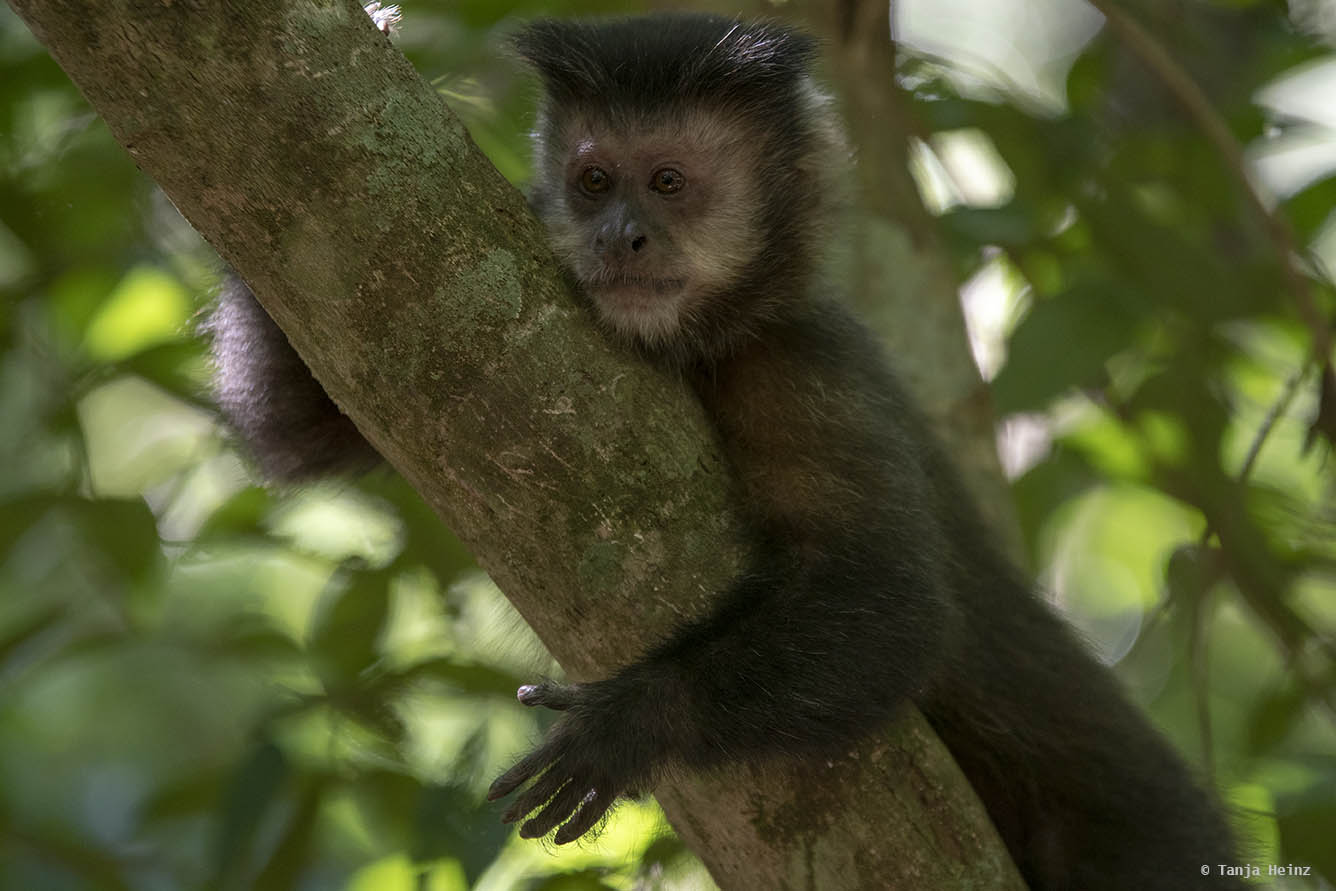
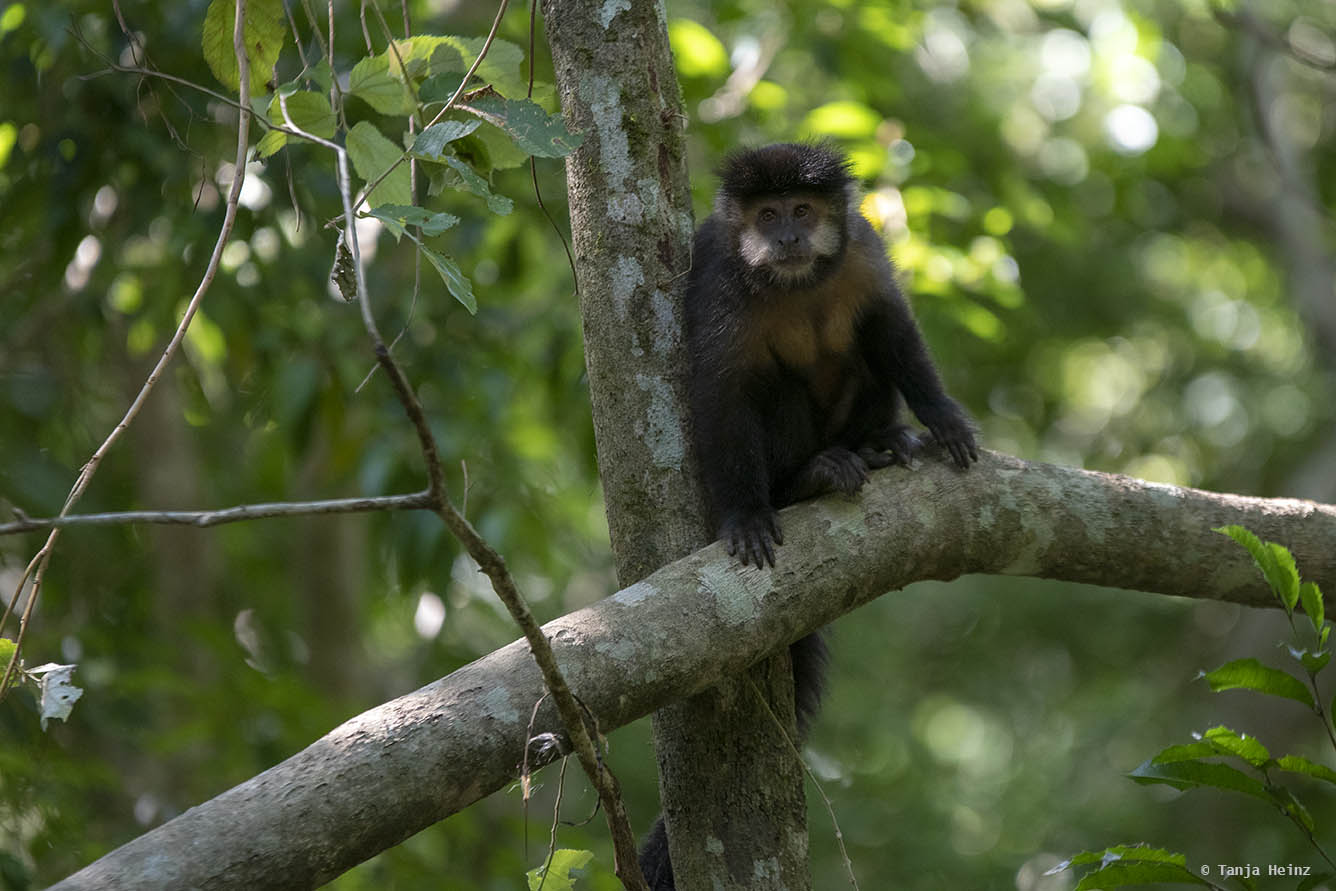
If you want to know more about black capuchins itself, you can check my previous blog entry or check the links at the end of this article.
The Upper and Lower Circuit
You will get very close to the Devil’s Throat if you drive as mentioned with the train to the last train stop and walk a small trail. However, you will also get some beautiful views of the Iguazú Falls if you walk the Upper and/or Lower Circuit
We entered the Upper Circuit at the Waterfall Station. It was a nice walk through some Atlantic Forest. It was already in the afternoon, but the sun was still very strong and it was very warm. But we could walk to the waterfalls mostly protected in the shadow. Bridges cross the river.
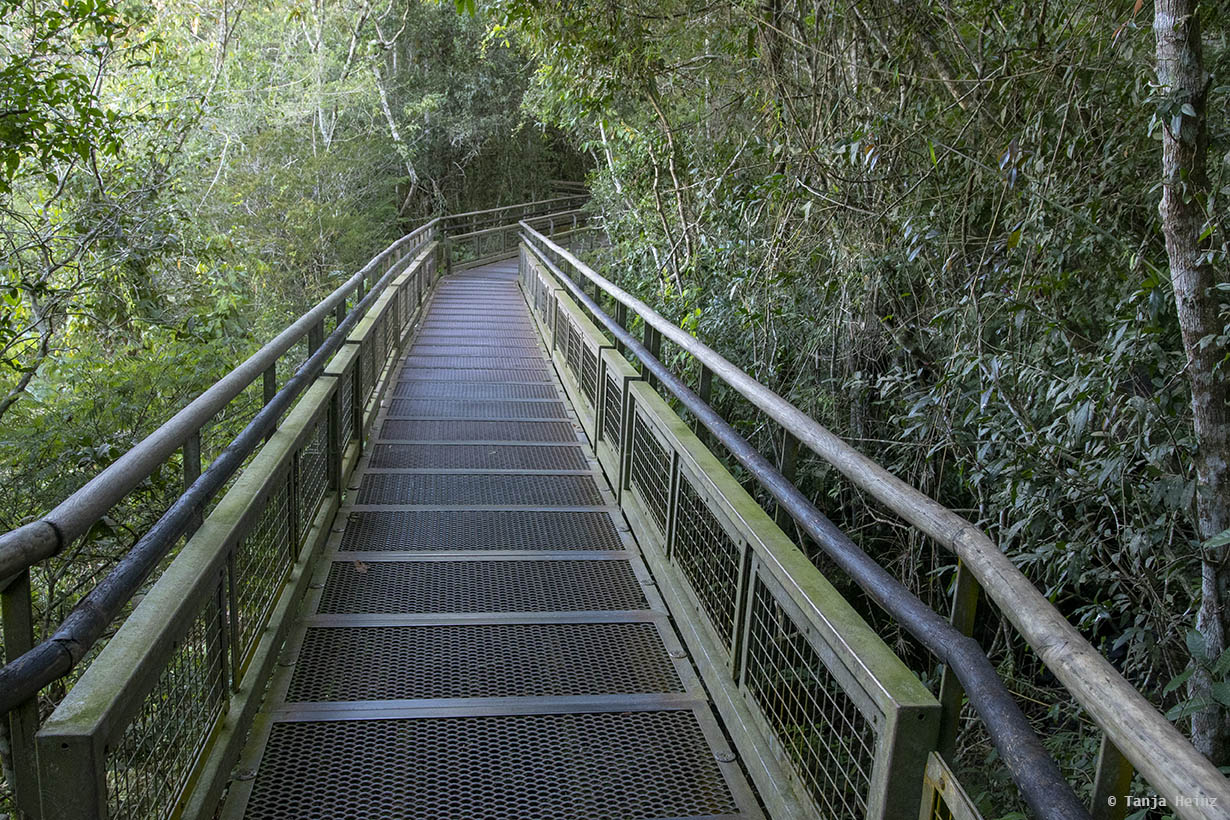
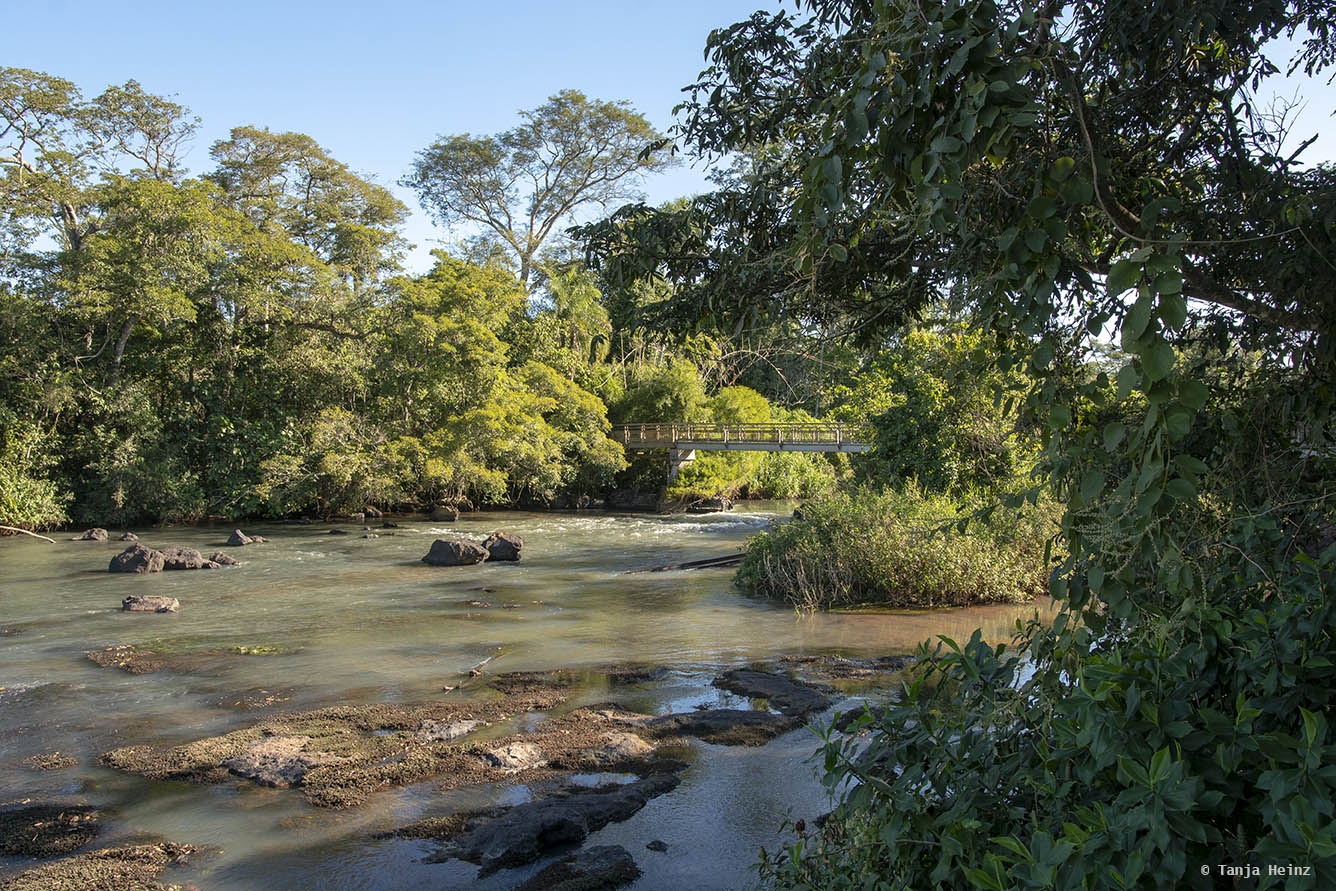
At some places you can look deep down the waterfalls and feel the strengh of the Iguazú Falls.
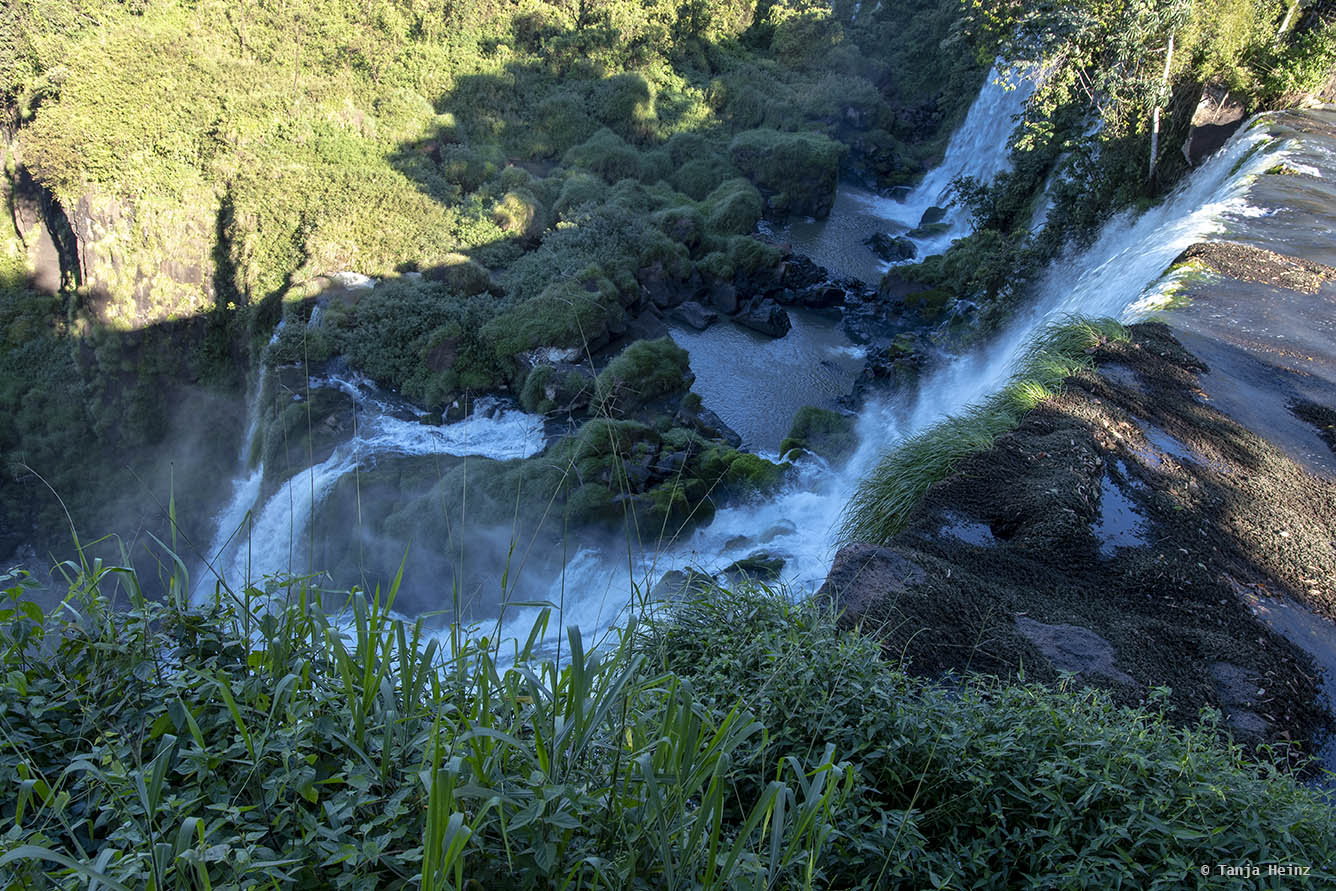
However, some employees told us that the water flow on that day was very low. I asked myself, how might it be in months like October when the waterfall reaches its highest water flow? We visited the Iguazú Falls in April when the water flow is lowest.
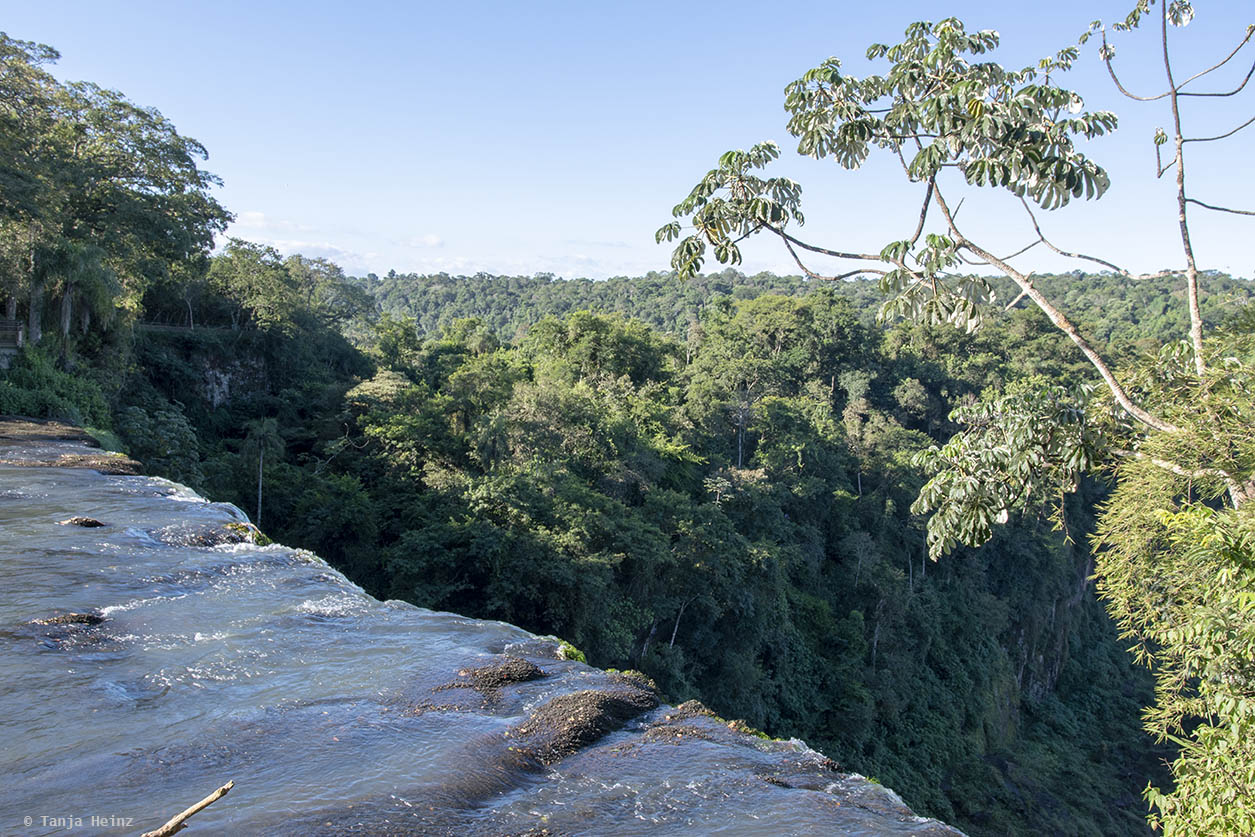
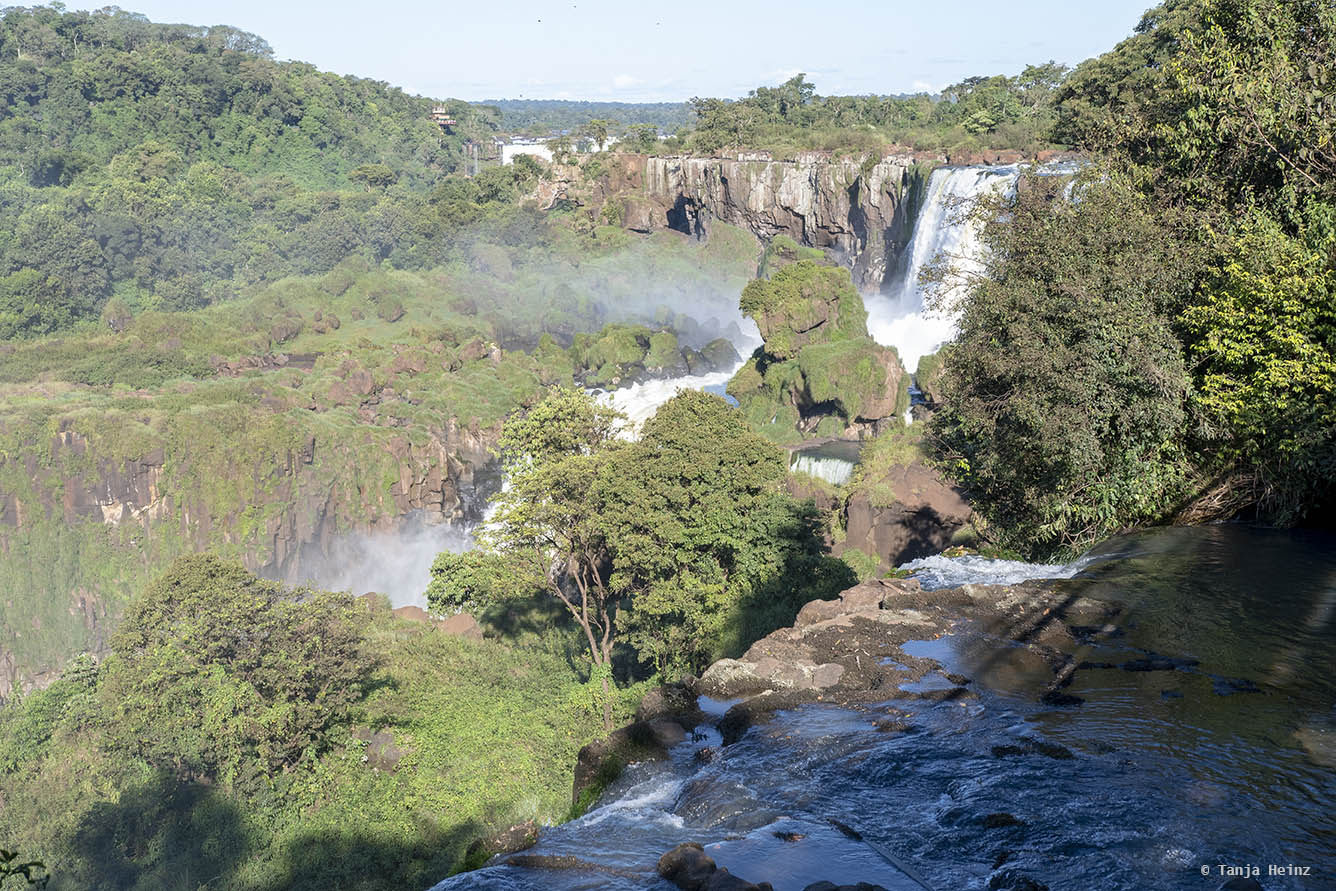
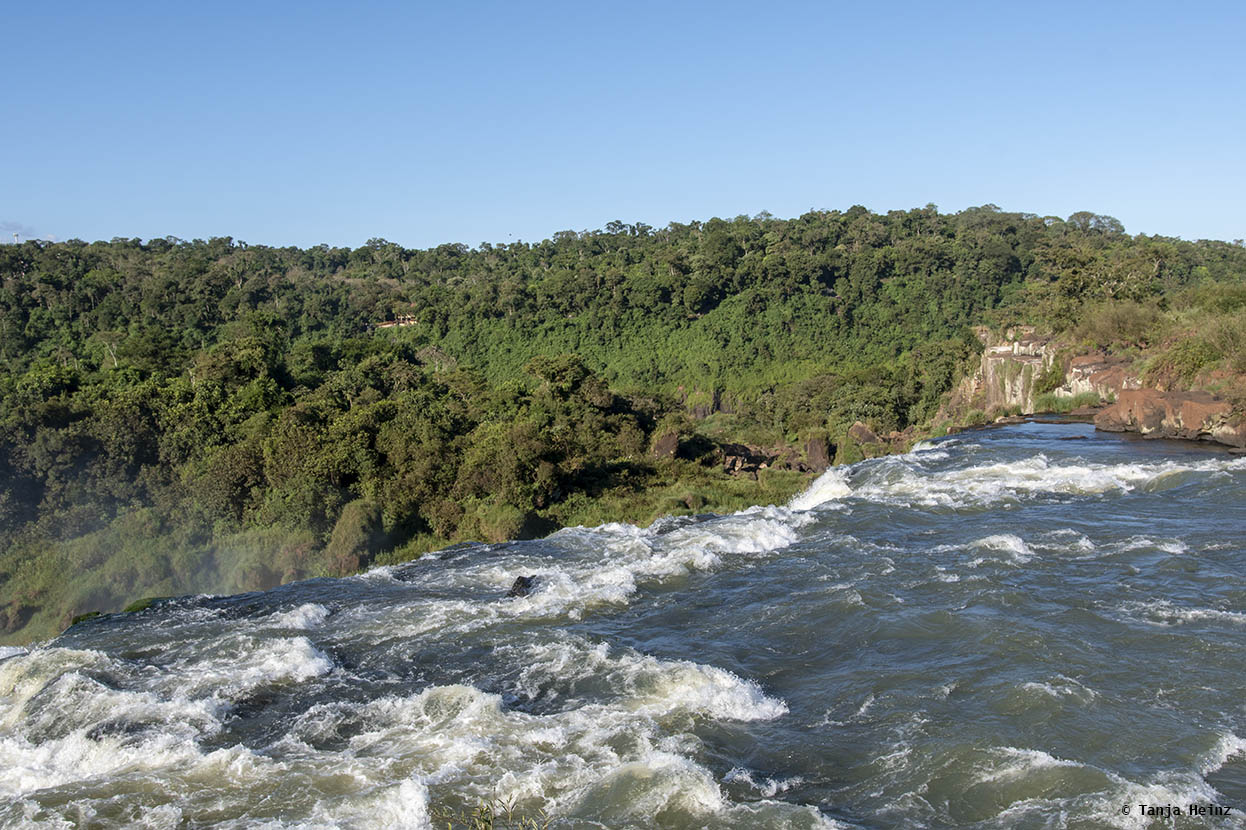
Along the path of the Upper Circuit you get different views onto the Iguazú Falls on several platforms. It was already afternoon and we met few people on this path. It was a wonderful walk. I thought about our walk on the Brazilian side. It was definitely more crowded at the waterfalls in Brazil (especially in the morning). However, I cannot decide which side of the Iguazú Falls is more beautiful. I think both sides are worth a visit. But consider that there are more walking trails on the Argentinian side, and thus, you might need more time on this side. Nevertheless, the views onto the waterfalls are wonderful on both sides.
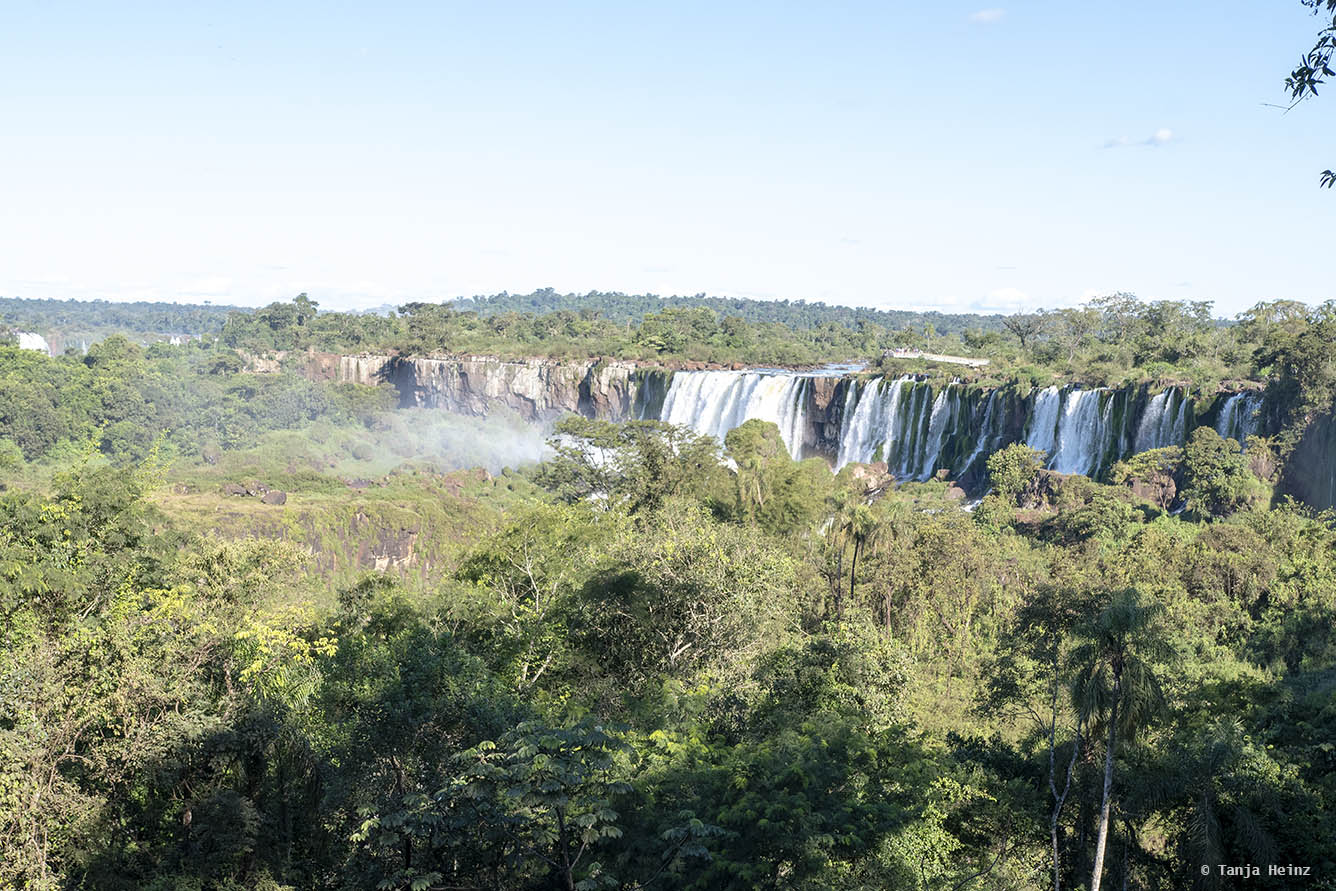
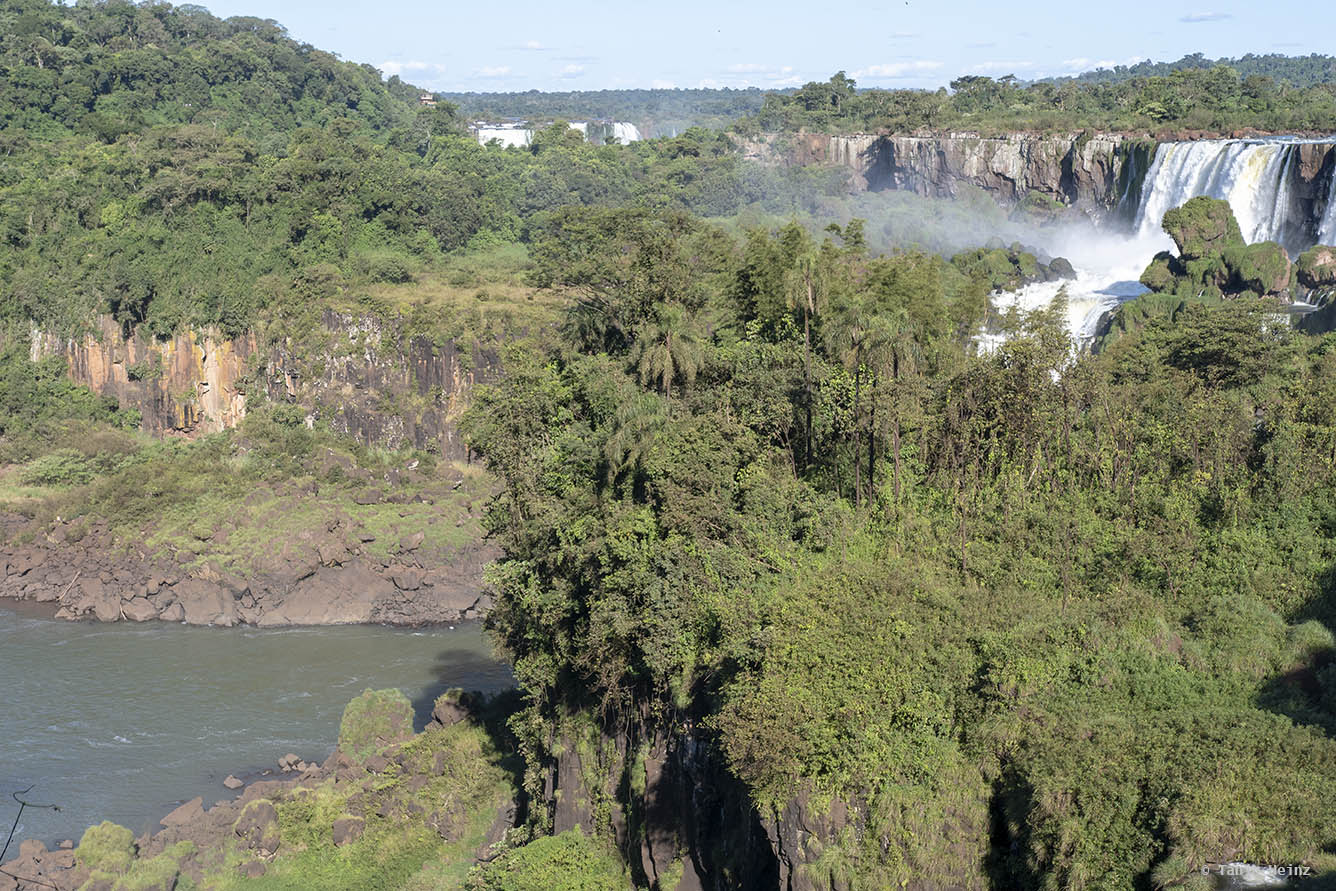
On our path we also spotted some animals like the Western collared spiny lizard (Tropidurus catalanensis).
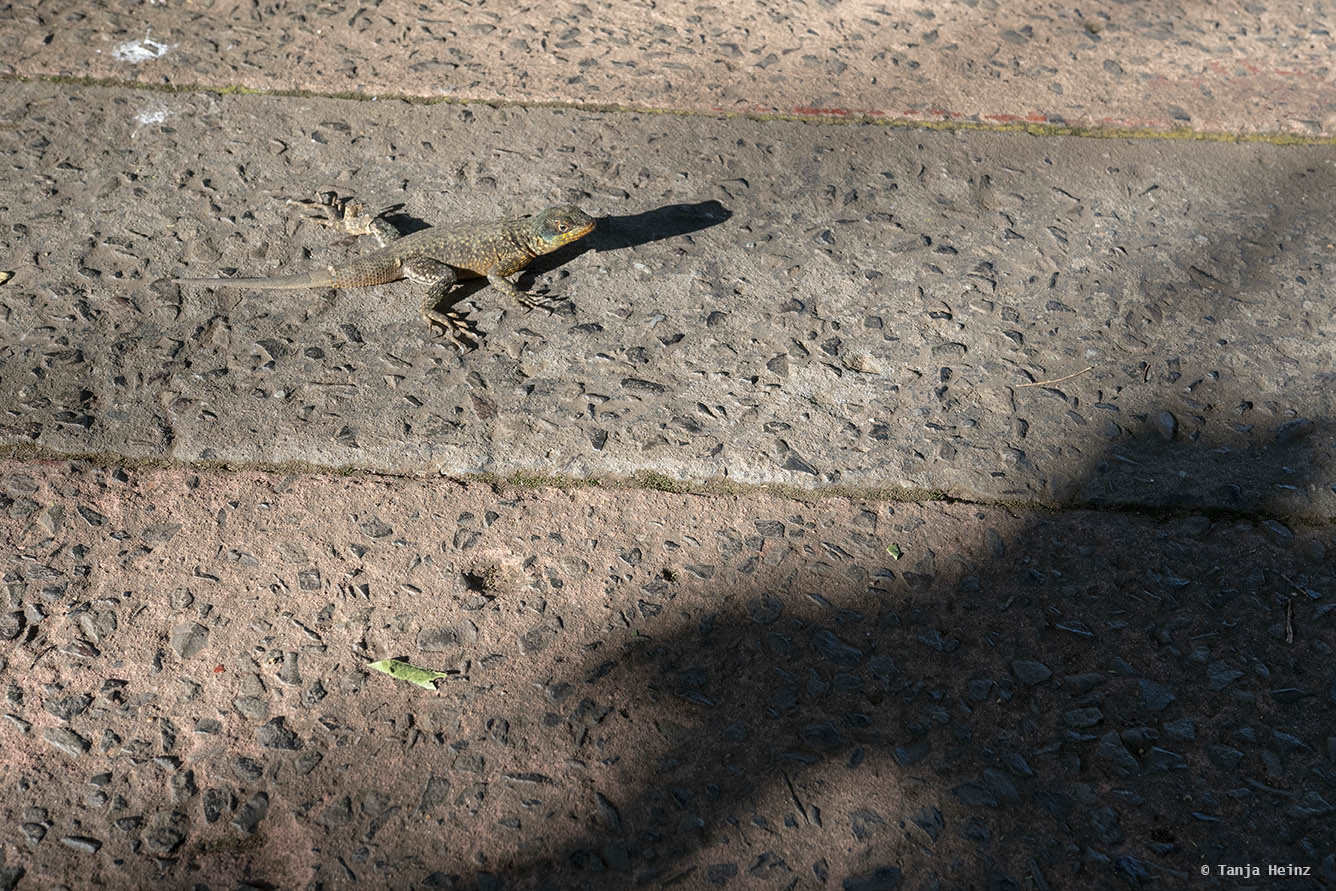
And of course we met black capuchins and South American coatis again.
We saw one coati rifling through rubbish. He was quite relaxed and didn’t care about our presence. As he didn’t find anything he took a seat on a bank and started cleaning himself. He was quite relaxed.
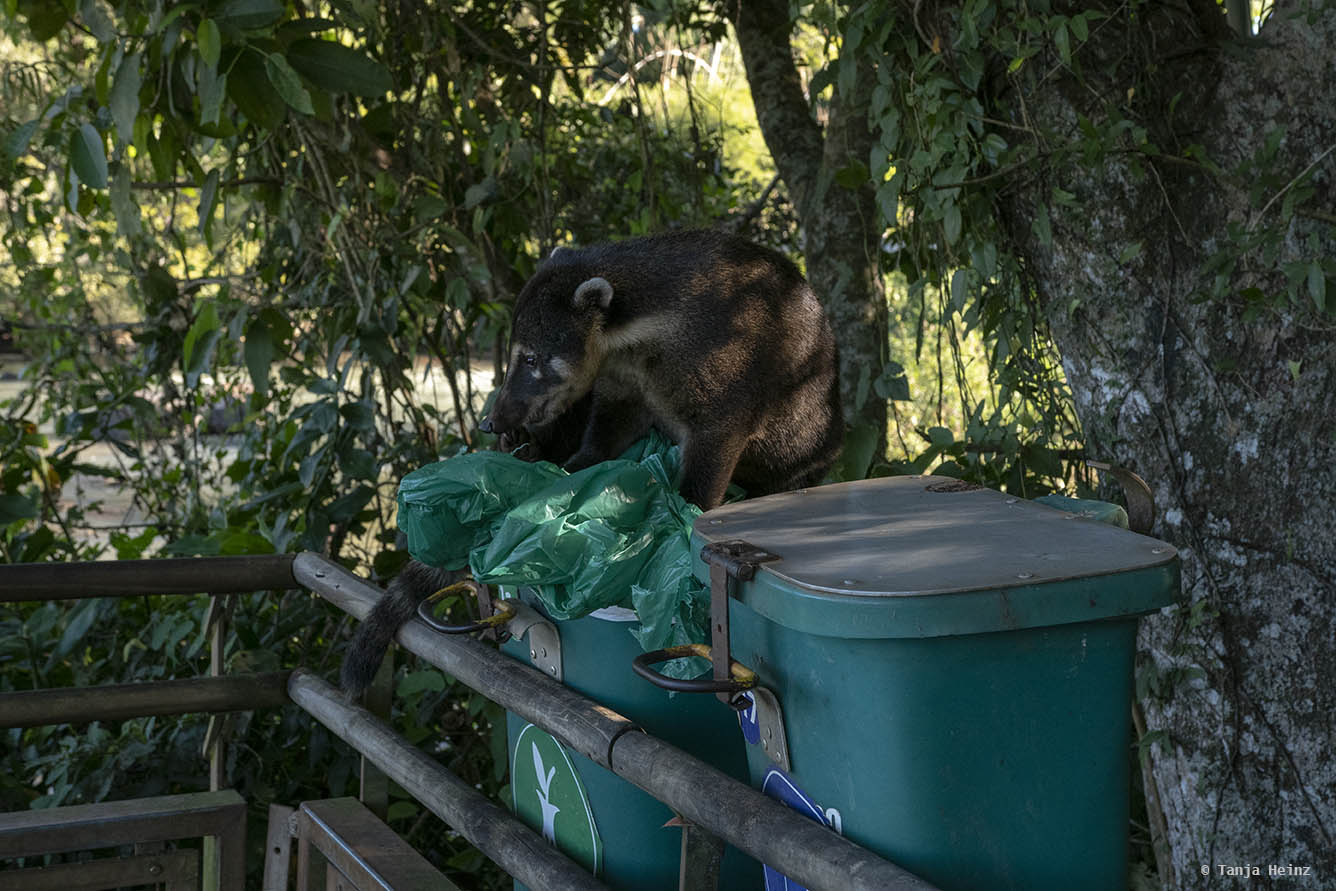
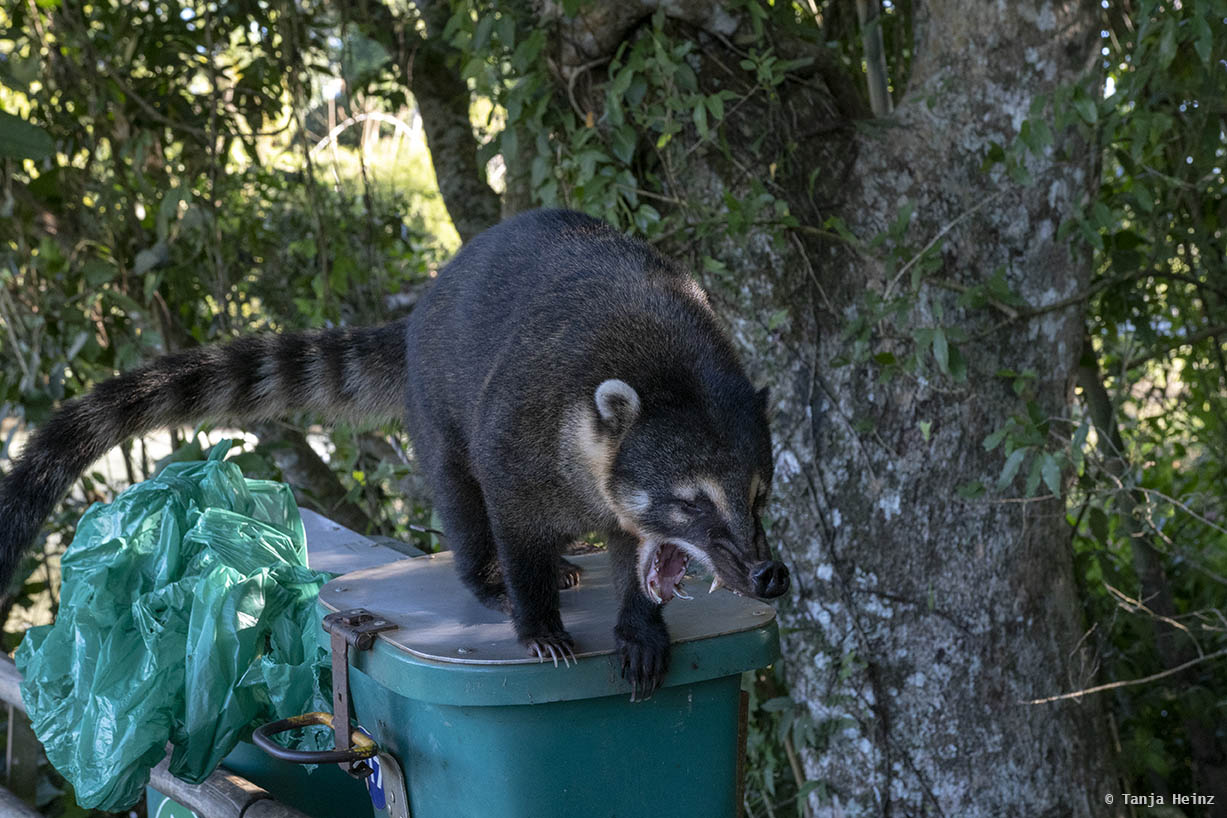
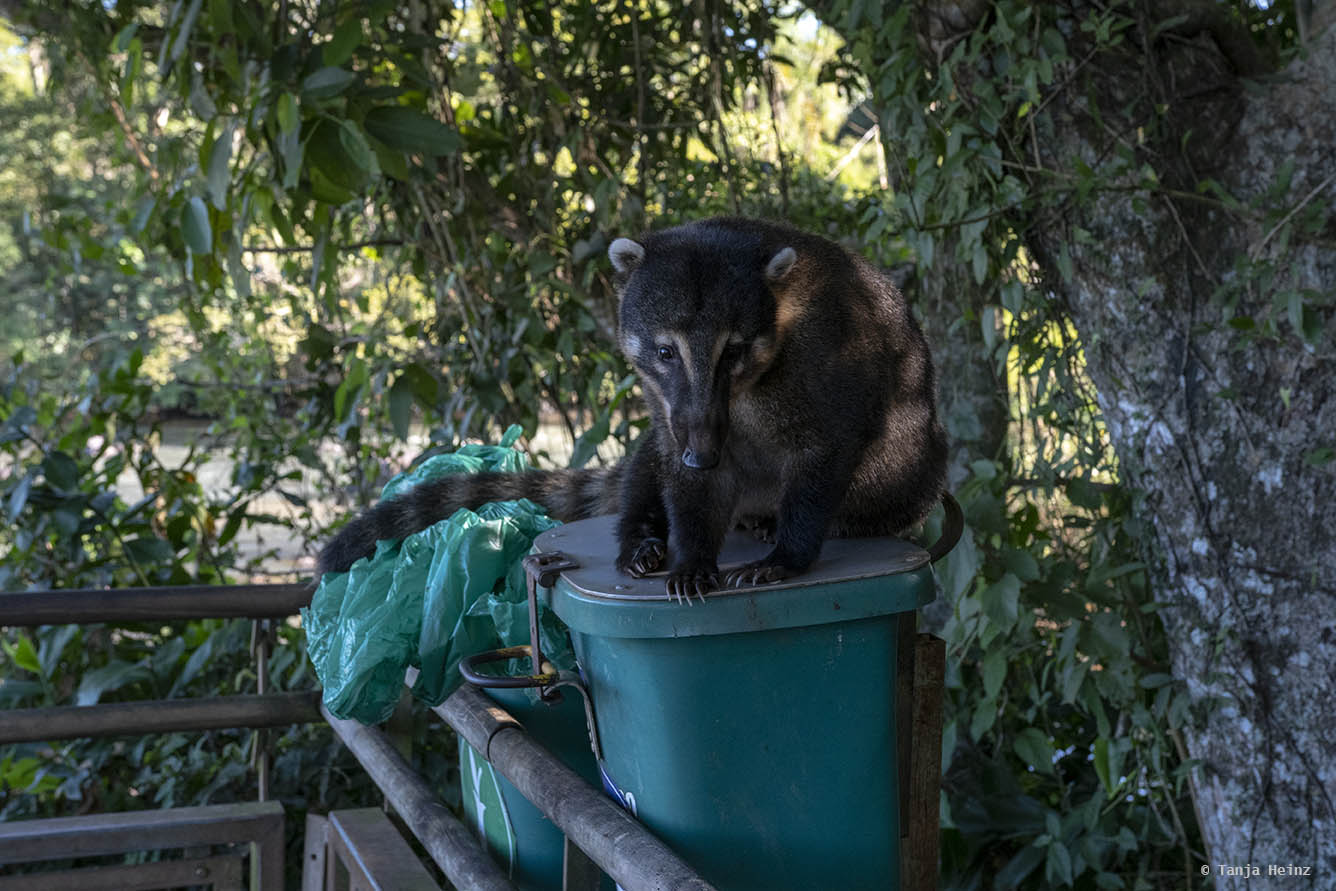
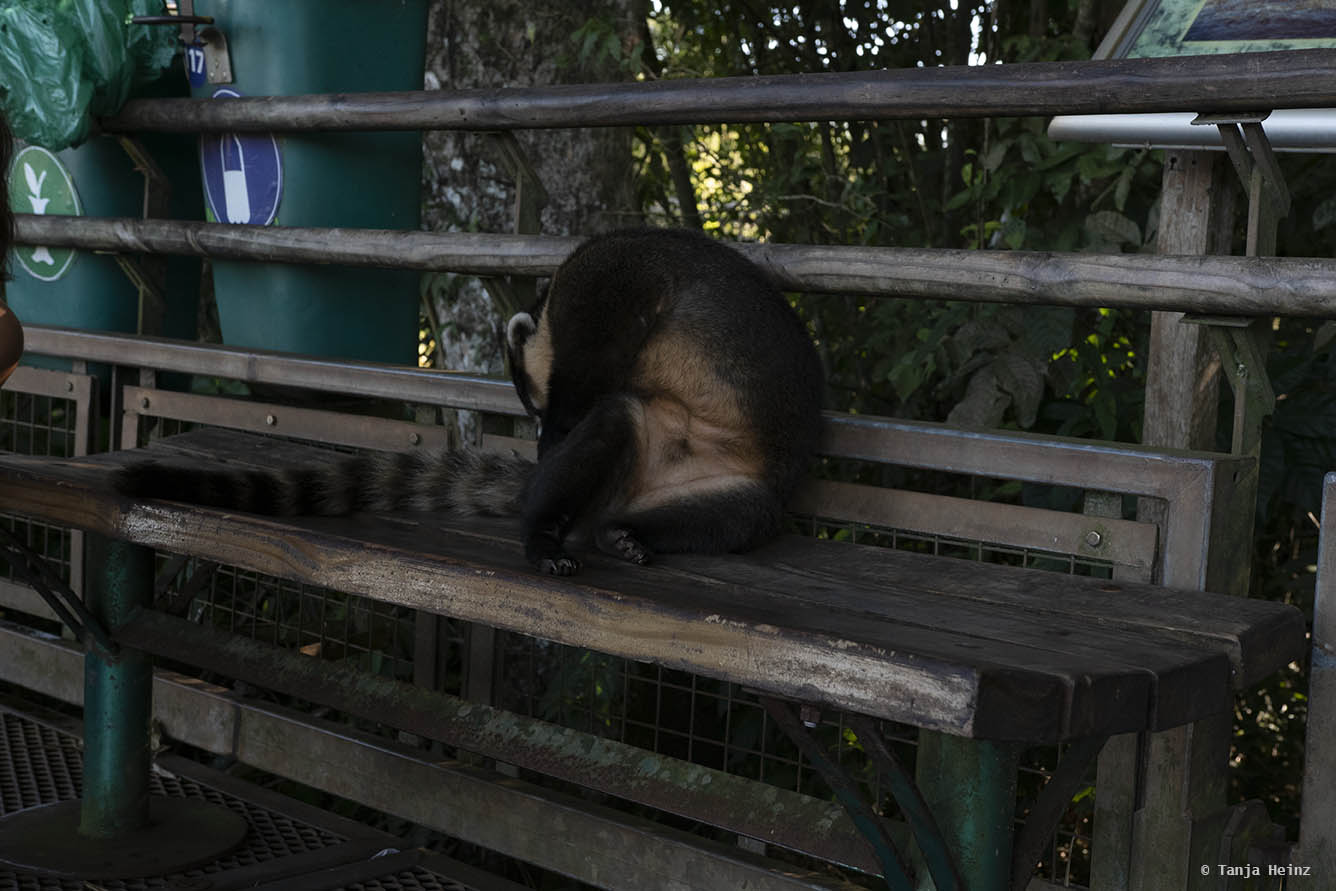
On the same platform we also met some black capuchin monkeys again. In contrast to the single coati, the monkeys were not relaxed at all, but agitated. I spotted the first monkey in one of the trees.
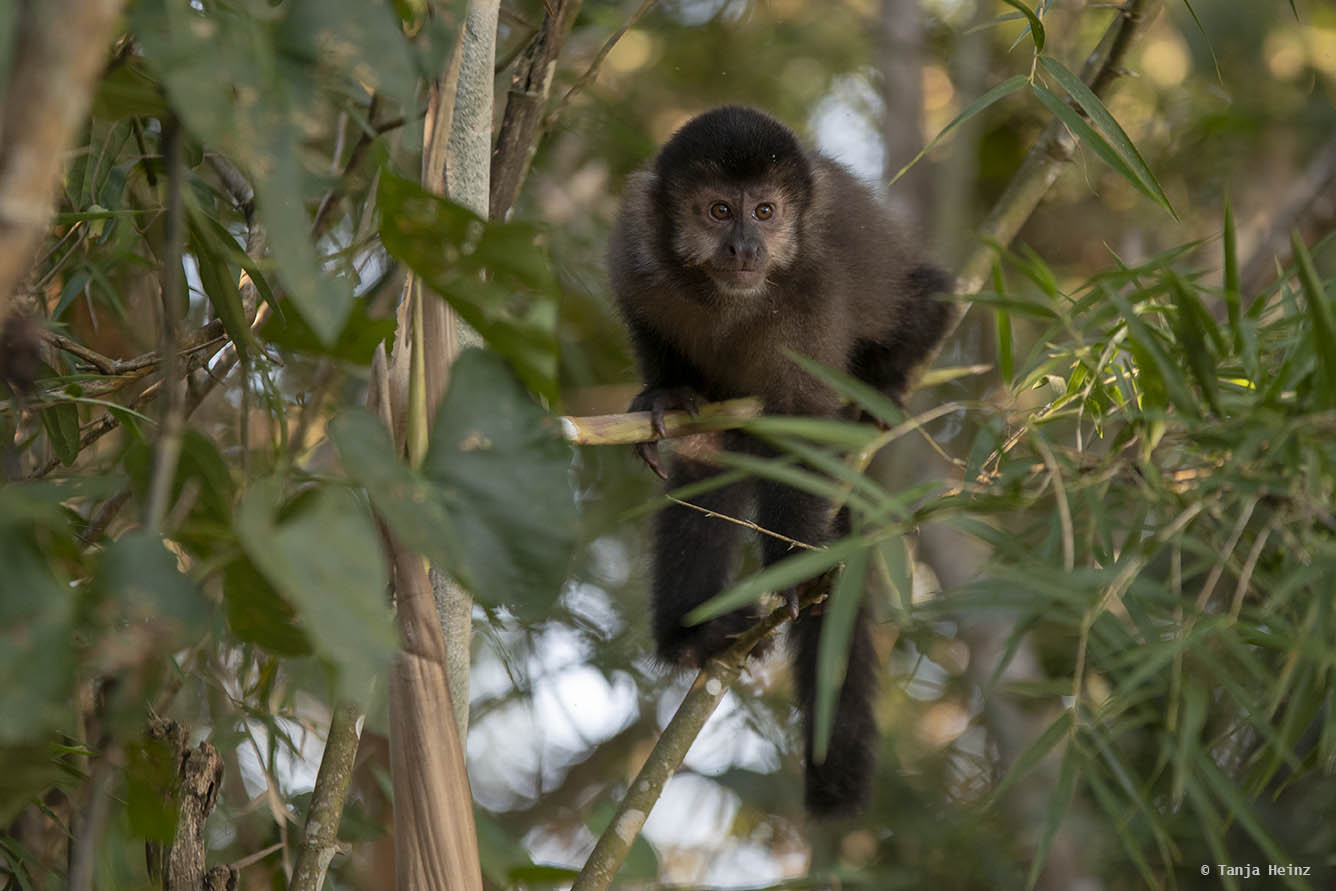
This monkey was like the coati very interested in rifling through rubbish. He crossed the platform just in front of us and climbed up the handrail to get to another rubbish bin. He was a quite nervous monkey. He took some food items and looked for a place where no other monkey could disturb him.
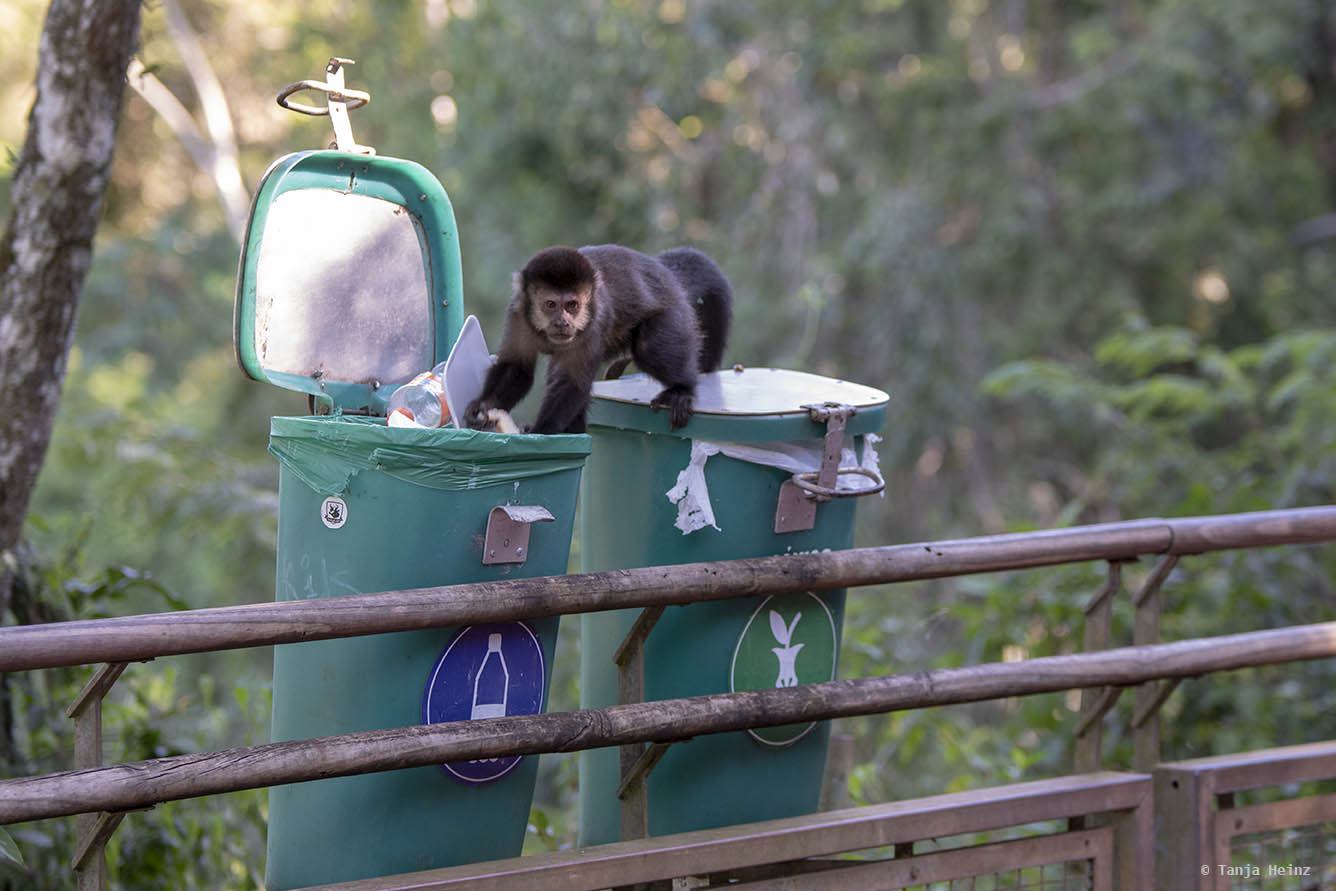
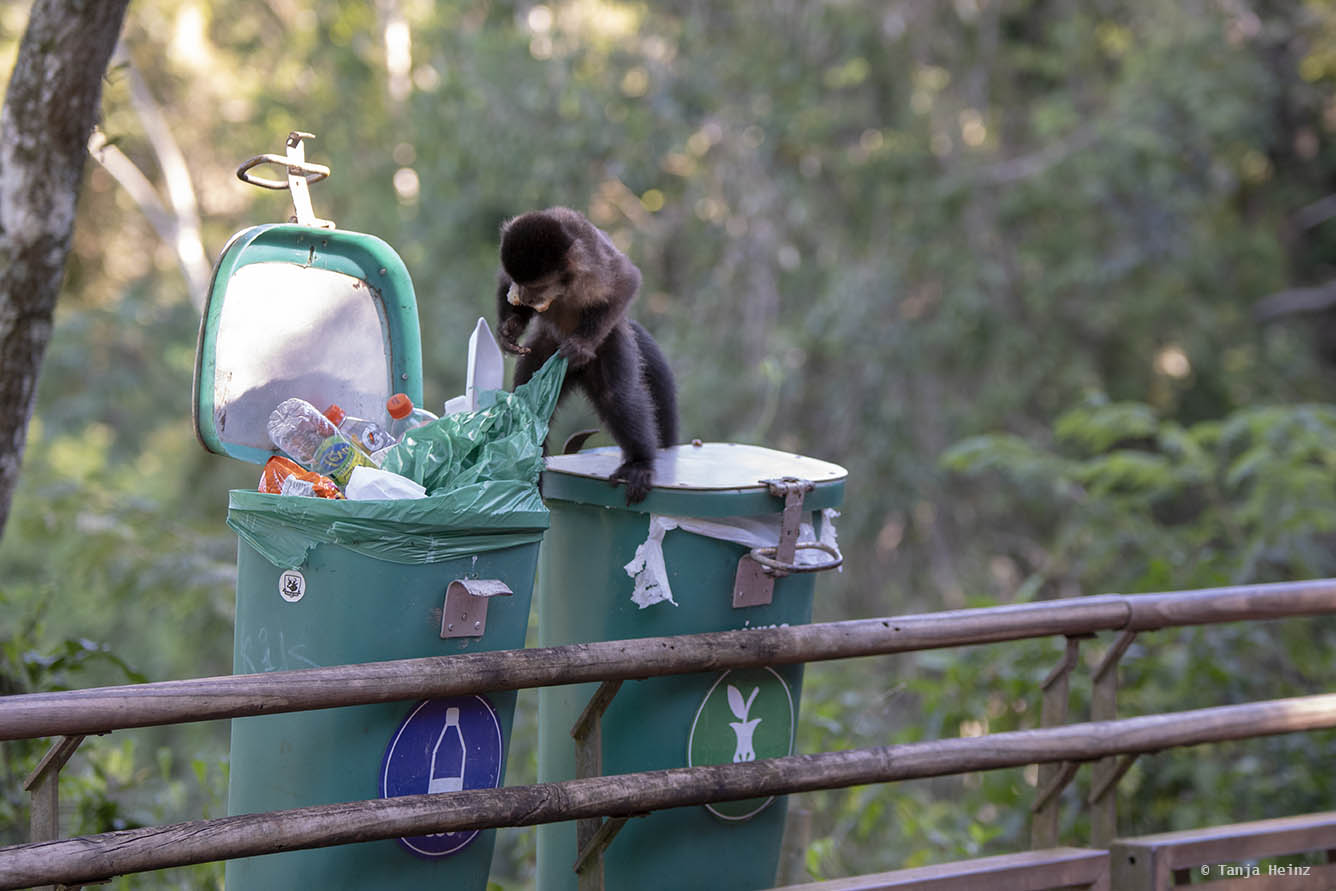
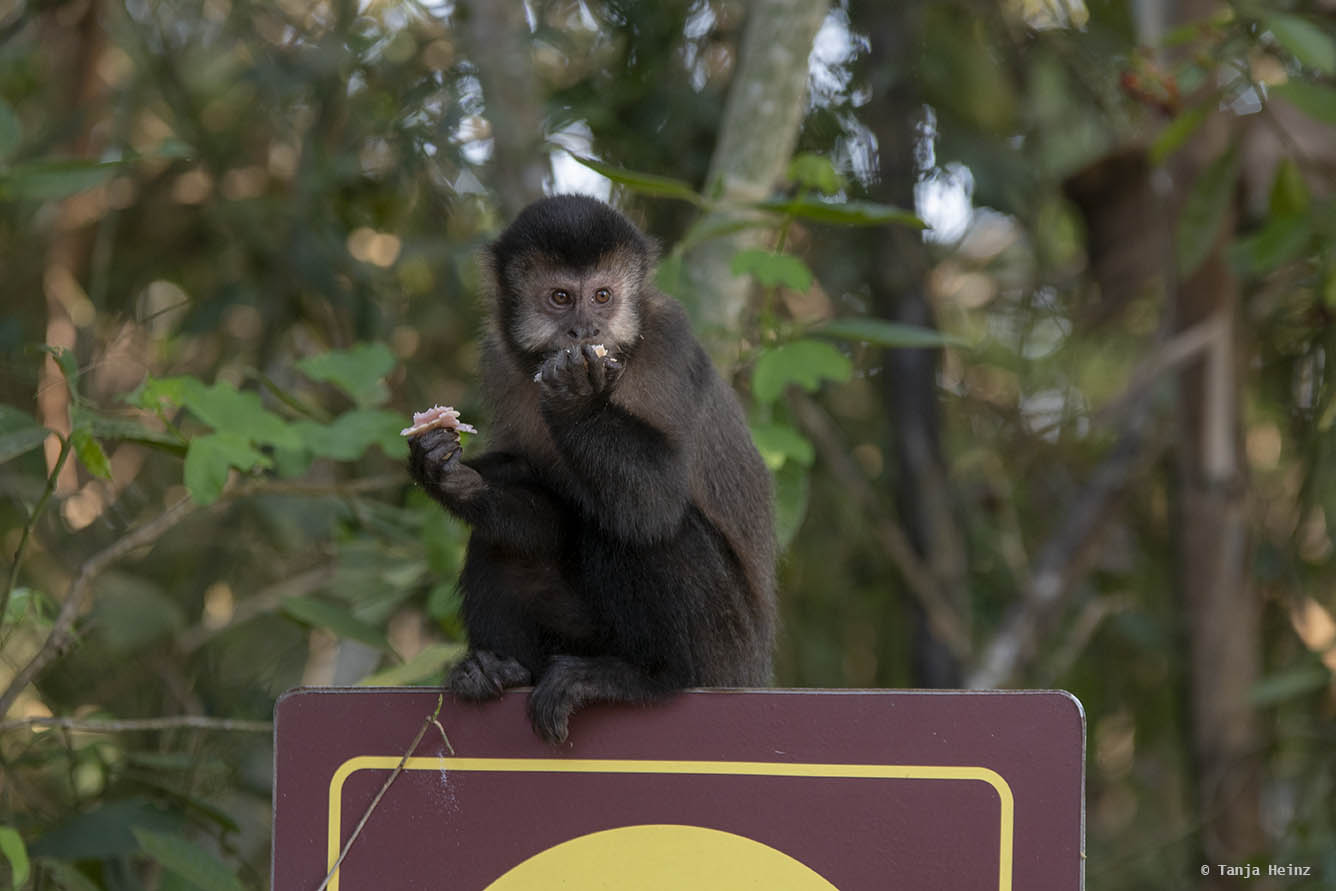
A smaller monkey was around as well begging for food.
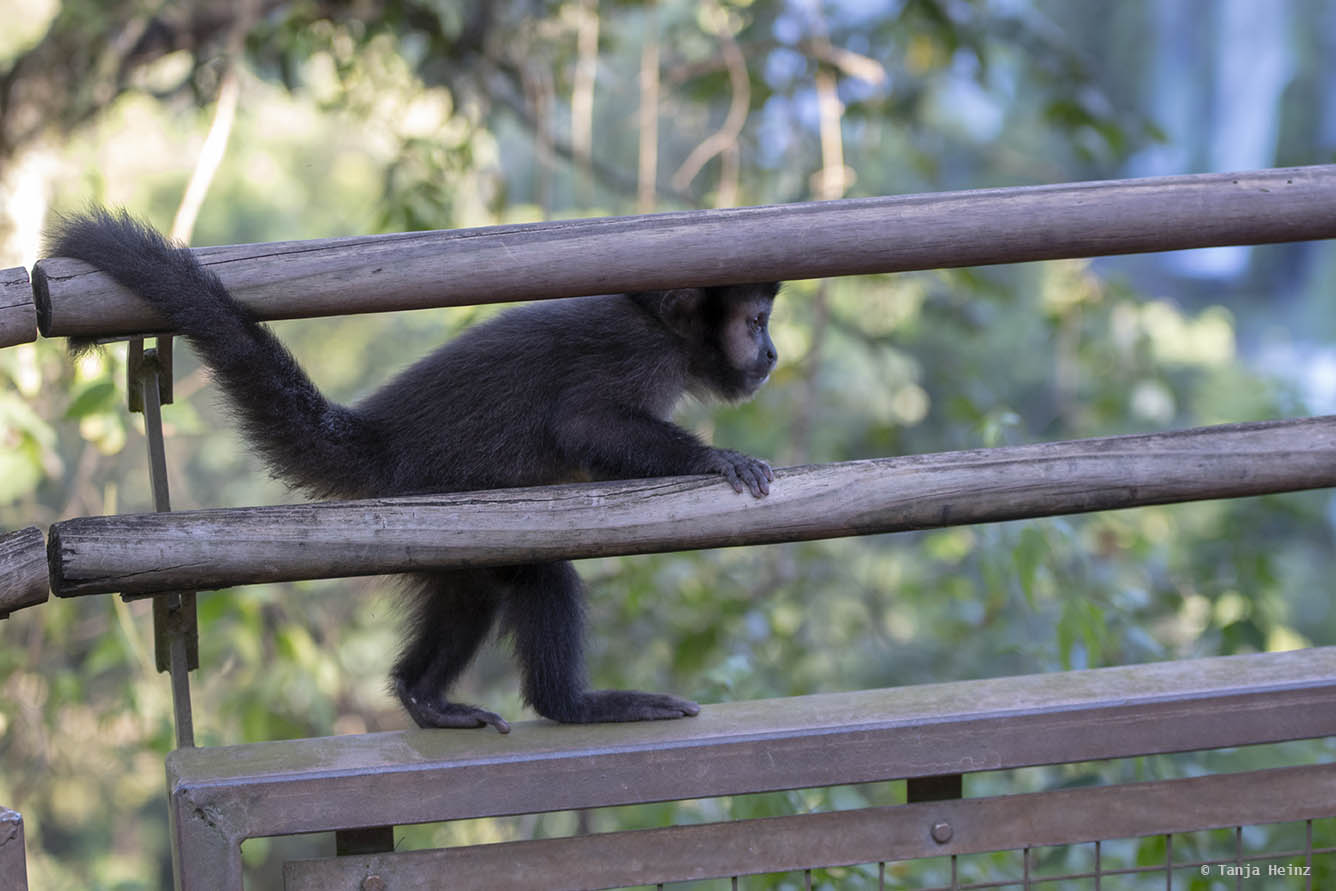
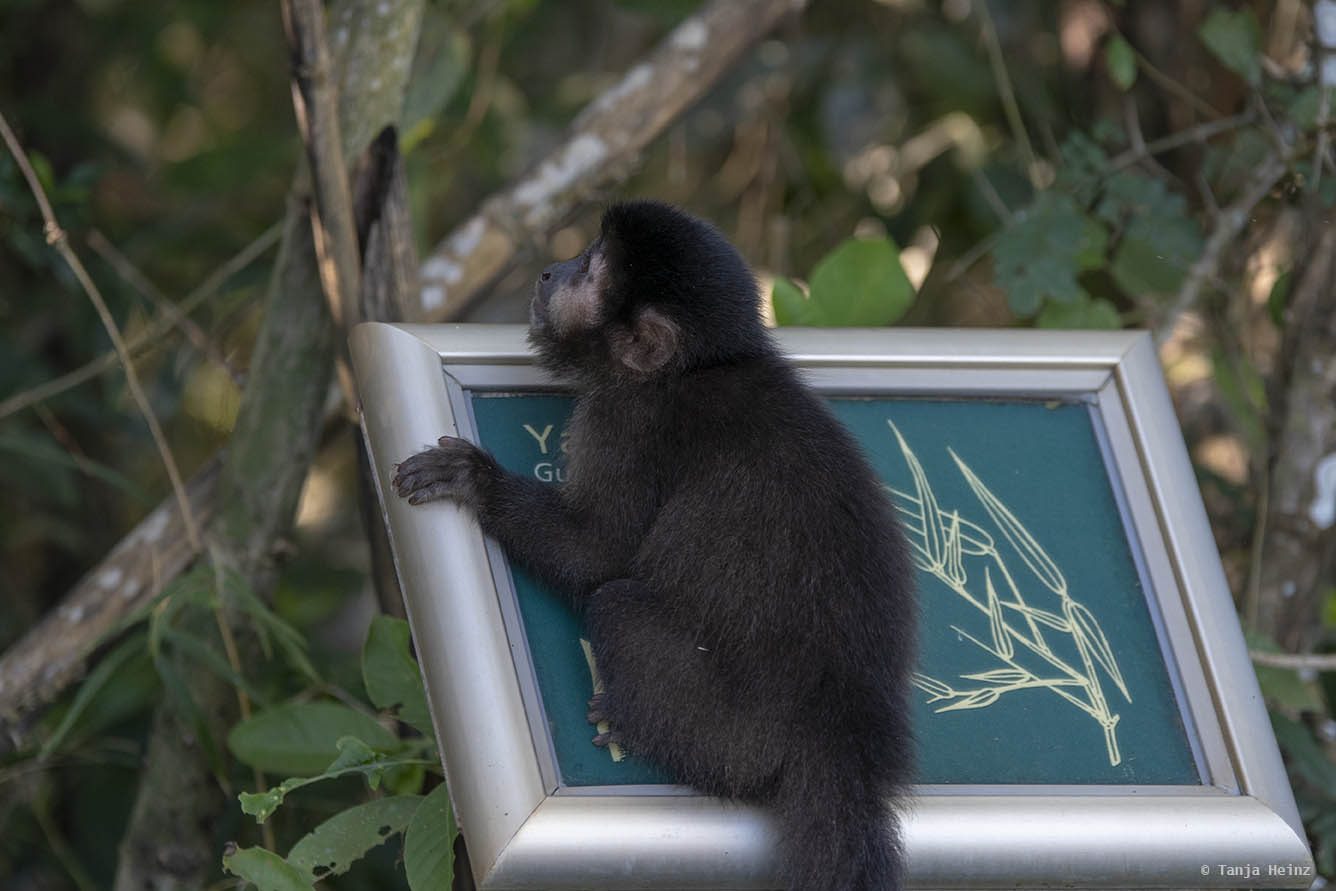
However, the bigger monkey did not share anything with the smaller monkey. When he had finished he went back to the rubbisch bin to defend his food source. The smaller black capuchin monkey did not venture to get onto the rubbish bin. I guess he treated us as another competitor for his food source as he looked both to the smaller monkey and to us.
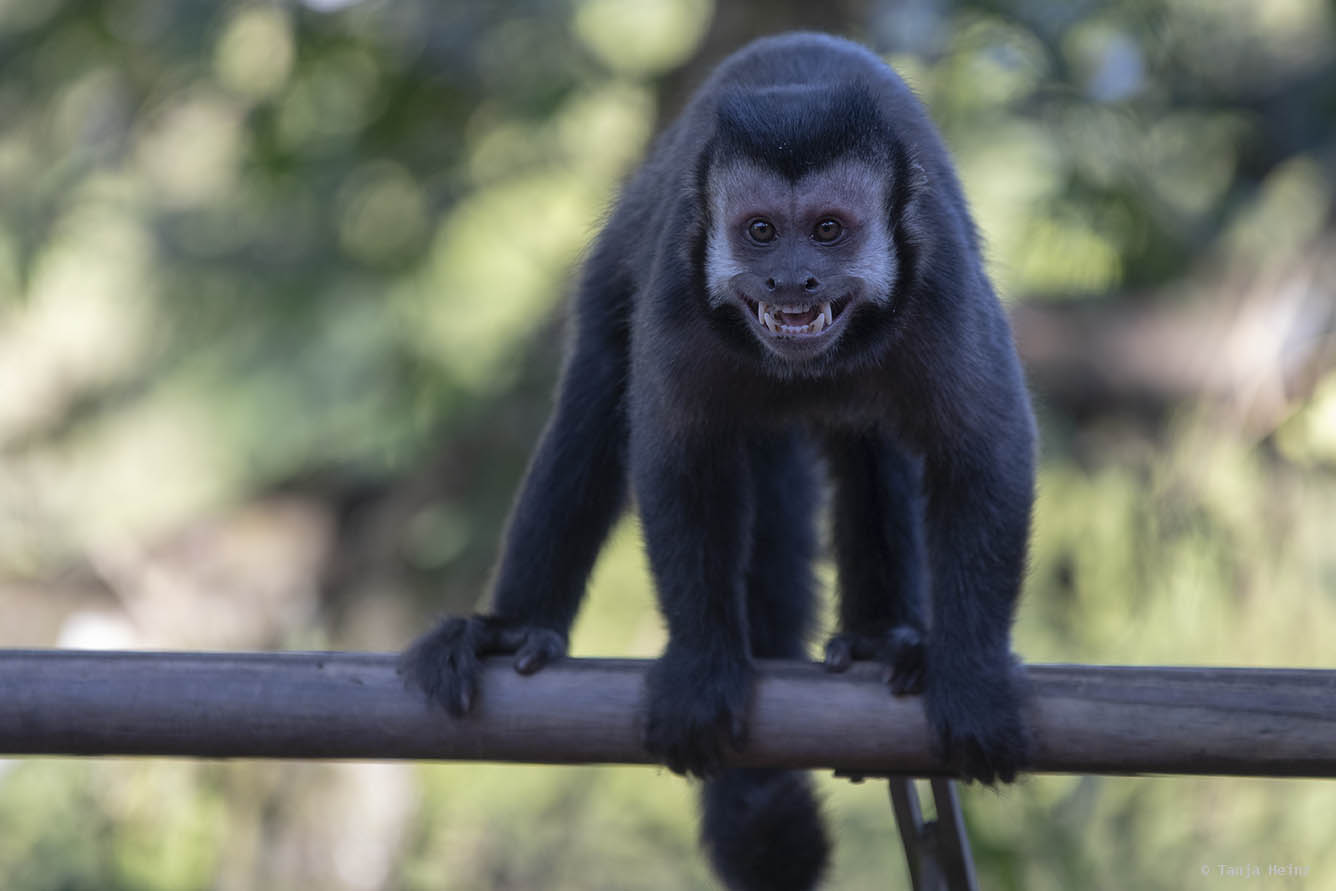
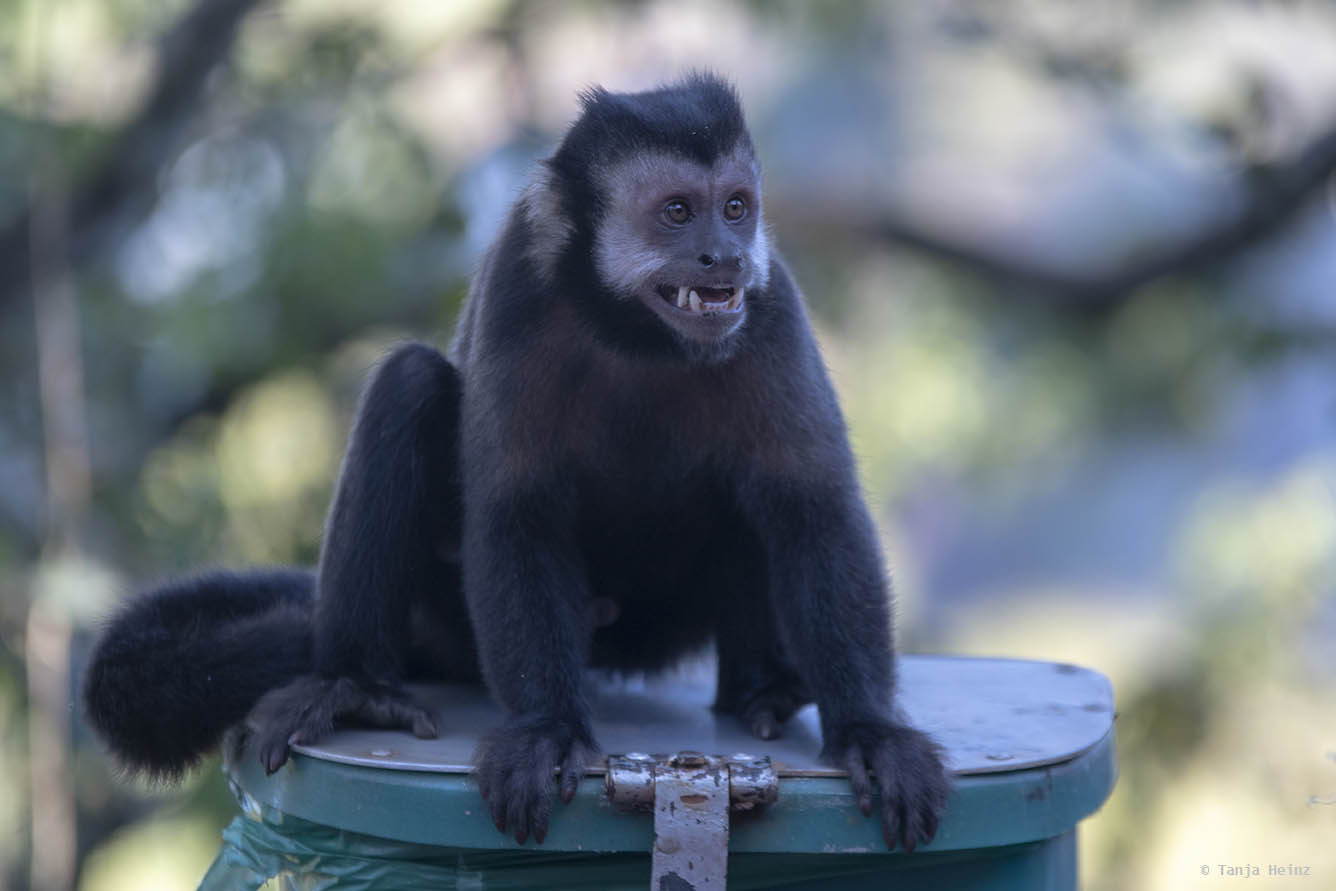
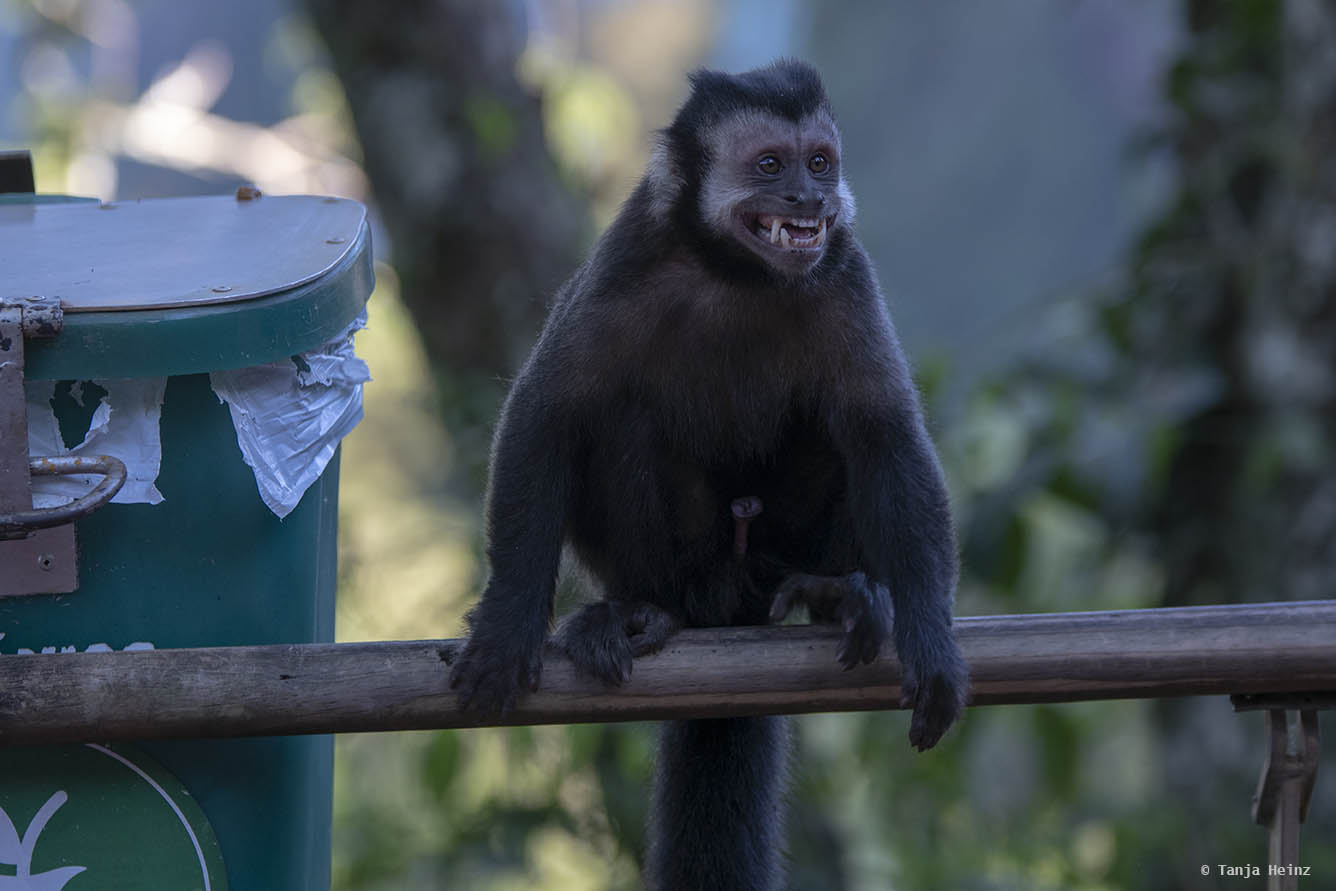
Finally, the bigger monkey relaxed again as neither us nor the small monkey attempted to get to the rubbish bin.
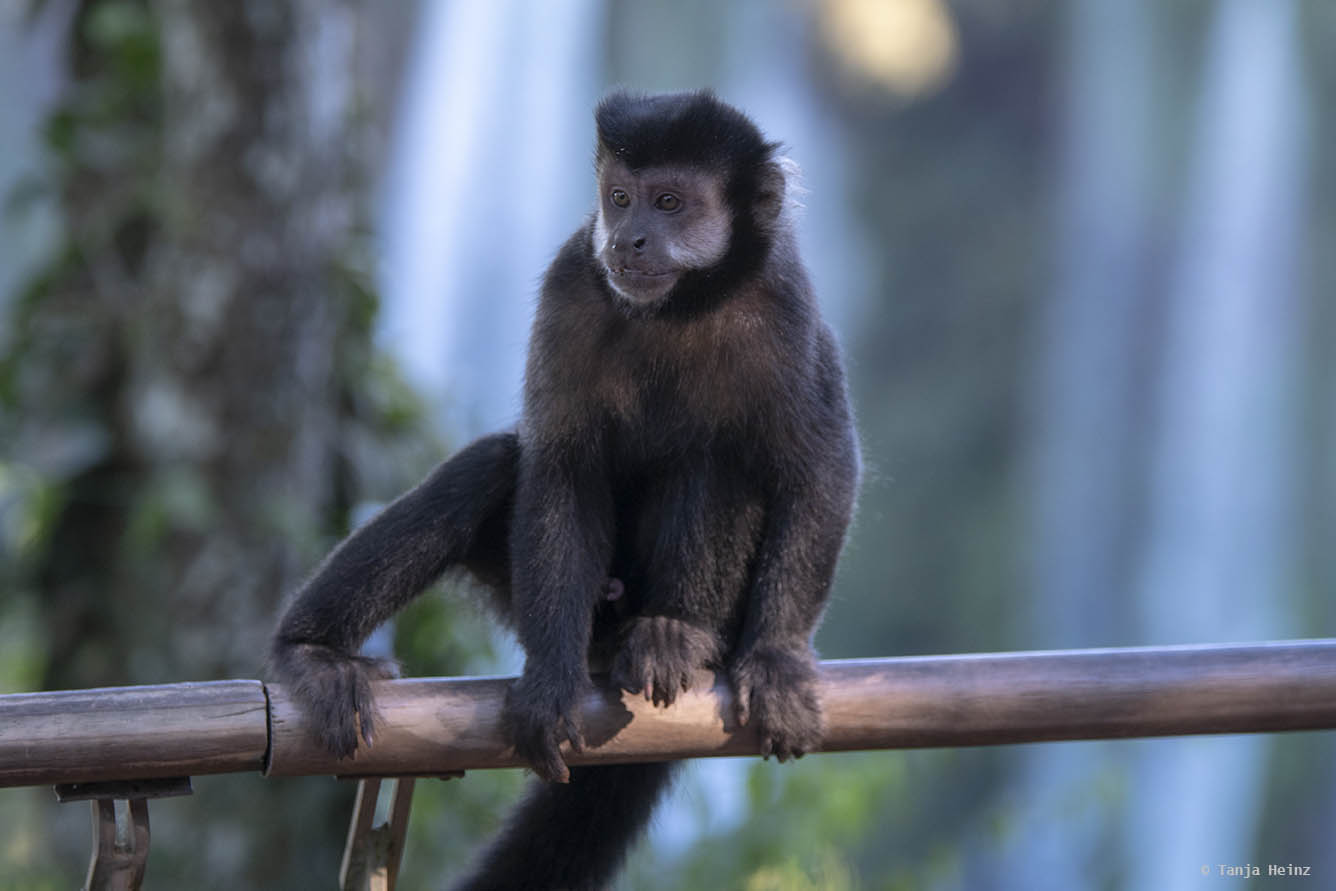
We left them behind and headed to the Lower Circuit.
It was already late in the afternoon. In just one hour the national park would close. One hour is definitely not enough to explore the Lower Circuit. It was again a very beautiful walk through lush forest. We got to an area with a palm tree. Just above us was a toco toucan (Ramphastos toco) making some noise. We saw toco toucans just one day before in Parque das Aves.
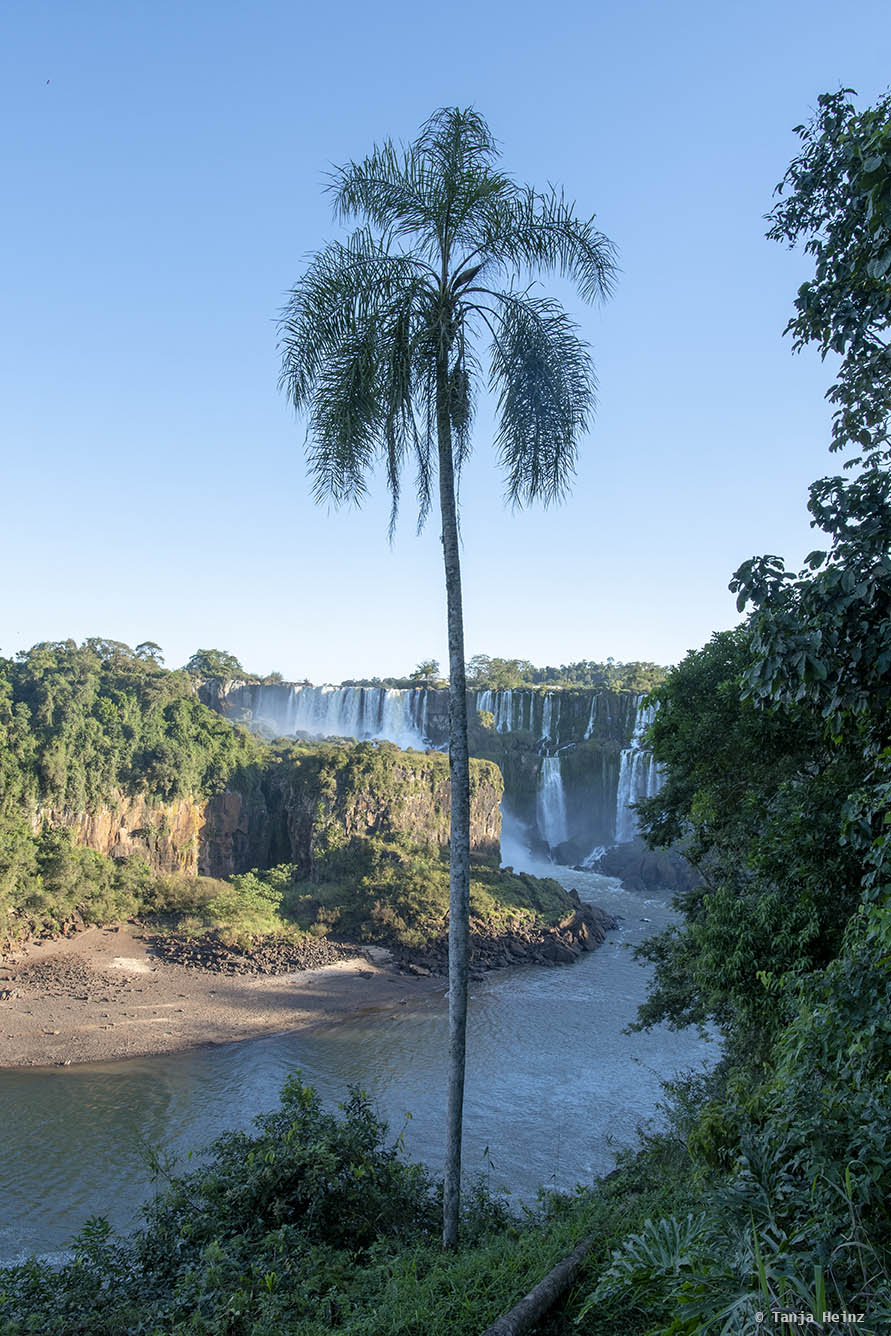
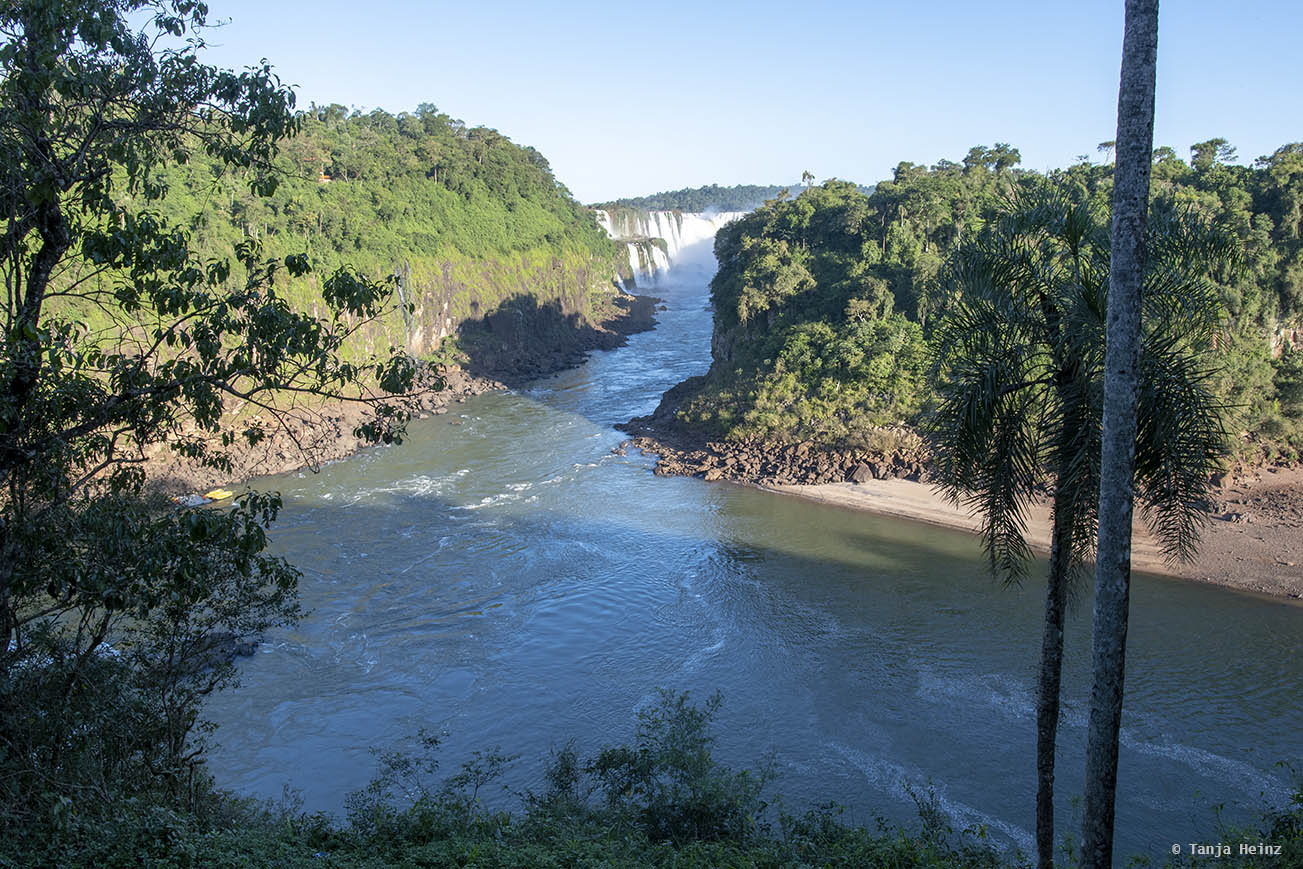
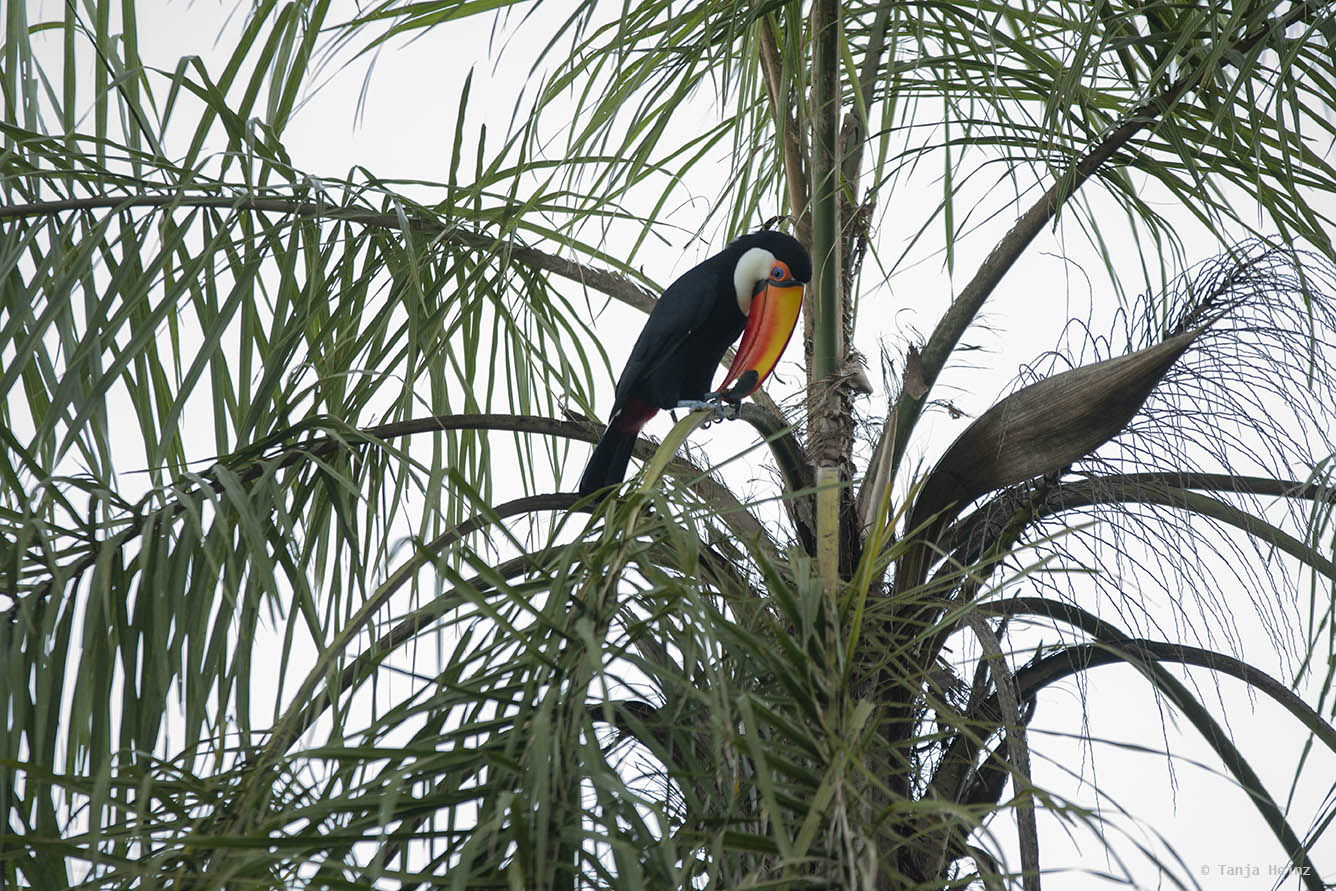
As he was flying from one tree to the other we almost forgot the impressive waterfalls behind us.
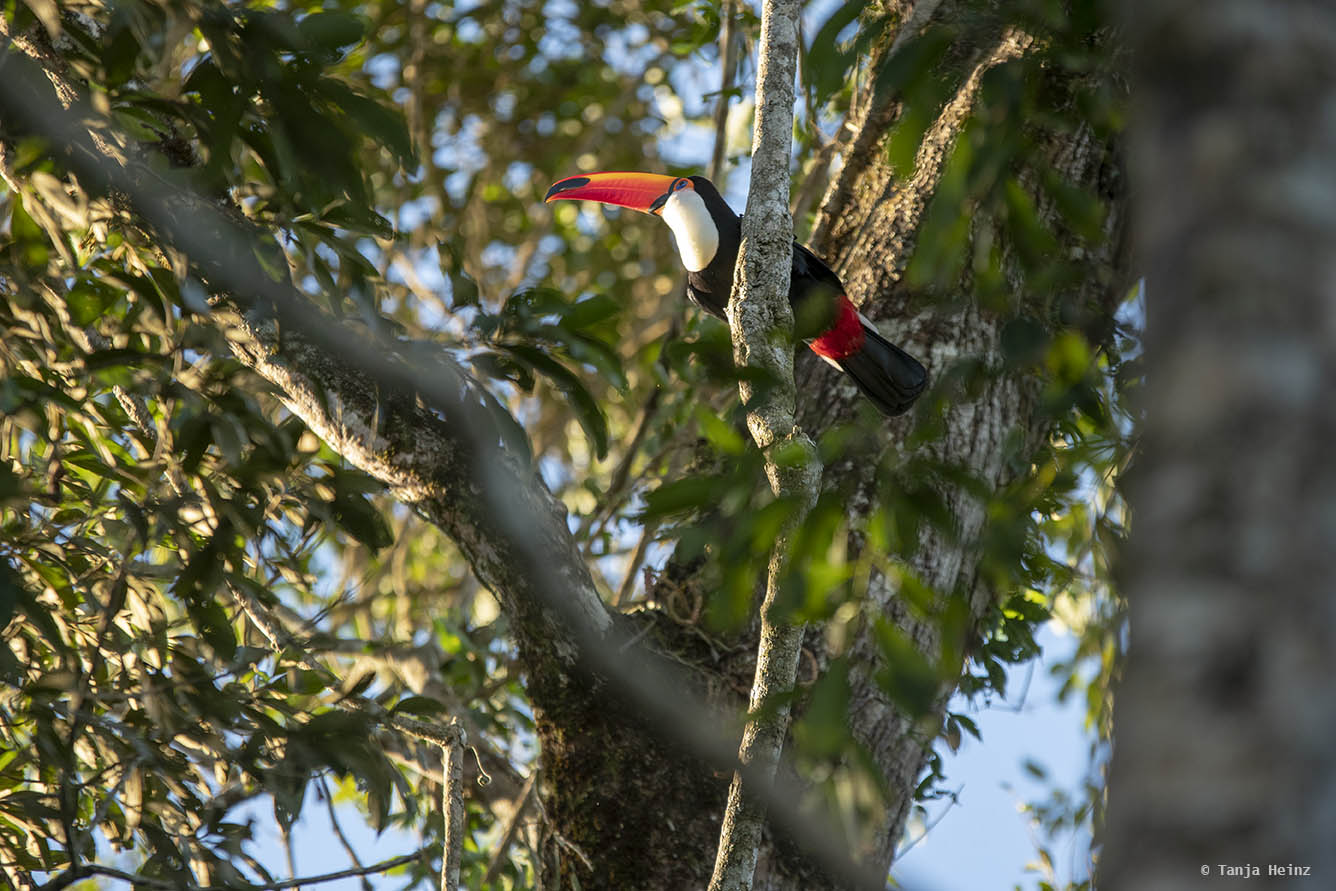
An employee came and asked us to leave in the next ten minutes. We took the last few minutes to admire the Iguazú Falls again on a platform quite close to the waterfalls.
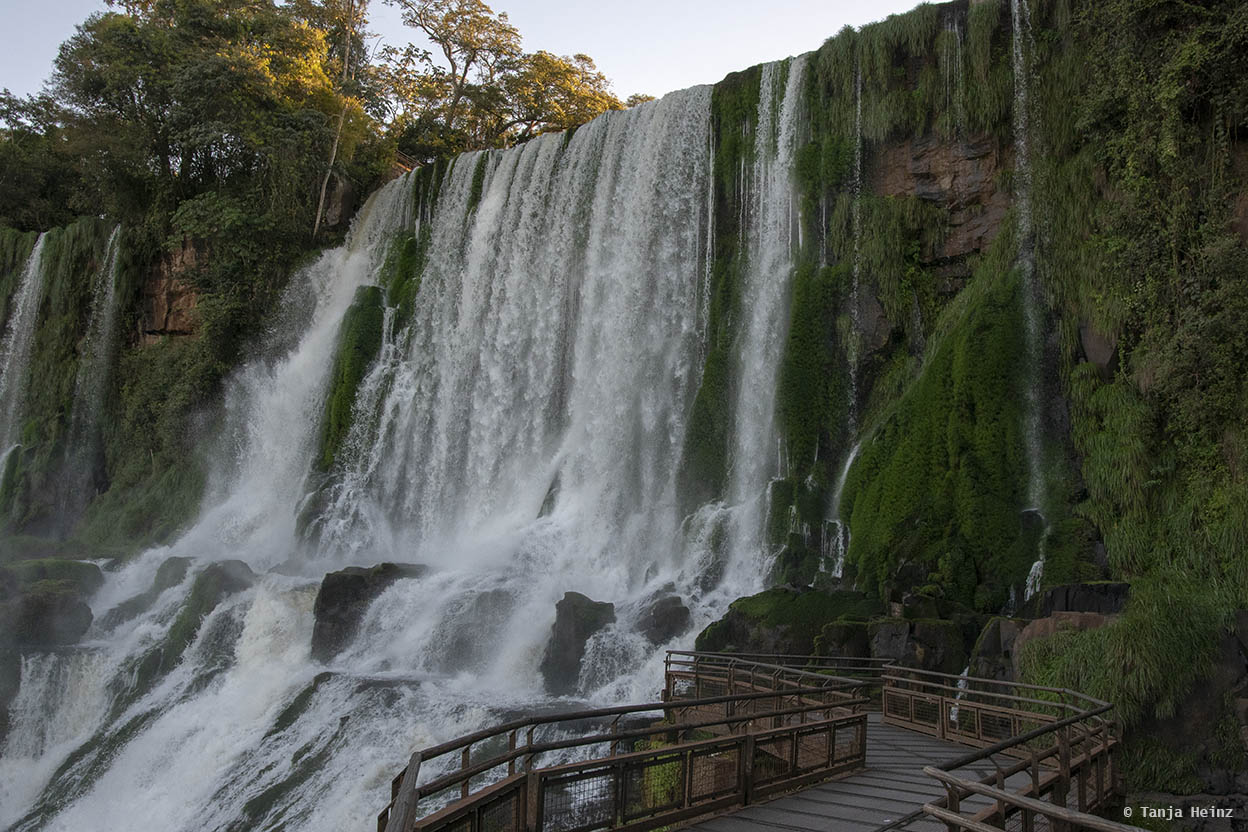
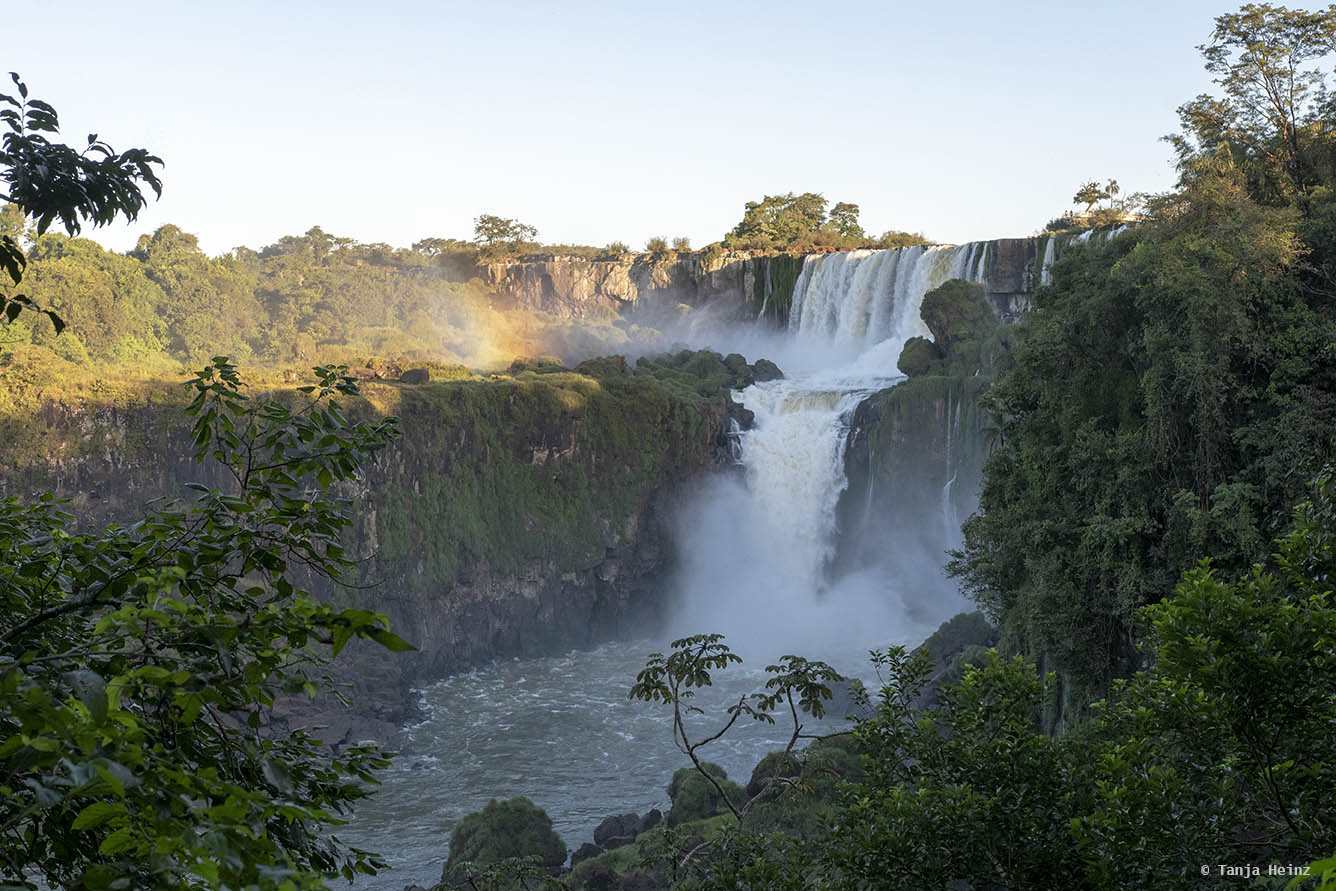
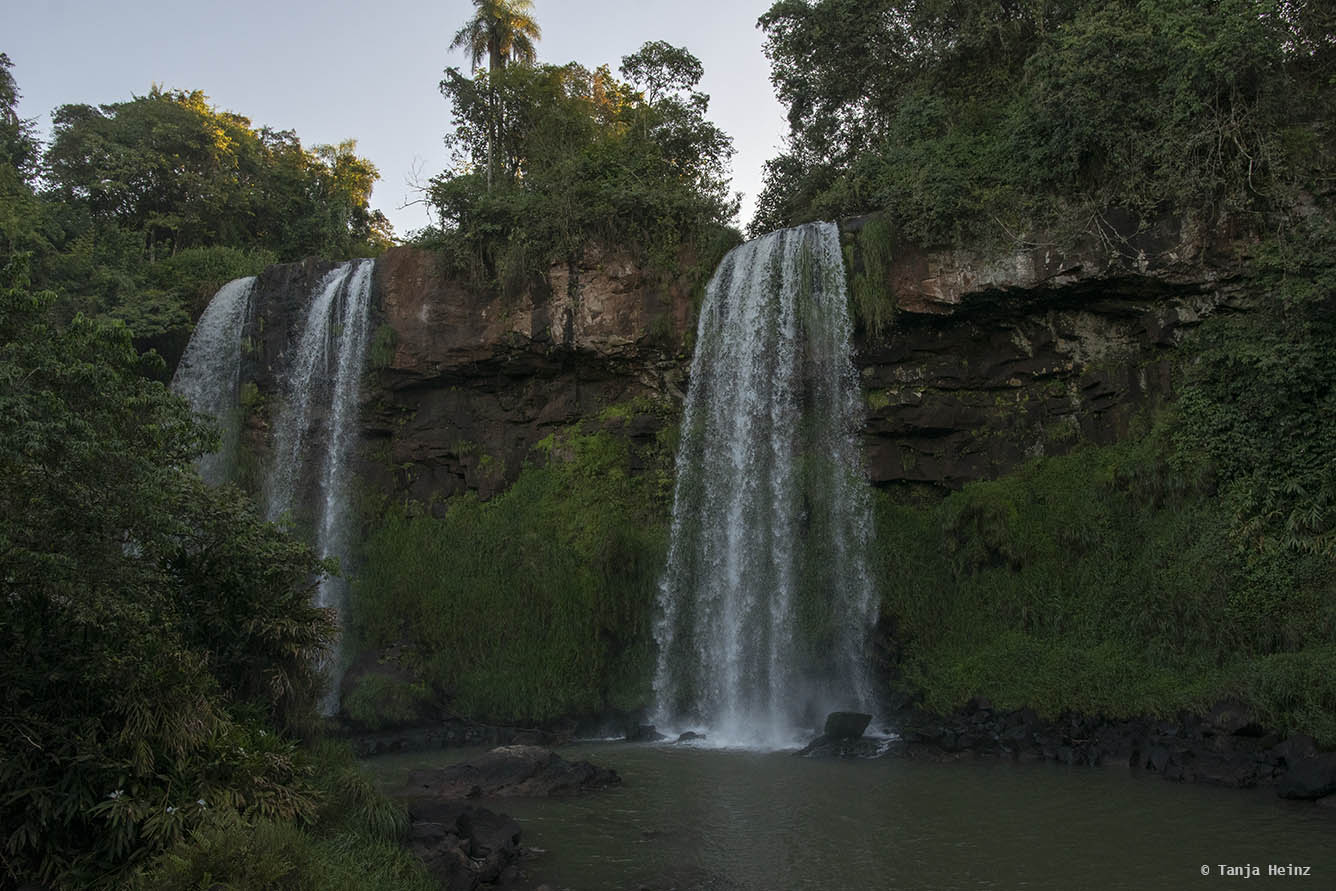
The day was definitely too short. We had to leave. On our way back to the Waterfall Station we met again toco toucans. But this time not only one, but a couple.
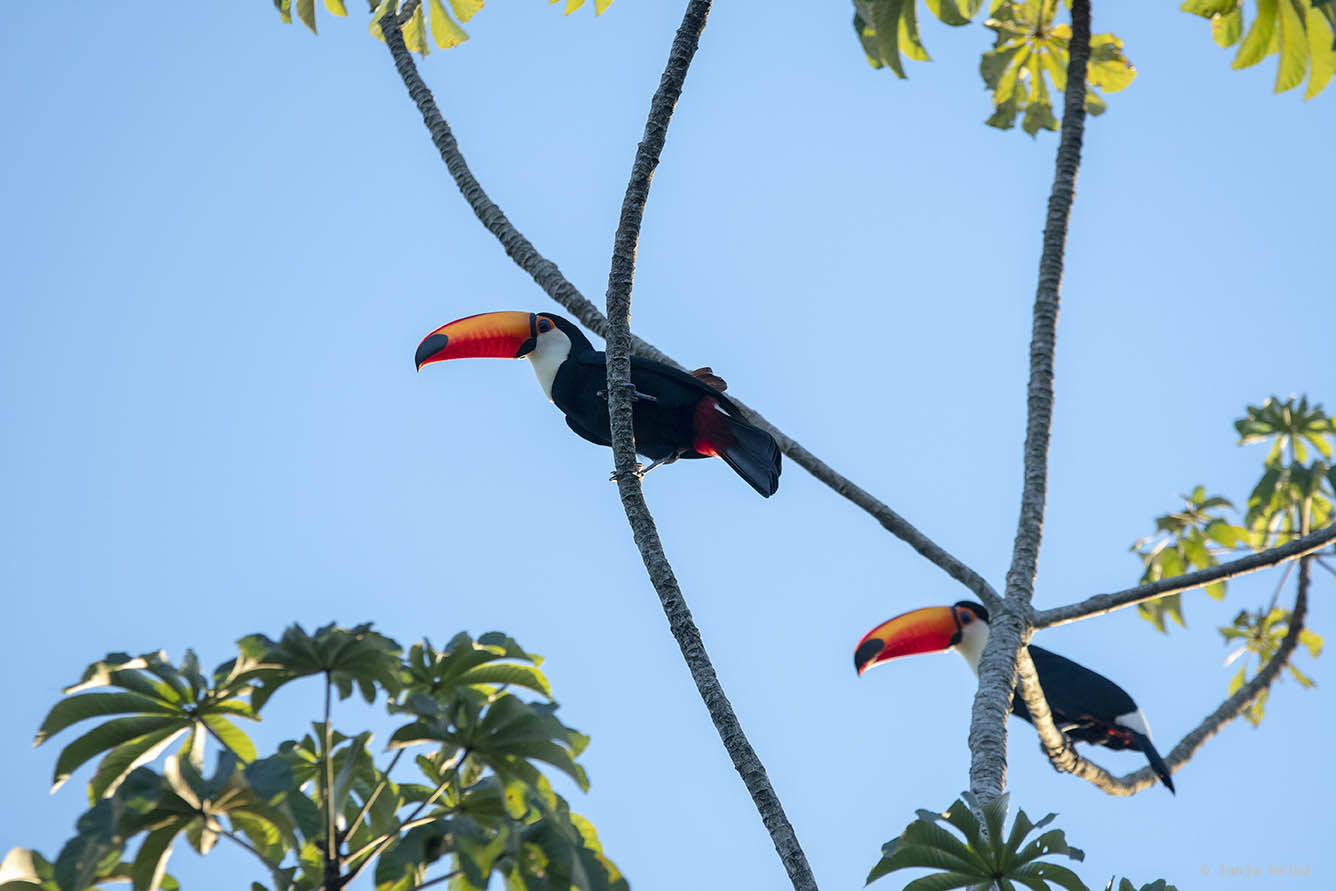
I took a last photograph and we headed back to the train which would get us to the entrance area again.
How to get to the Iguazú Falls
The Iguazú Falls in Argentina are easy to reach from Foz do Iguaçu. At first we took a bus at one of the bus stops along the Avenidas das Cataratas. You won't miss the bus. If your are not sure, ask the bus driver. The bus runs regularly between Foz do Iguaçu and Puerto Iguazú - a little town close to the Iguazú Falls. On our way from Foz do Iguaçu to Puerto Iguazú we had to pass the immigration office (Spanish: Centro de Frontera). According to our travel guide, the buses will not always wait for the passengers when they have to go through the immigration office. However, we did not experience this. Both bus drivers on our round trip waited for the passengers to finish with all formalities. If they do not wait, you might have to buy another bus ticket (again according to our travel guide). We could enter Argentina without visa, but anyway you should check beforehand if you need one. I’m German and my travel companion Brazilian. So we had no problems to get through the Brazilian and Argentinian immigration office. The whole procedure took about 15 minutes and the whole journey from Foz do Iguaçu to the bus station in Puerto Iguazú less than one hour.
In Puerto Iguazú we had to take another bus to get to the Iguazú National Park. This bus drive takes less than half an hour, but we had to wait about half an hour for the next bus to the Iguazú Falls. Therefore, I would not recommend to visit both the Brazilian and Argentinian side on one day if you rely on public transportation (if you have a car, I wouldn’t recommend it neither).
Tip: If you rely on public transport, check when the last bus to Foz do Iguaçu leaves in the evening. We took the last bus and had to wait about an hour. The bus was about half an hour late and we were afraid that we might have missed the bus. Luckily, we were not the only people waiting for the bus to Foz do Iguaçu.
Practical information for the Iguazú National Park
The Iguazú National Park opens daily from 8 a.m. to 6 p.m. The ticket includes the Ecological Jungle Train, but also access to several walking trails like the Upper Circuit, Lower Circuit and the Devil’s Throat.
The general entrance fee is 700 AR$ for adults. People from Brazil, Paraguay, Uruguay or Venezuela pay 560 AR$. Kids from 6 to 12 pay 180 AR$ (general) or 140 AR$ (Brazil, Paraguay, Uruguay or Venezuela). Please check the current prices on the official website of the Iguazú National Park.
We traveled without Argentinian pesos. We could pay everything with credit card.
More information about the Iguazú National Park
If you want to know more about the Iguazú National Park, try to check their official website. On the official website you can also find more information about what you can expect to see from January to December. Unfortunately, this information is only in Spanish.
If you are interested in South American coatis, please check my previous article about the Iguaçu Falls on the Brazilian side. You will find more information about black capuchin monkeys in another previous article about the Itatiaia National Park.
To get more information about the distribution of black capuchin monkeys and their conservation status, please check the IUCN website. Of course, you can find more information about this monkey species on Wikipedia.
Did you like this article? If yes, please feel free to share it. I'm also interested about your experiences with wildlife in very touristic places. Leave a comment if you want to share your thoughts about this topic.
